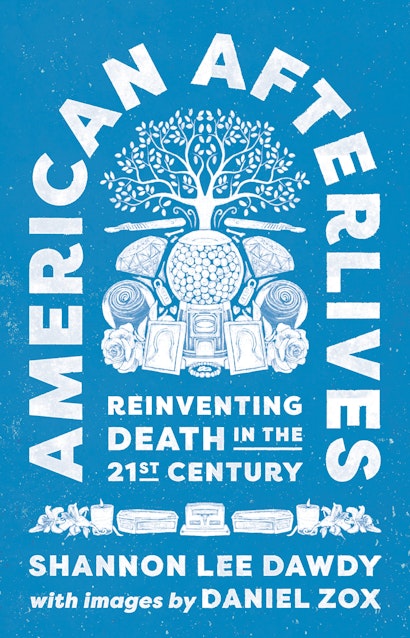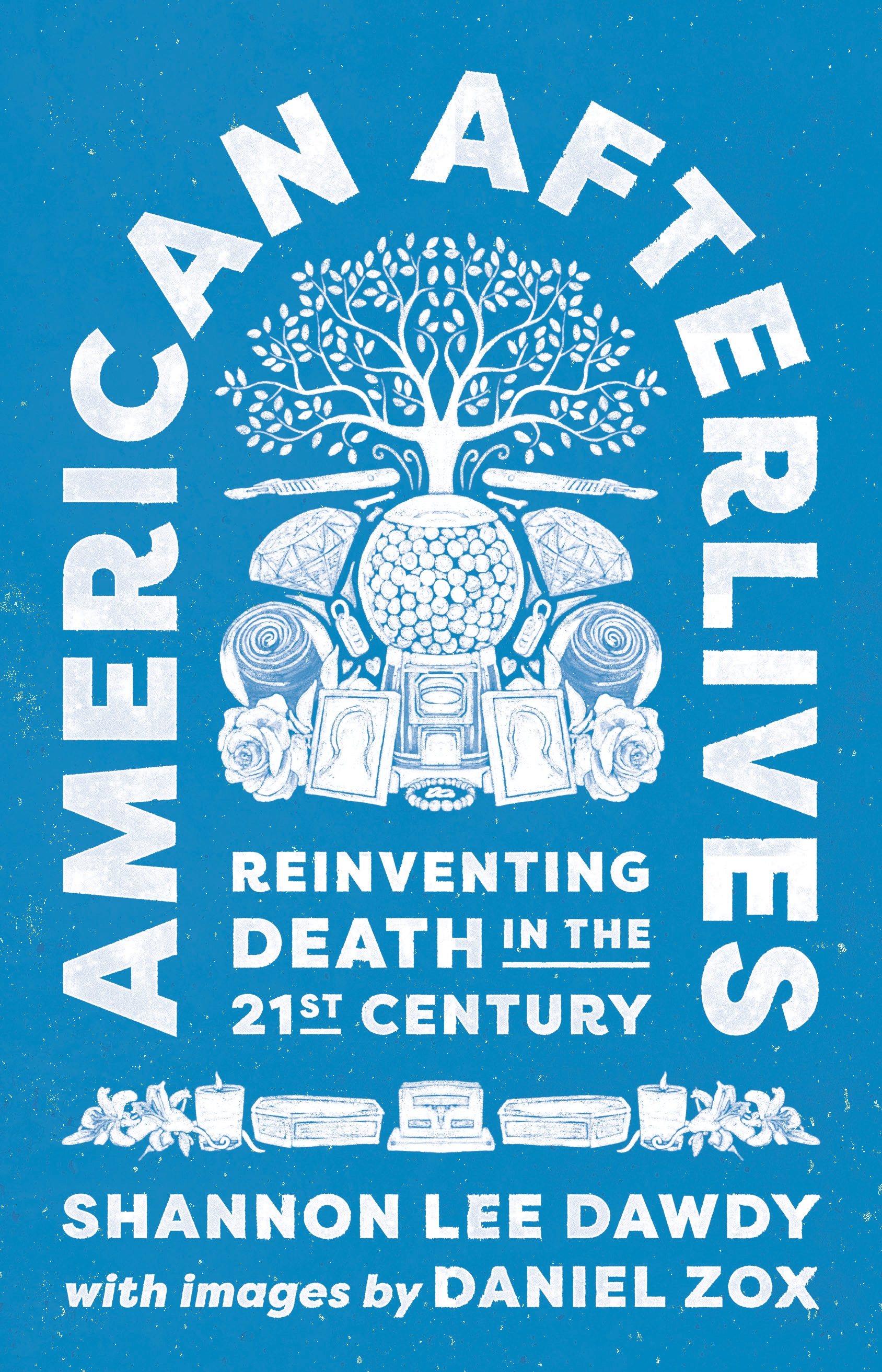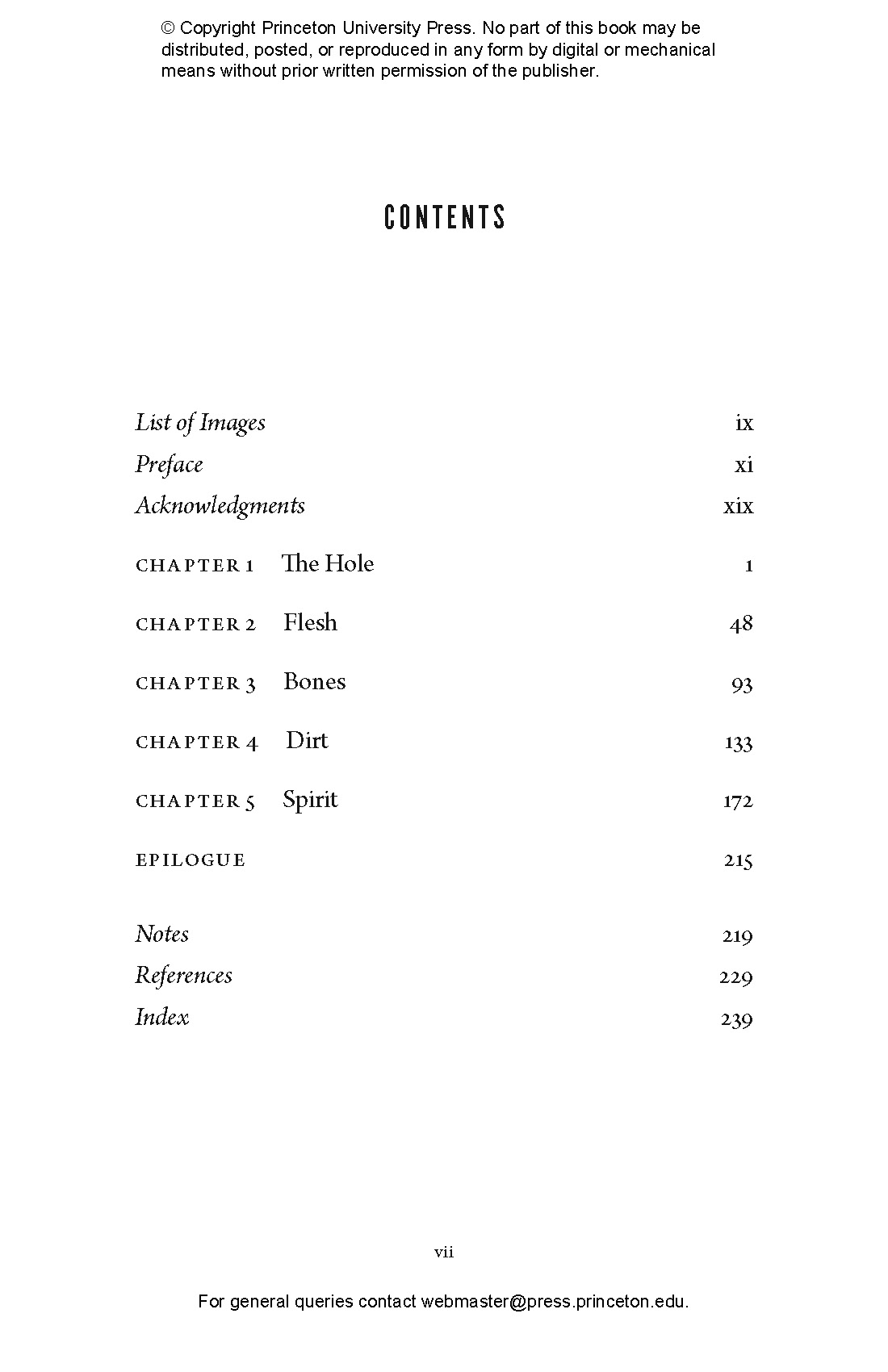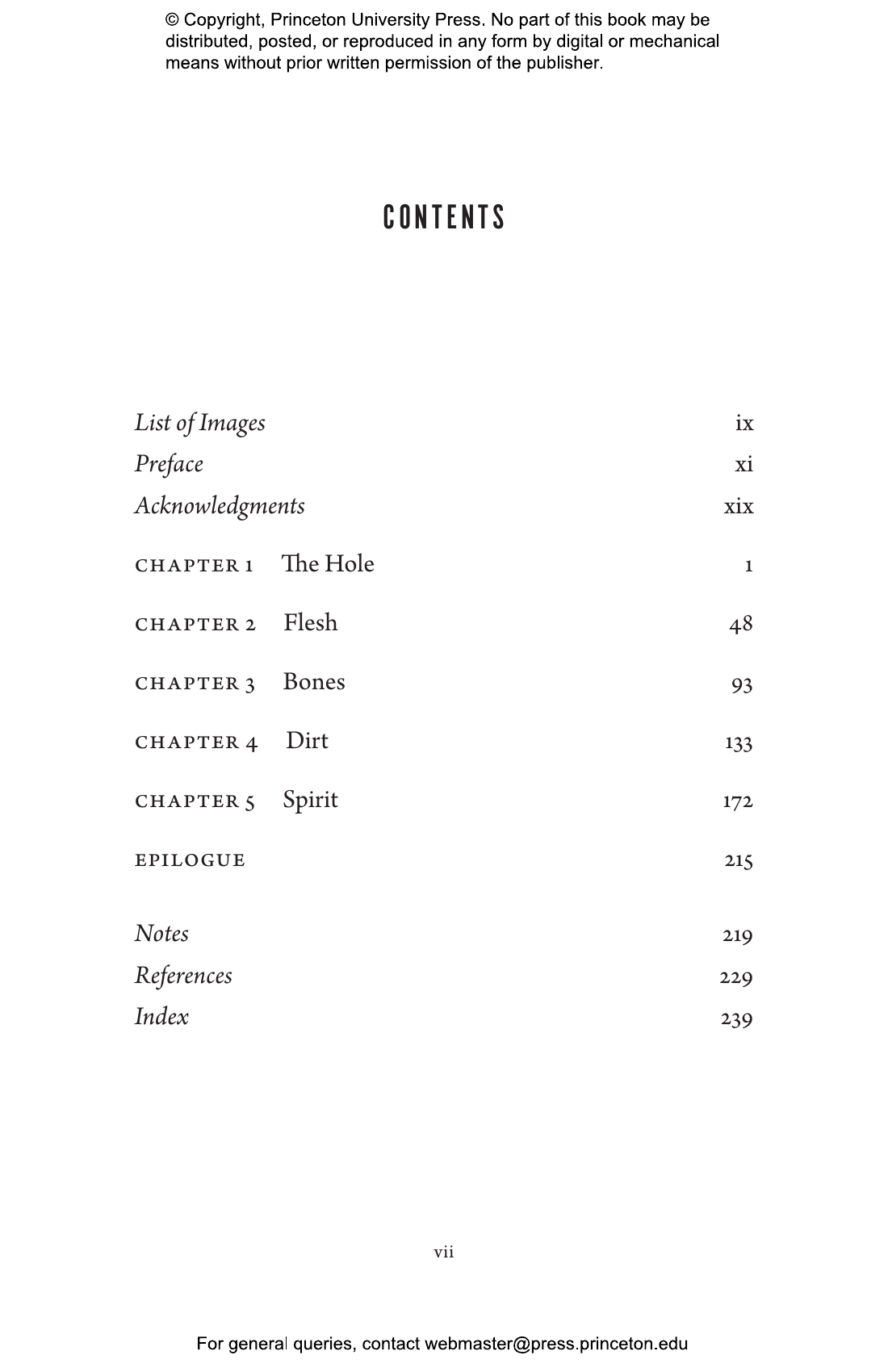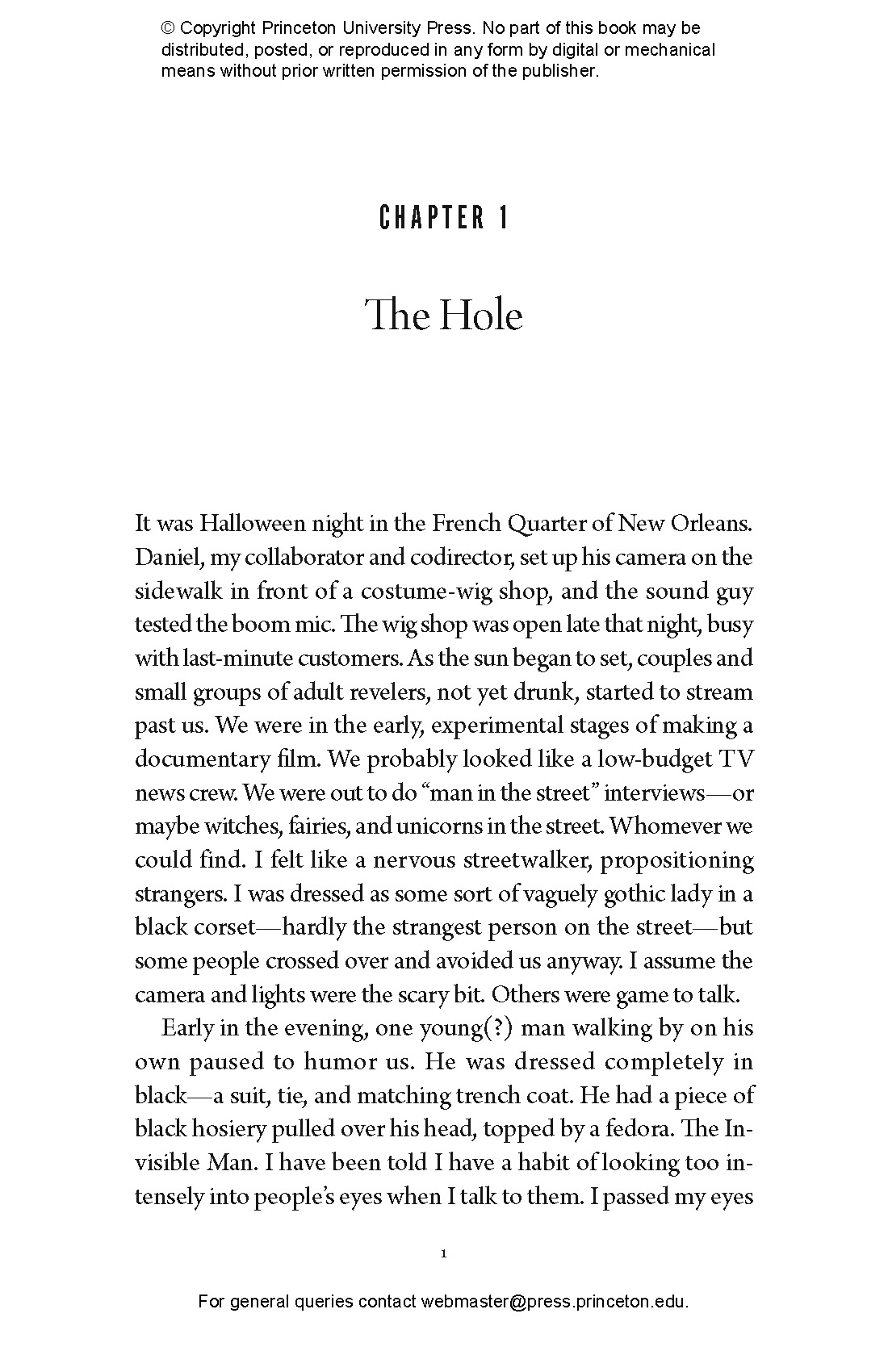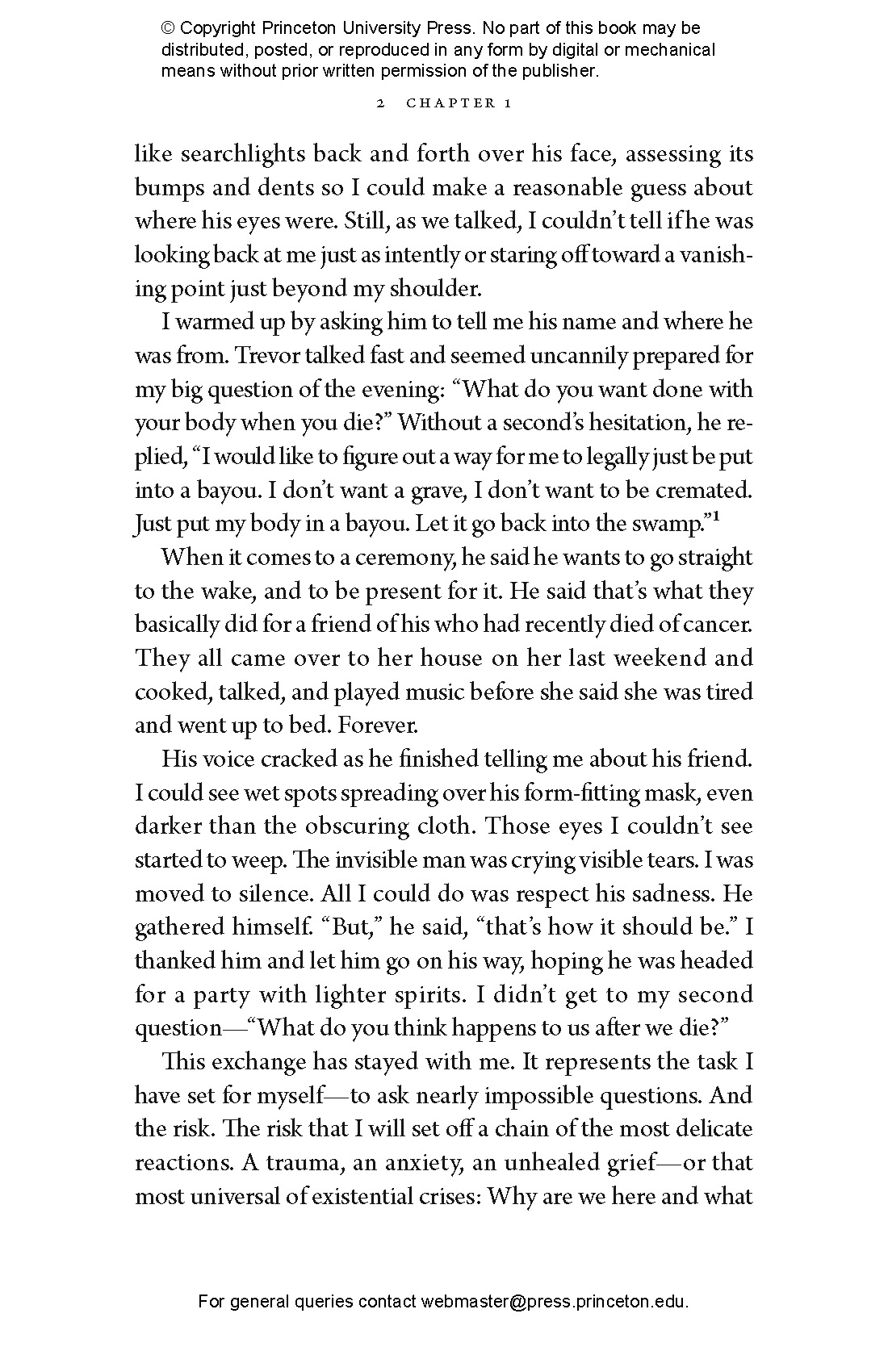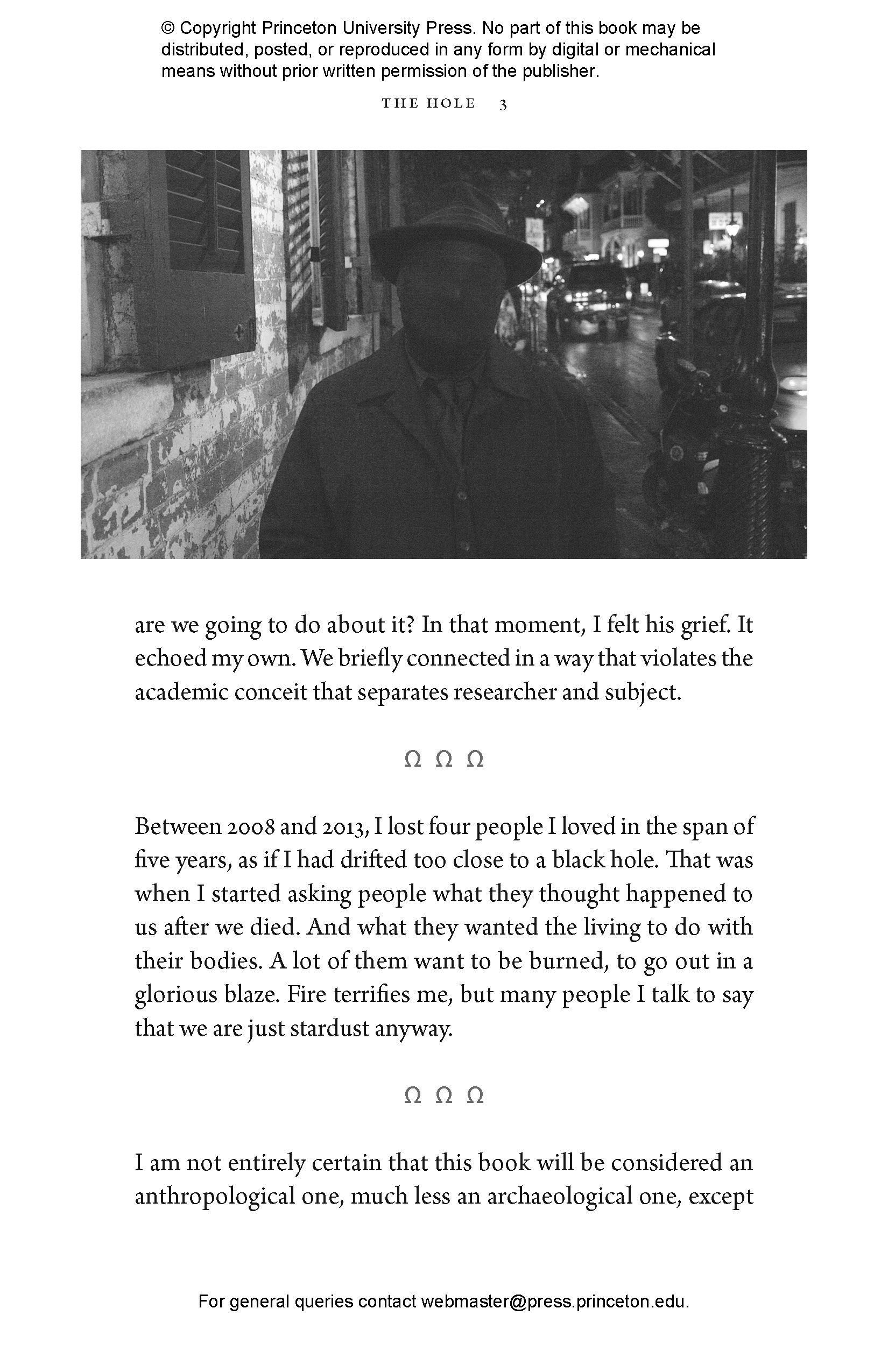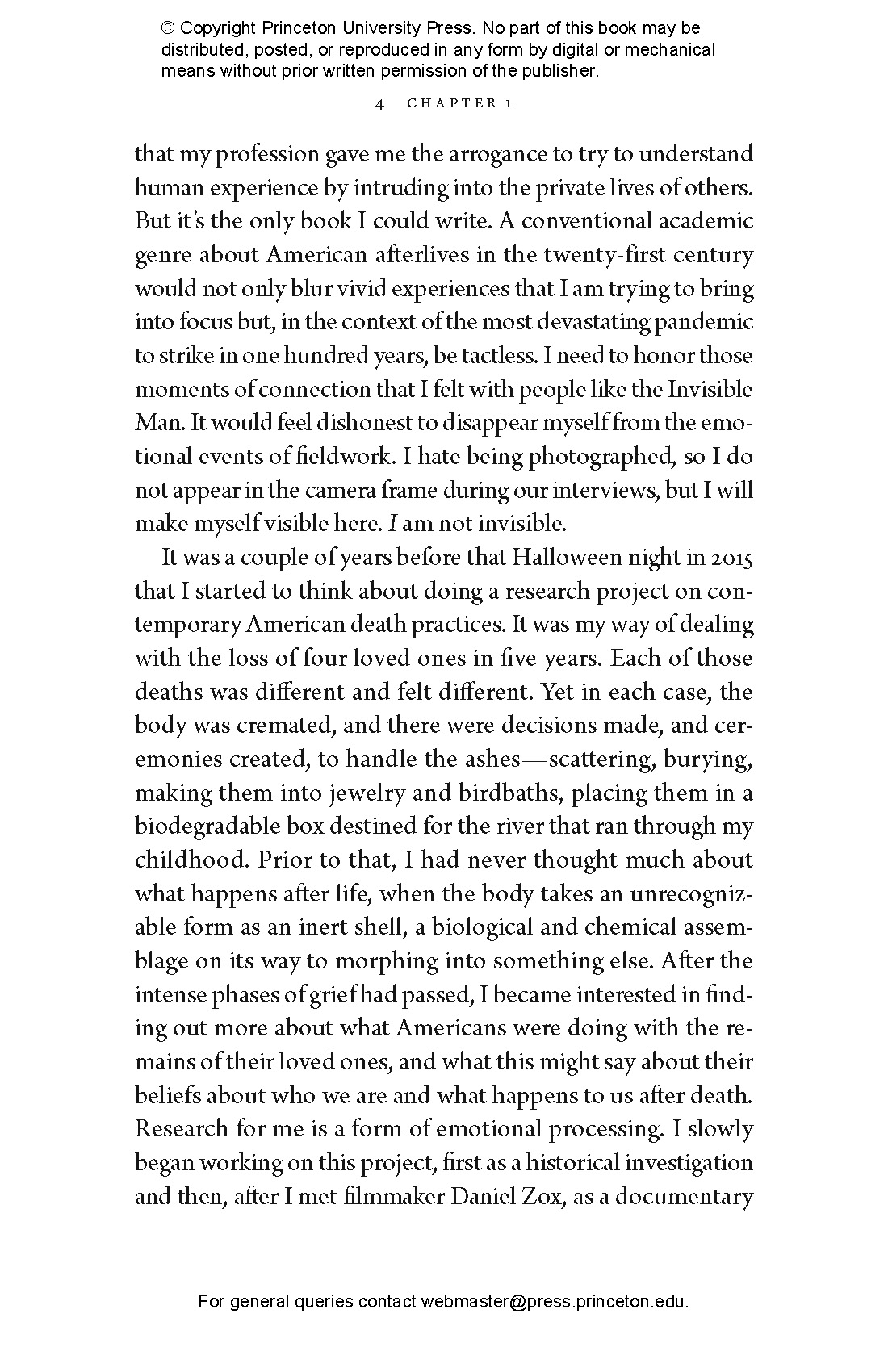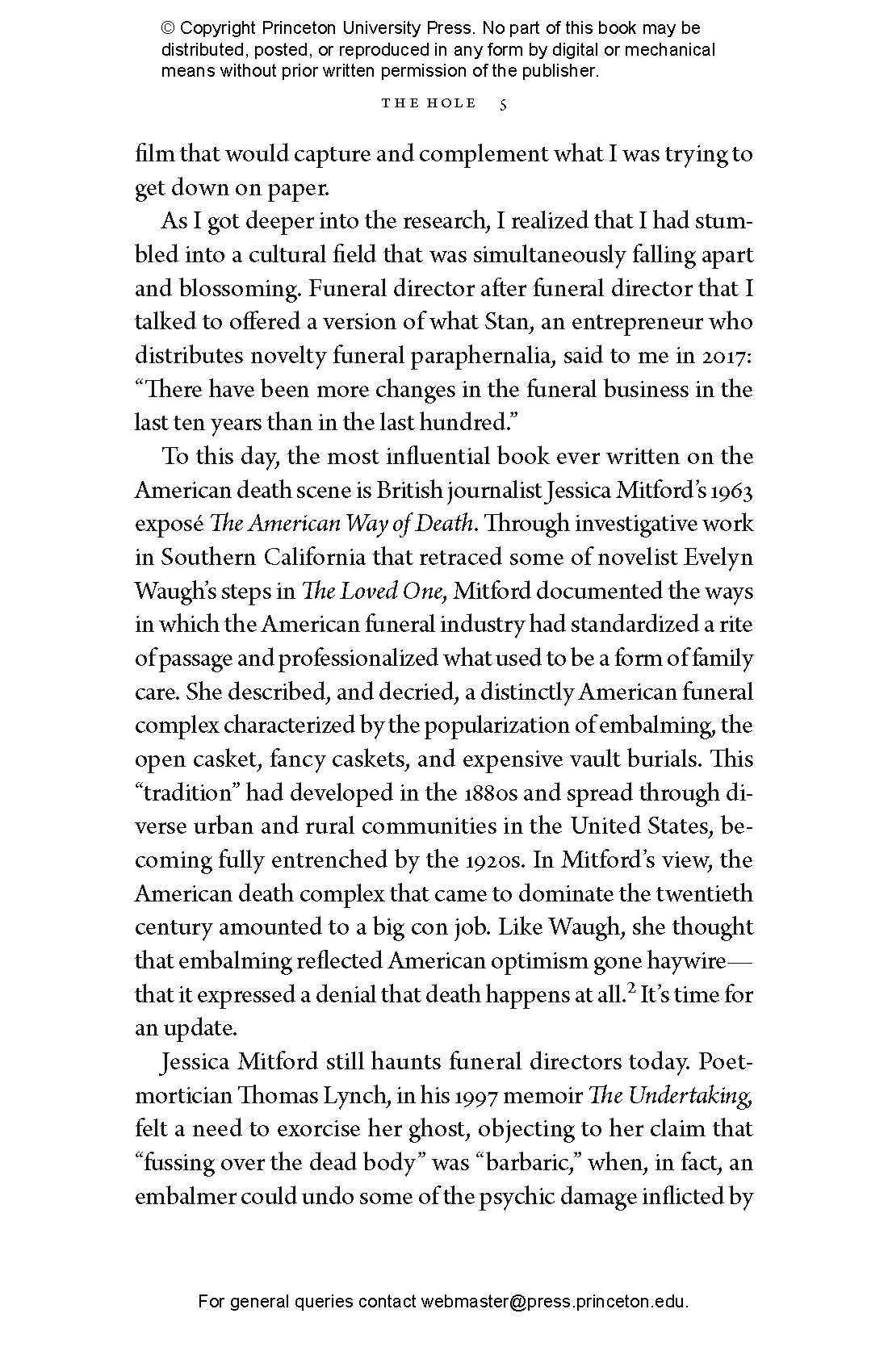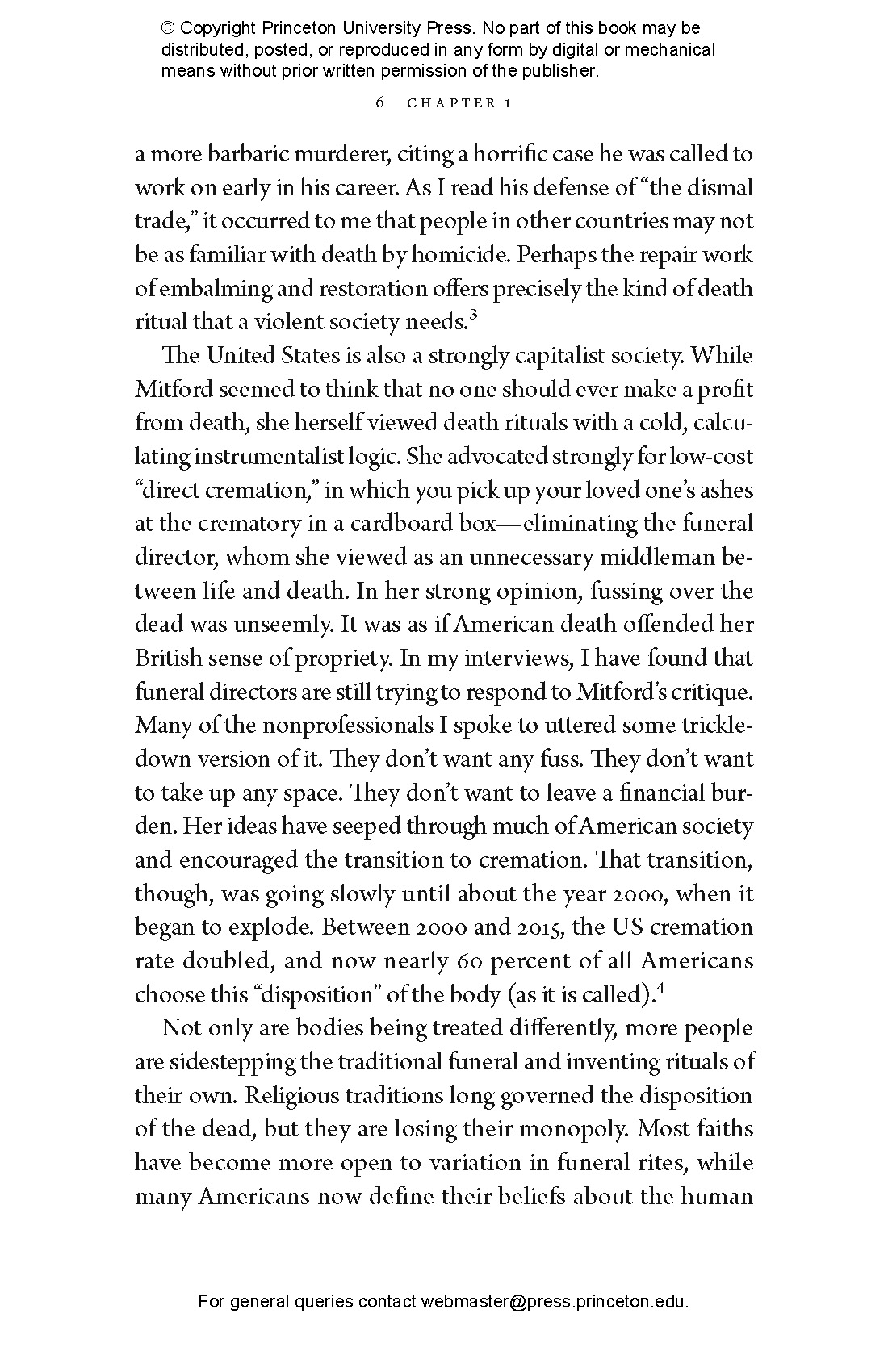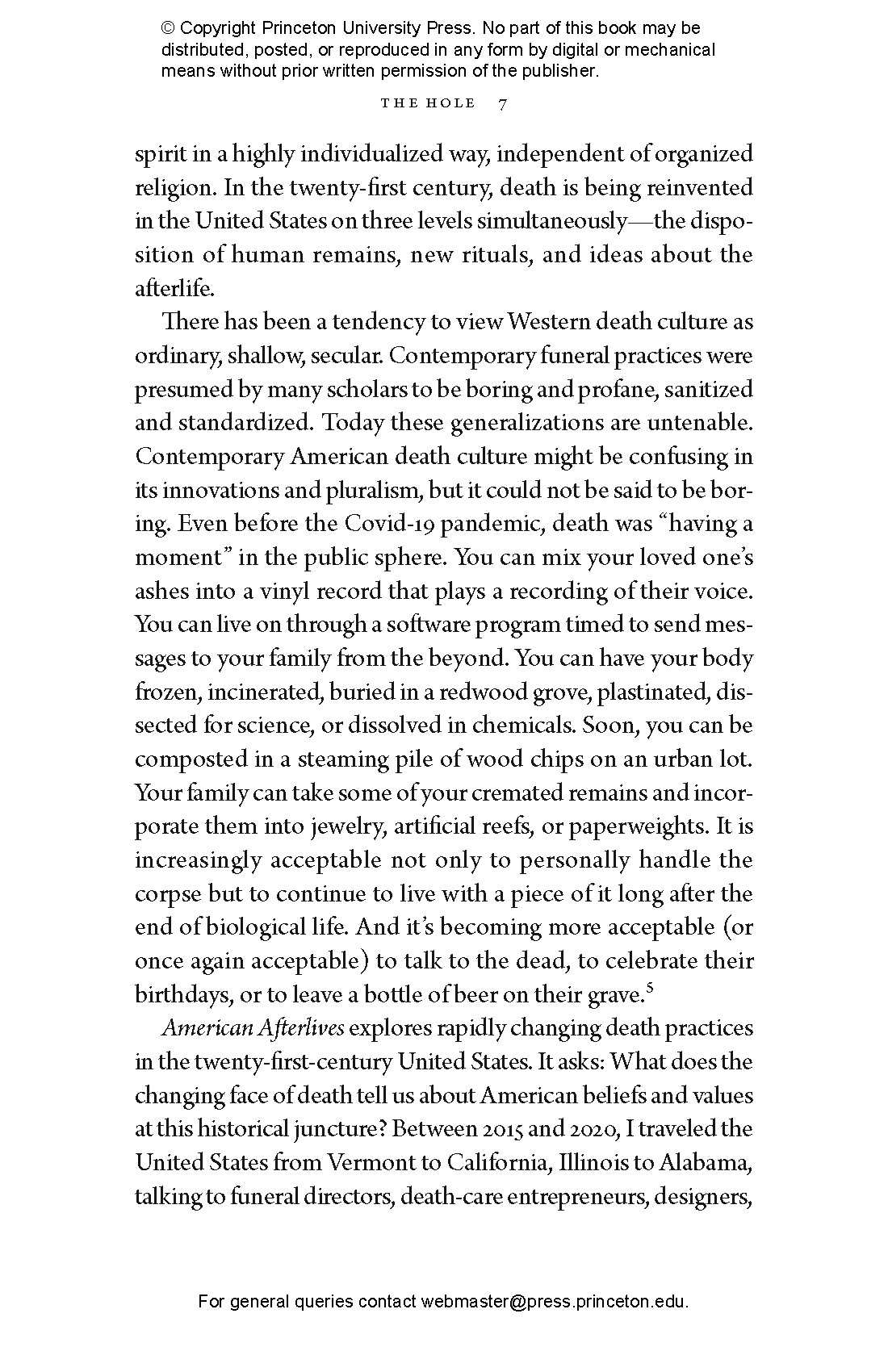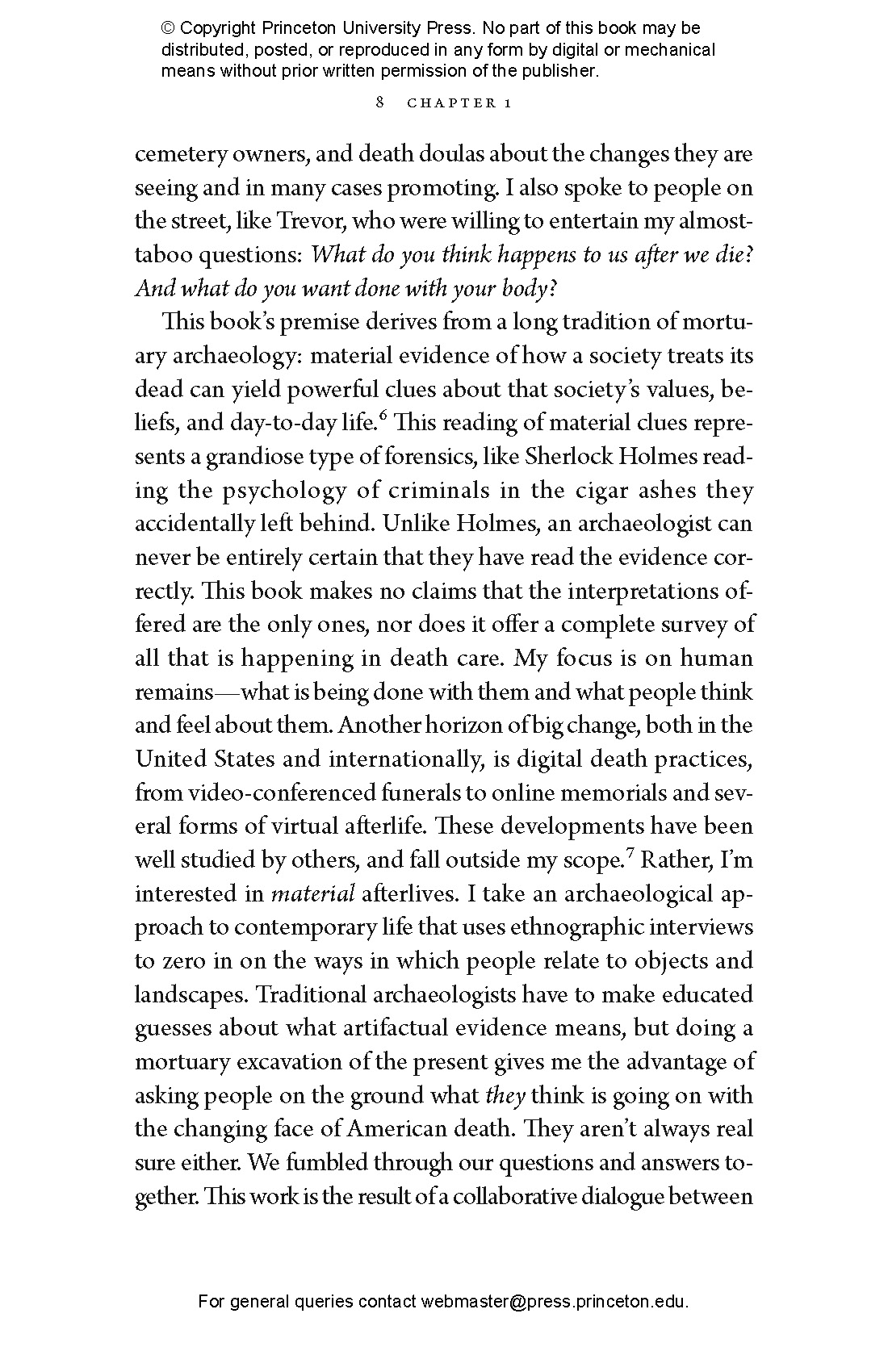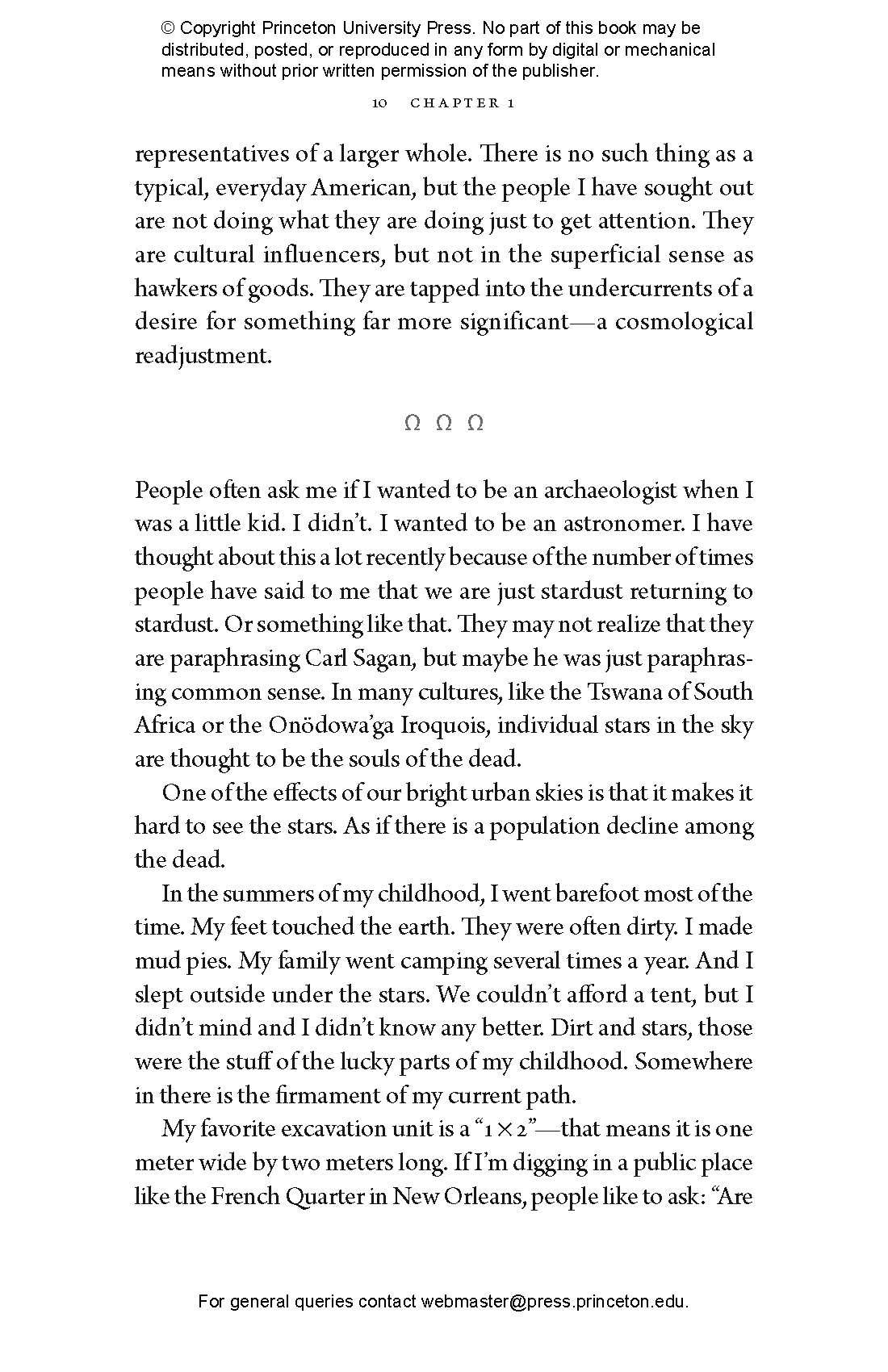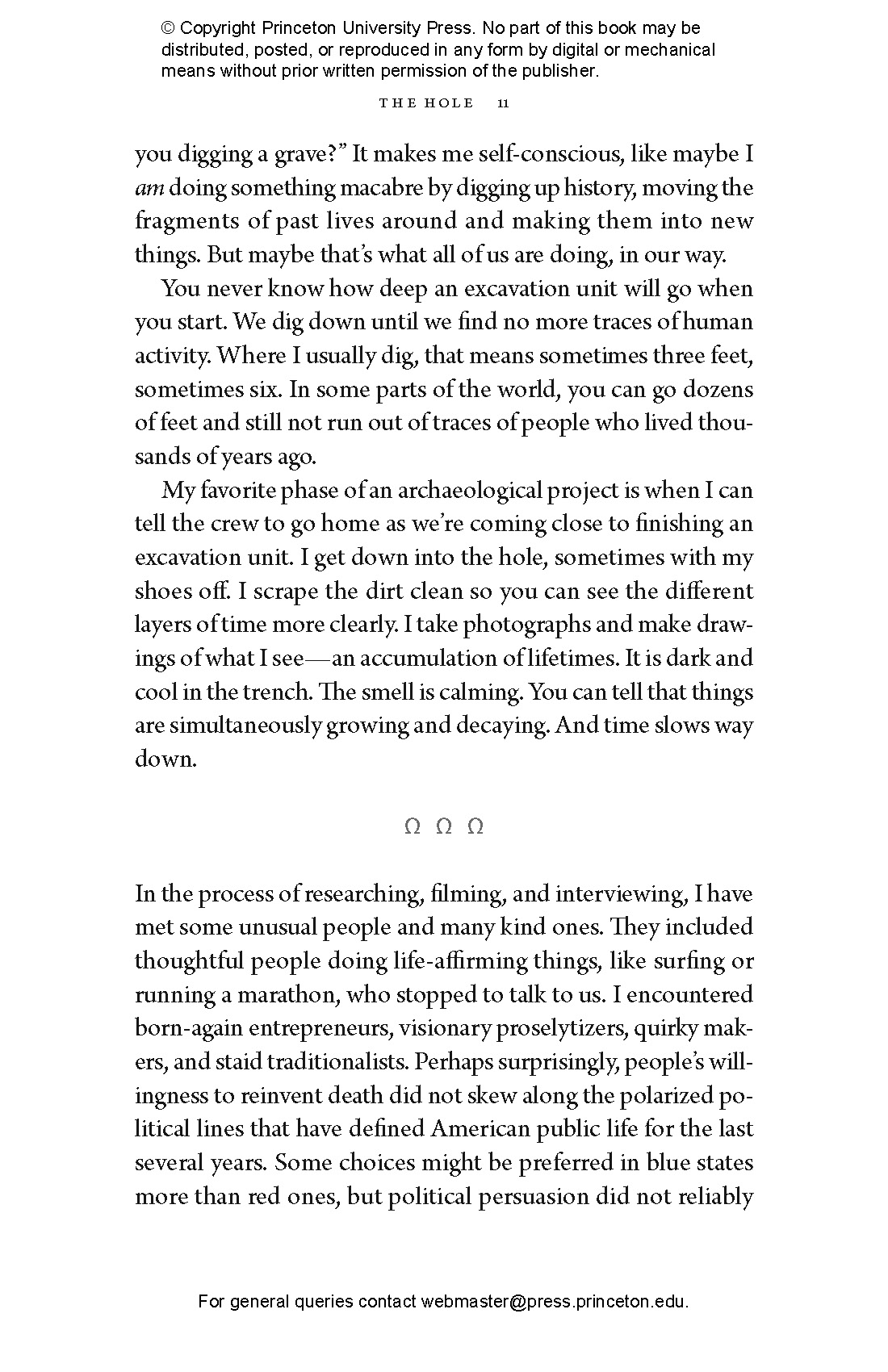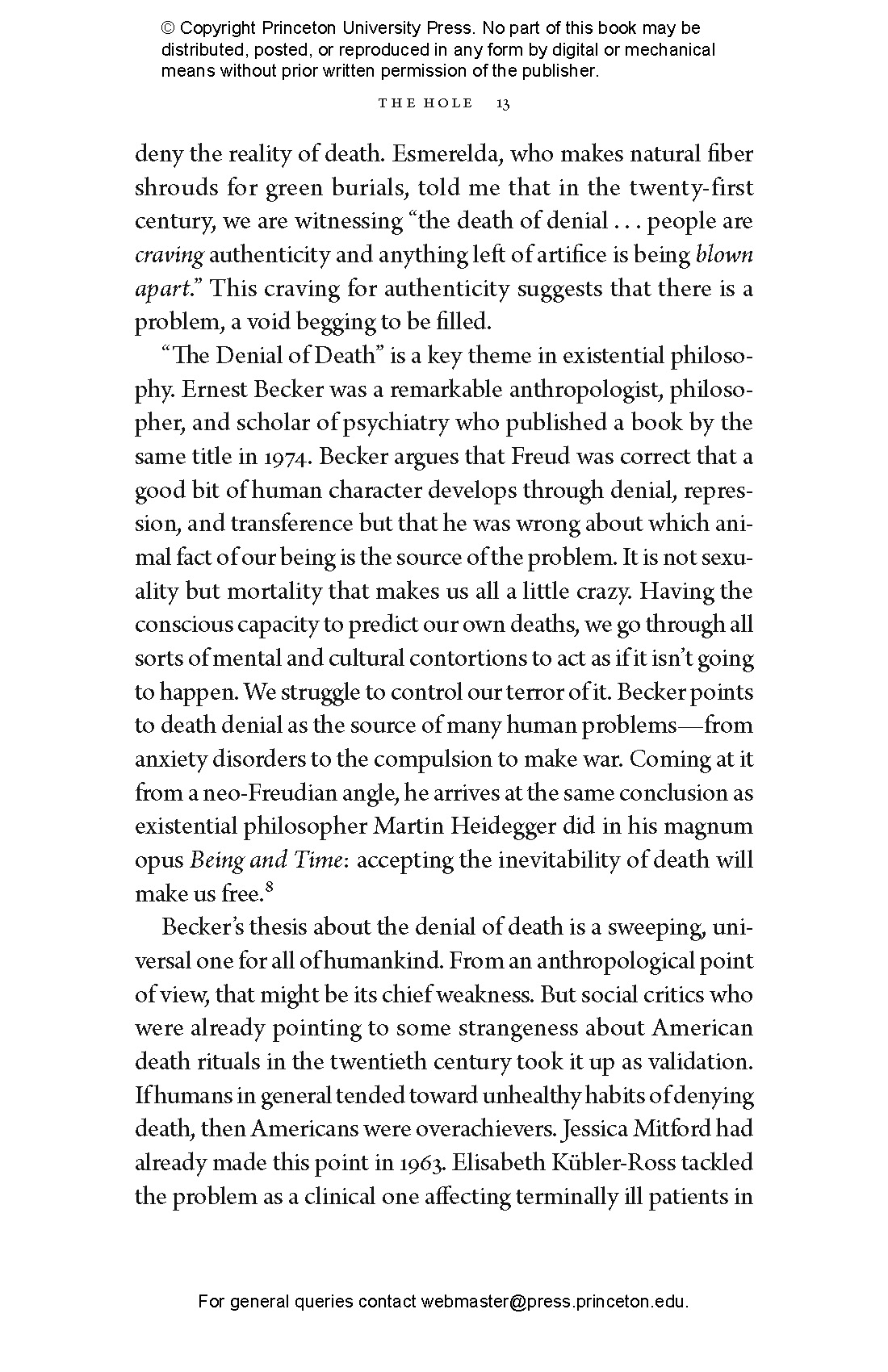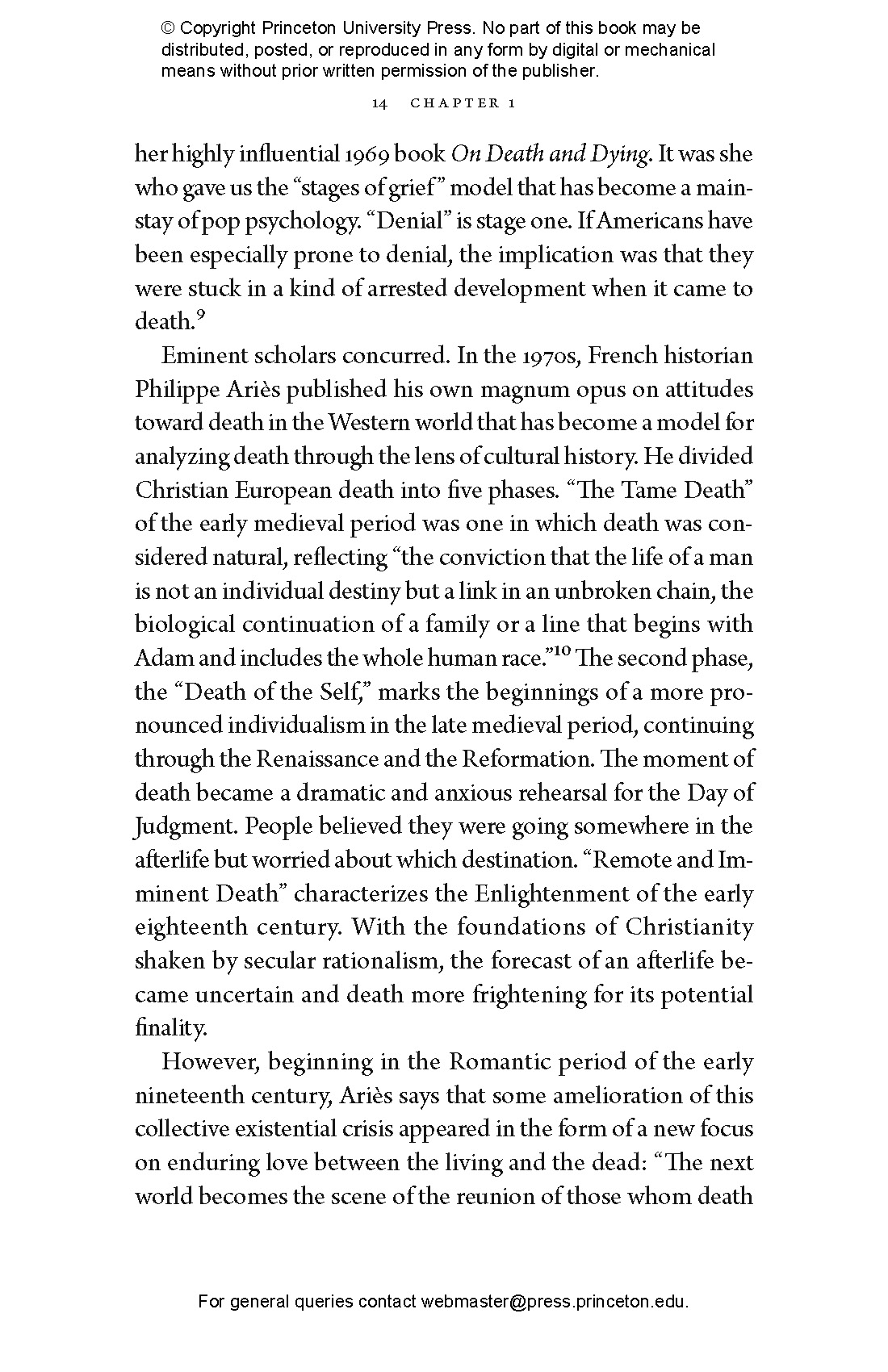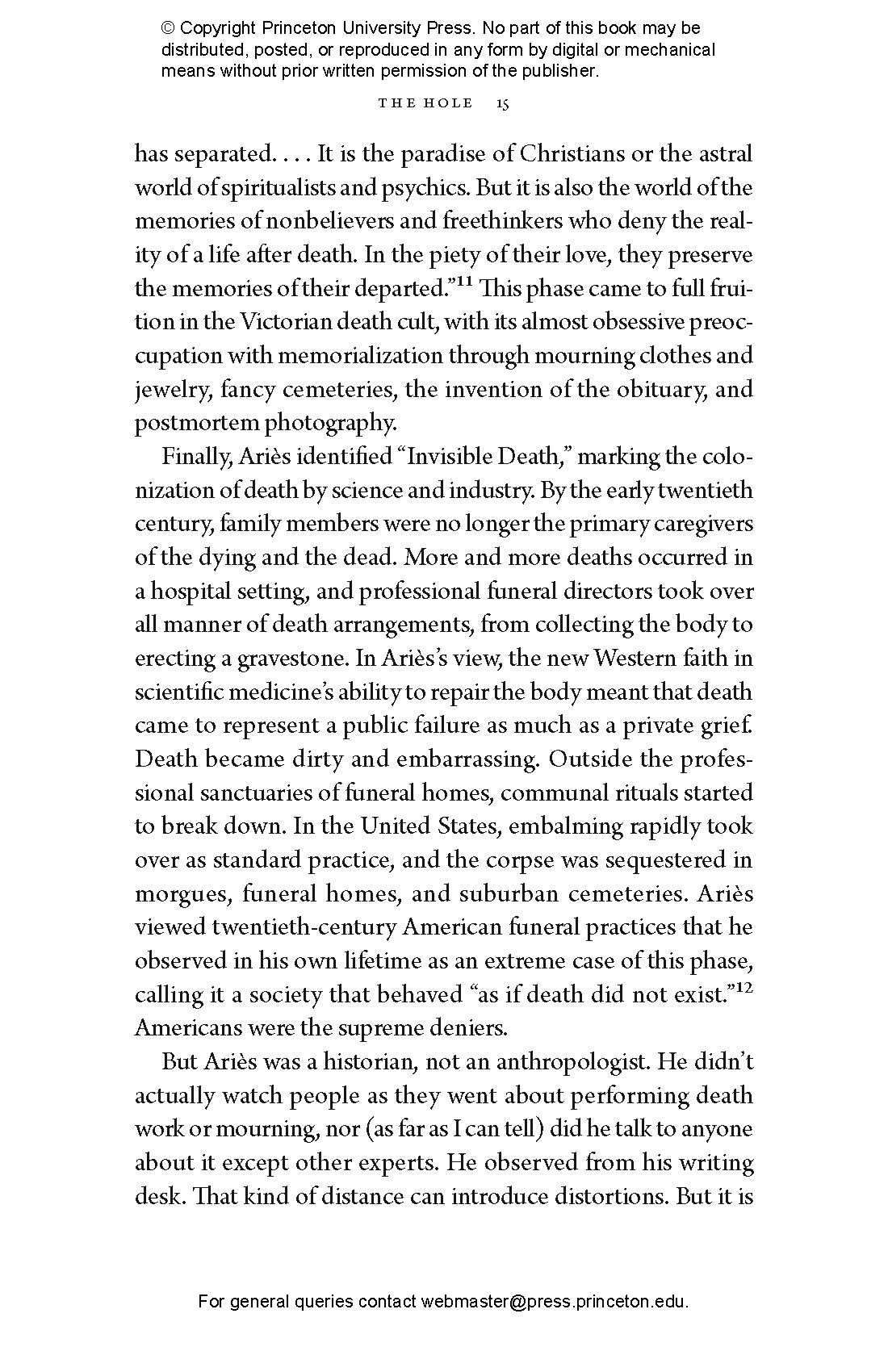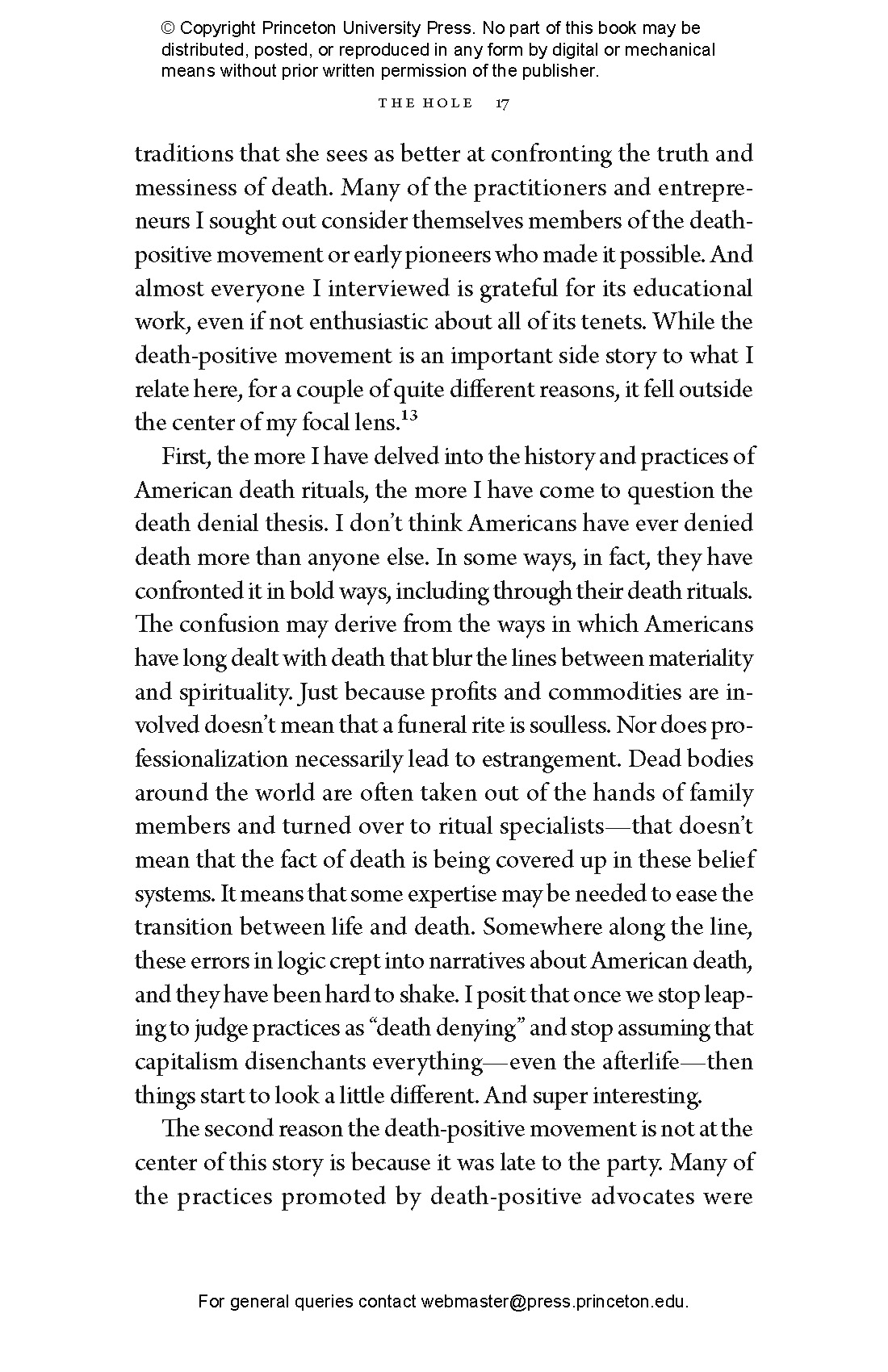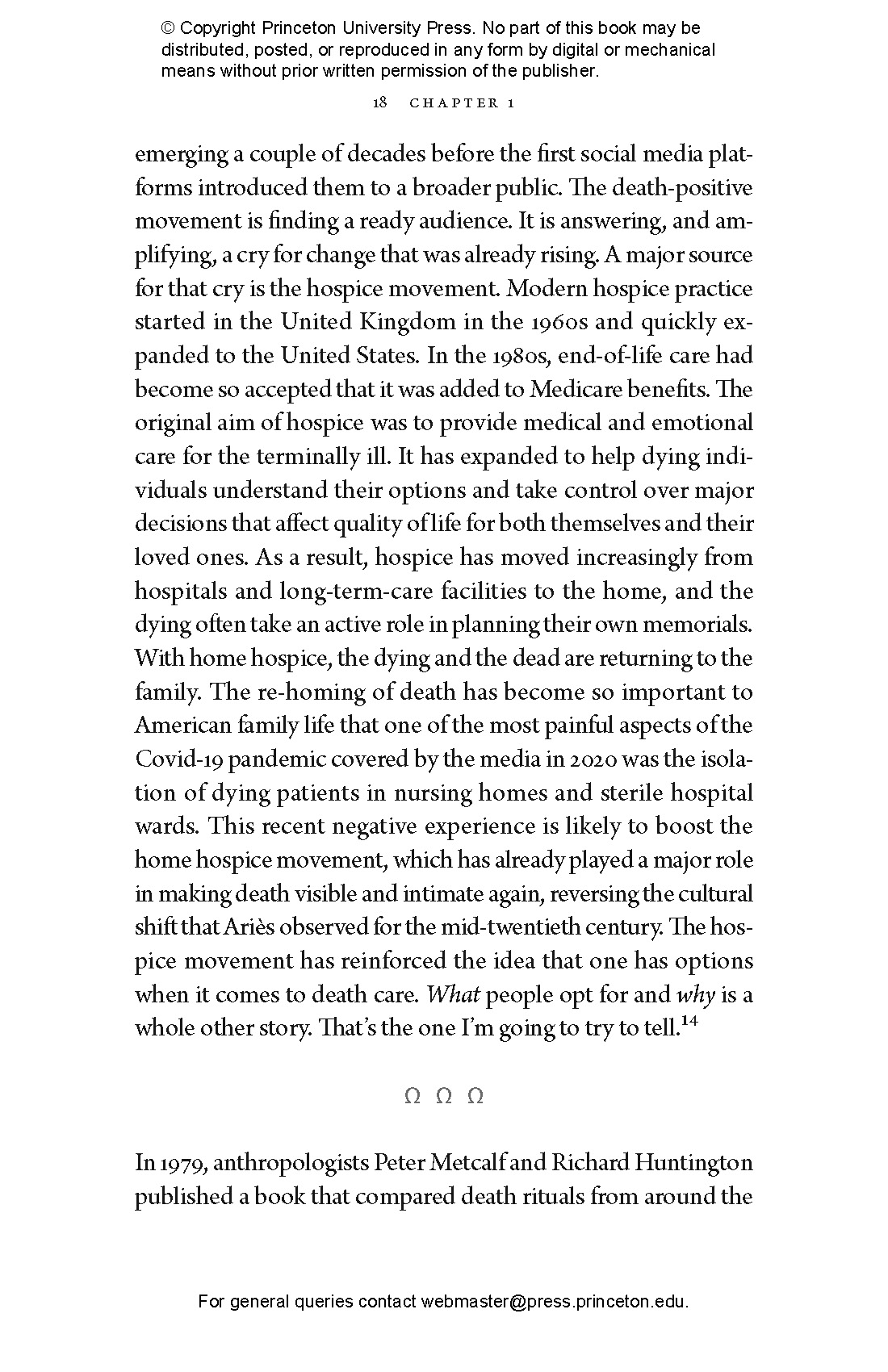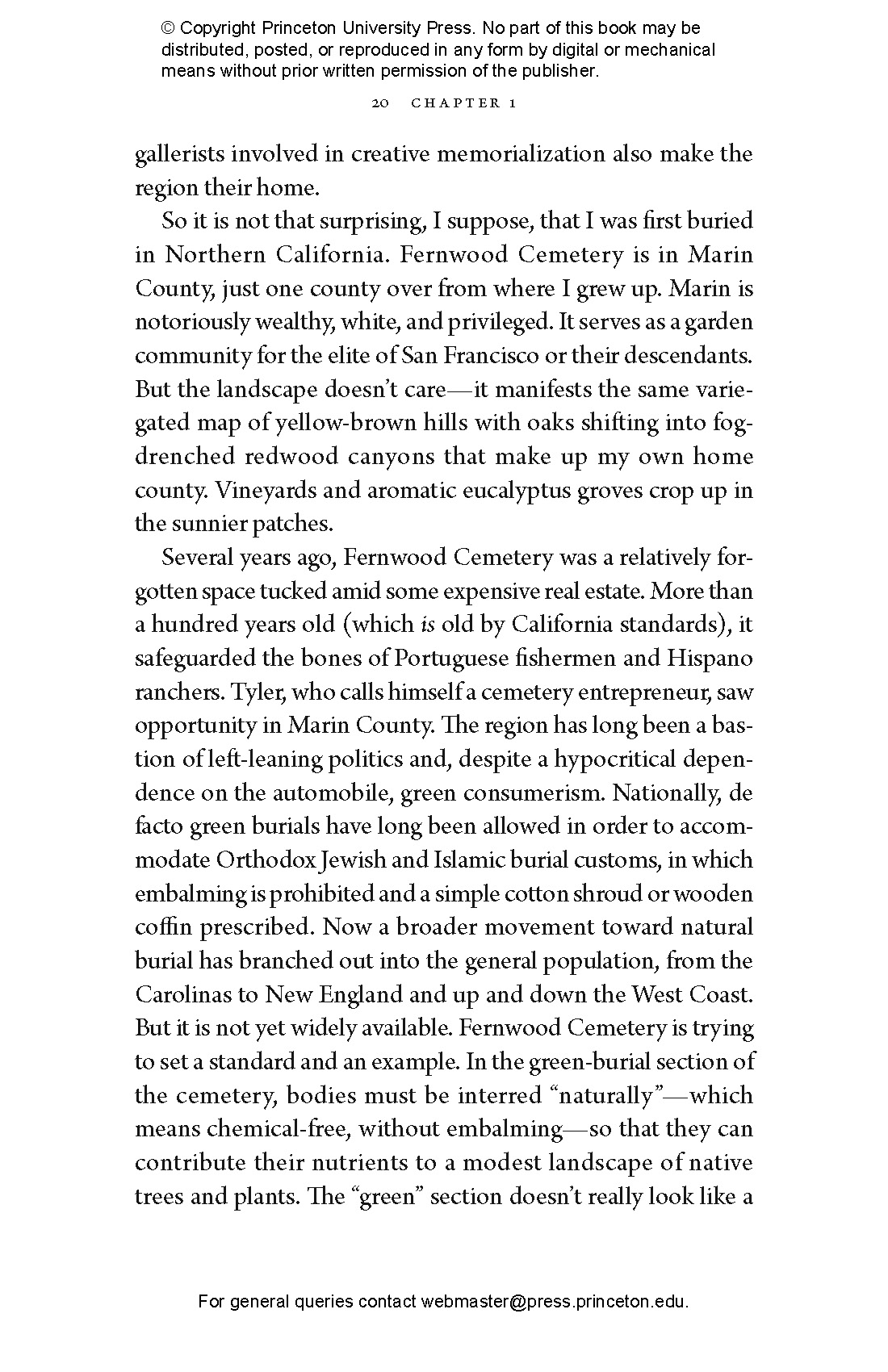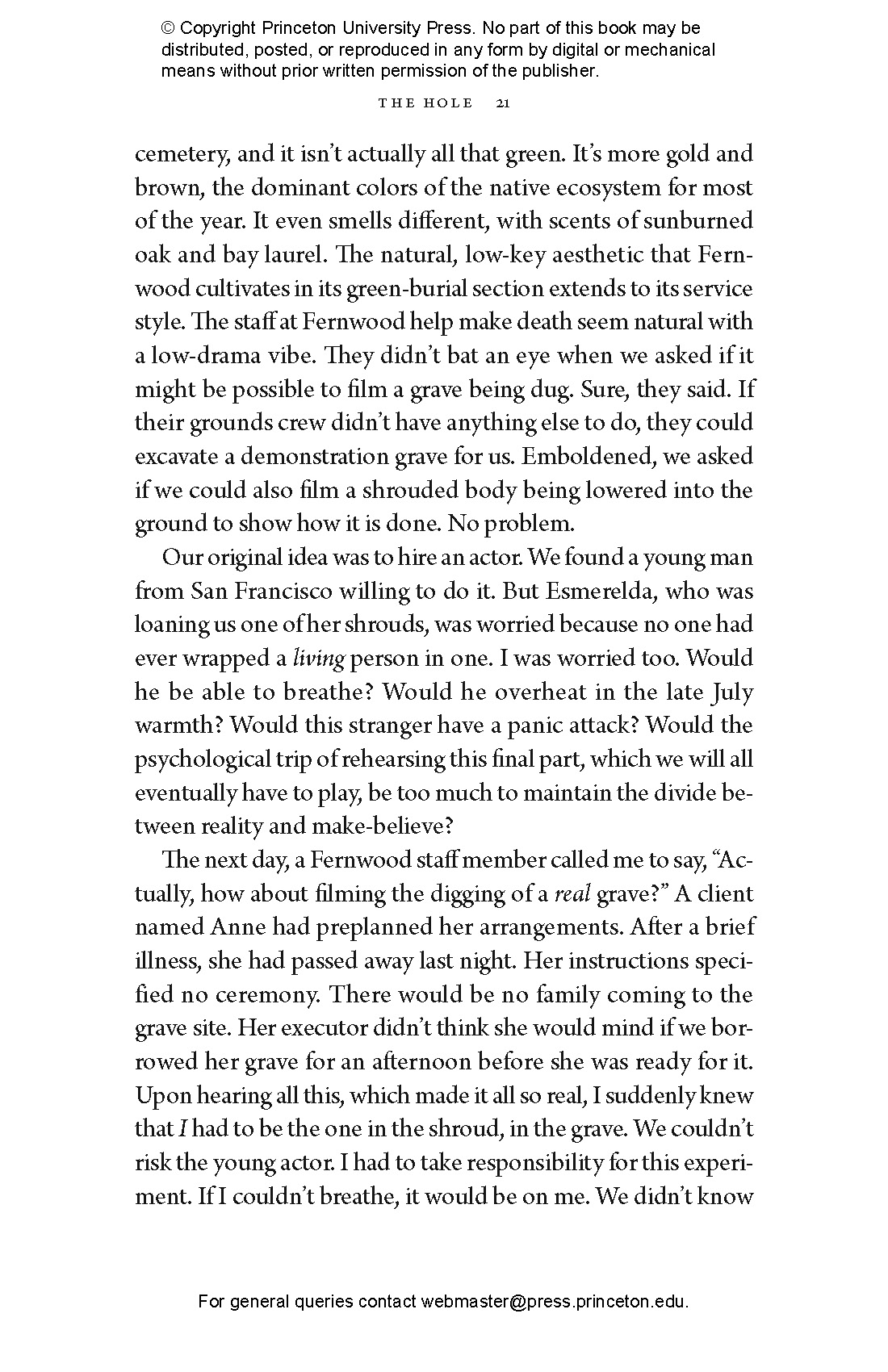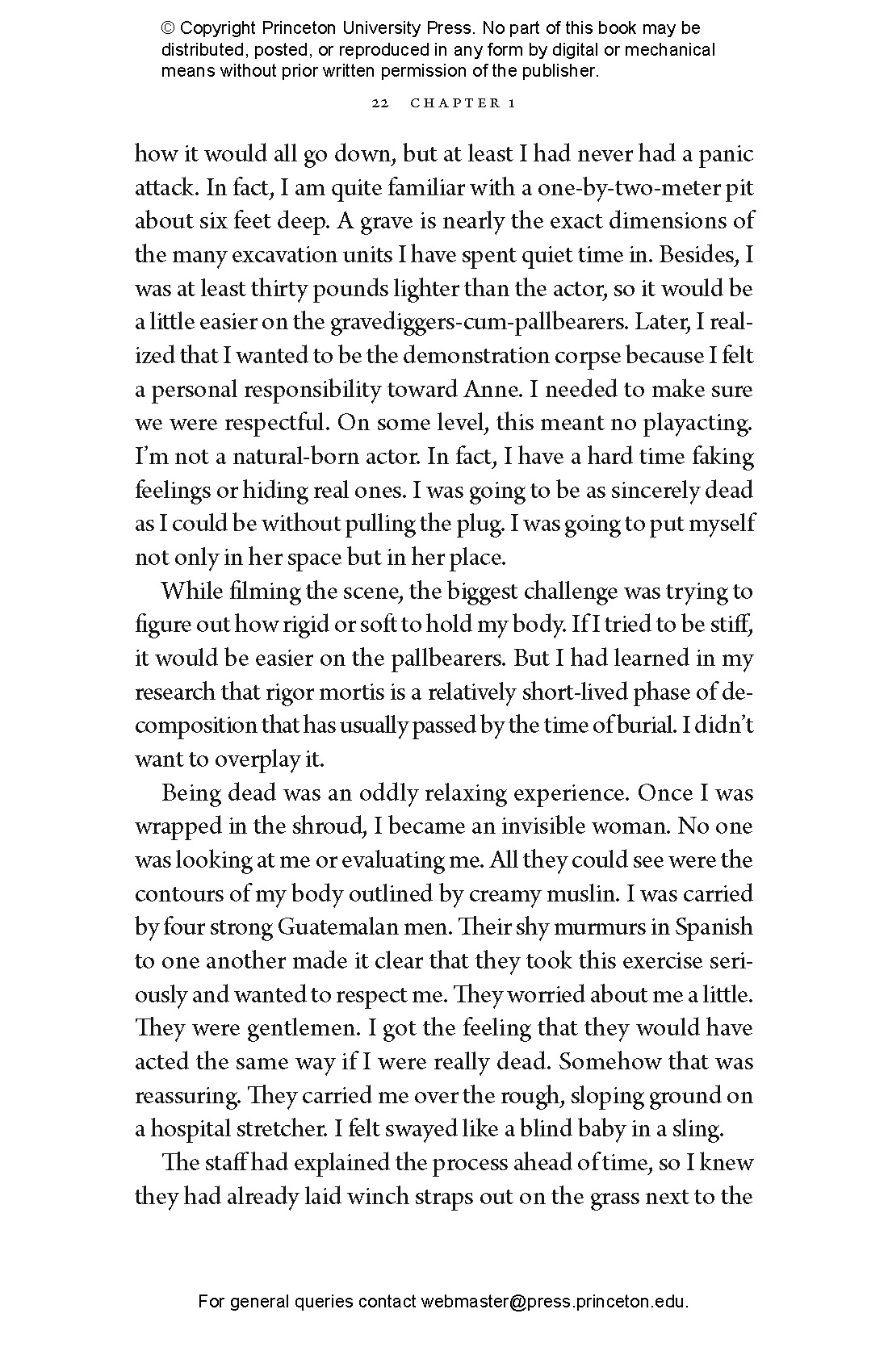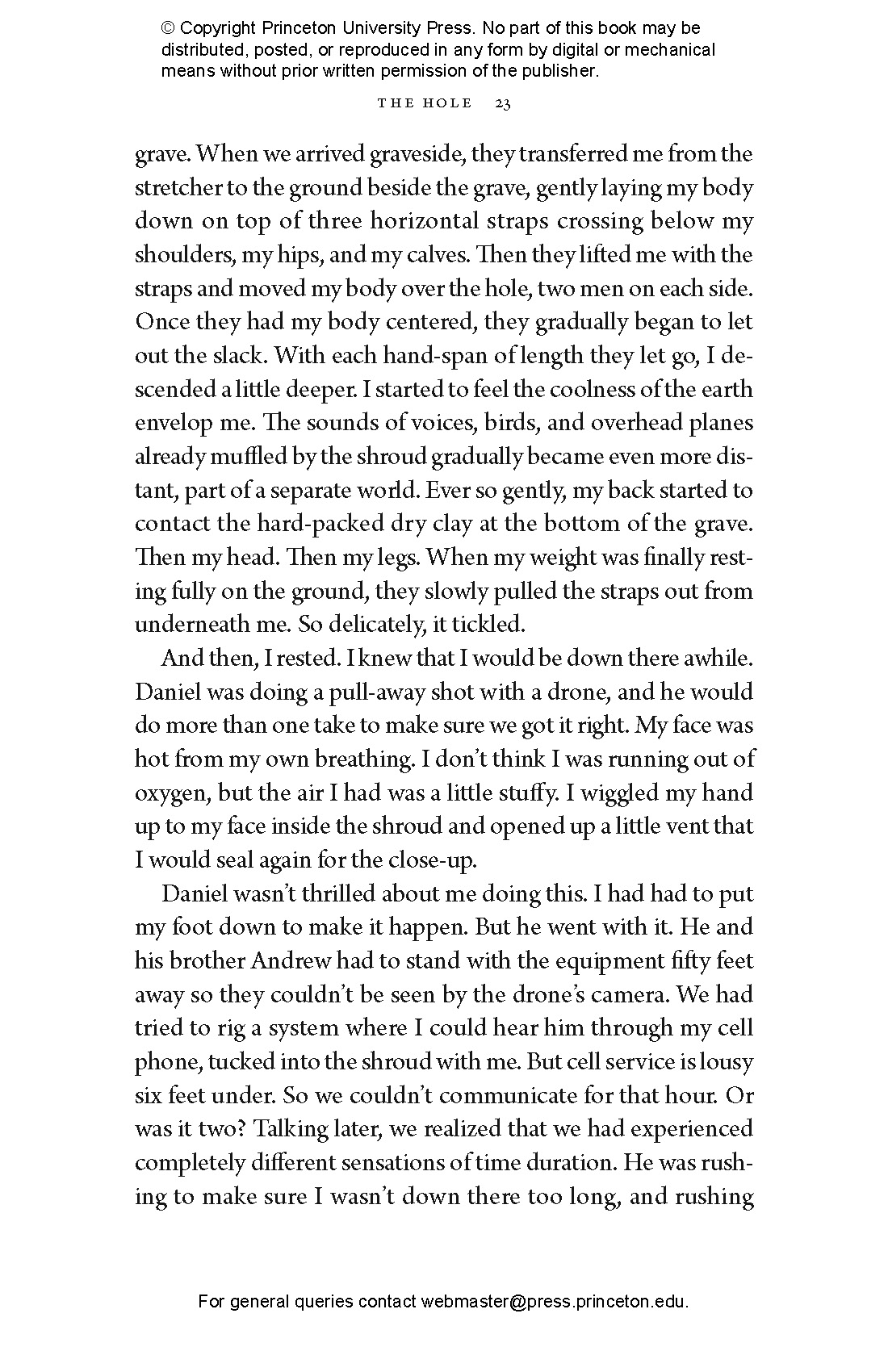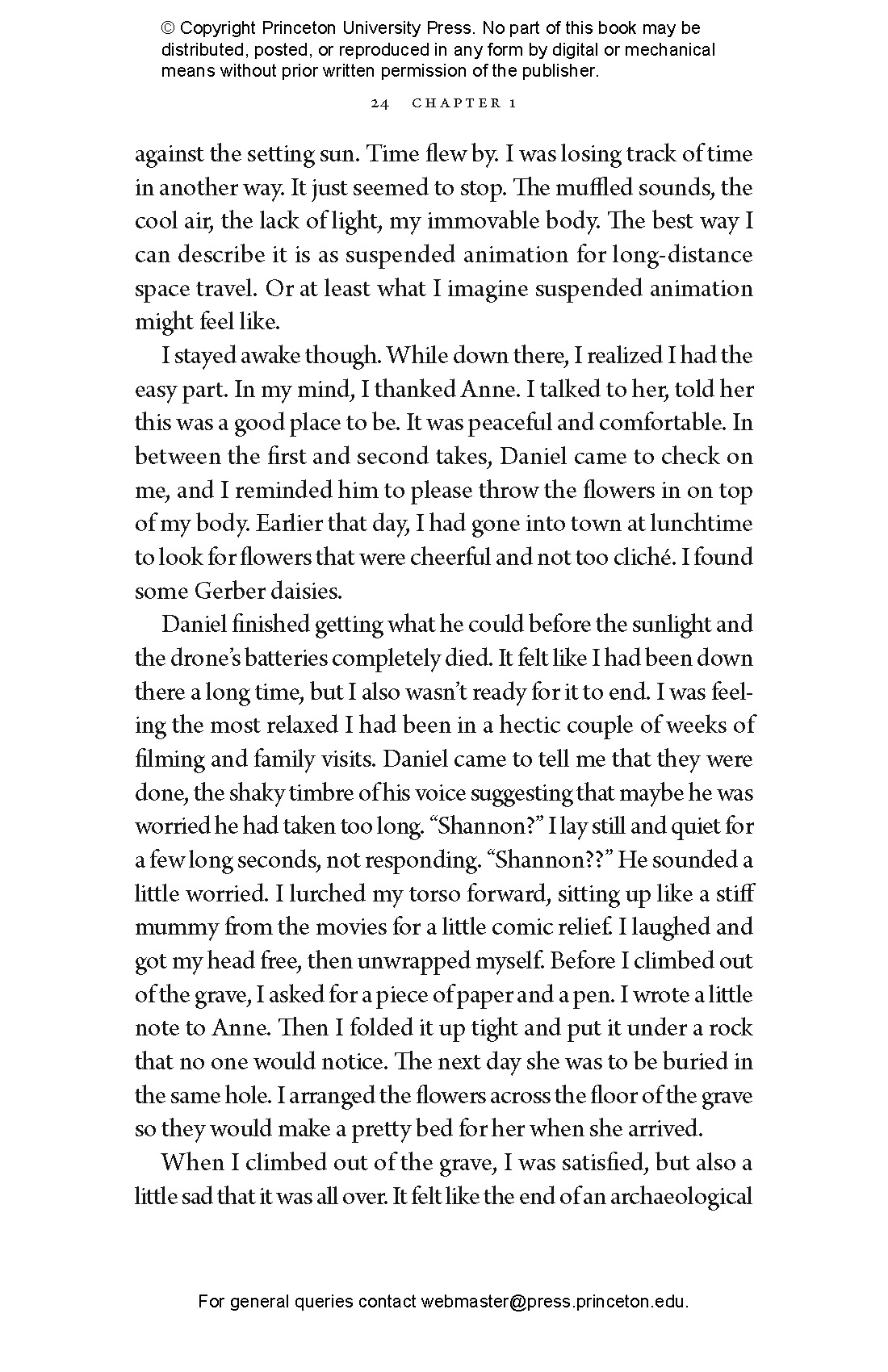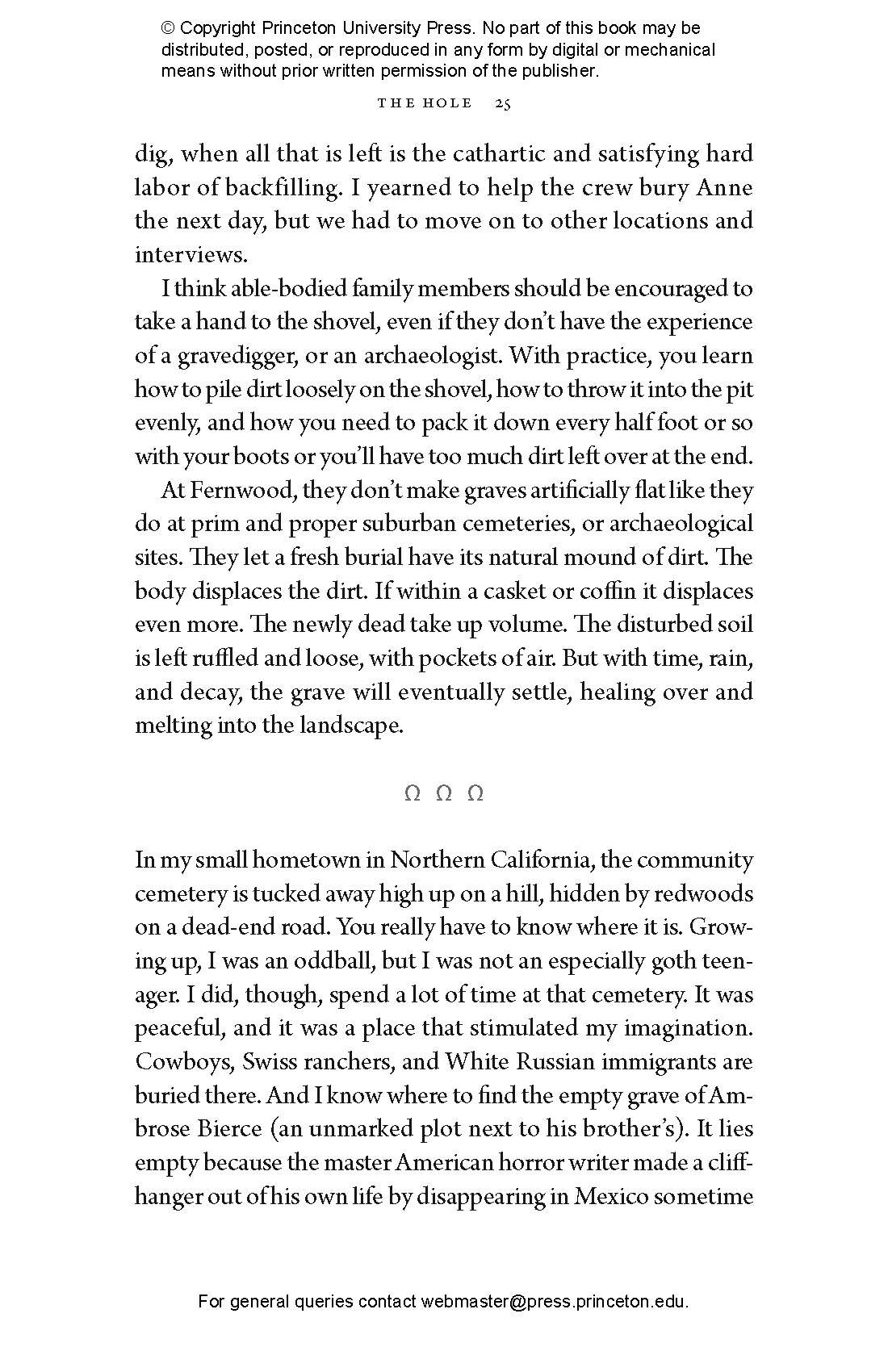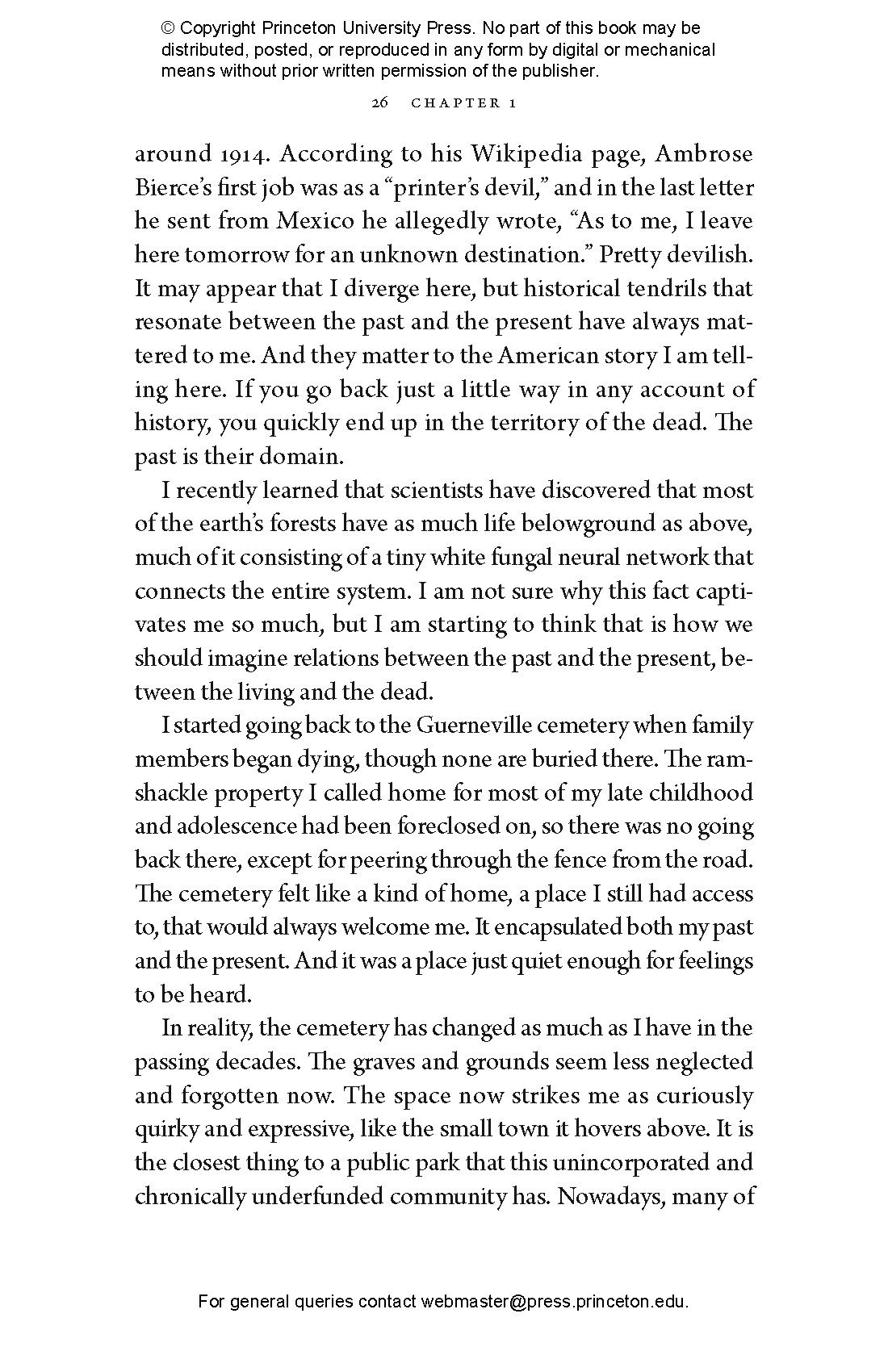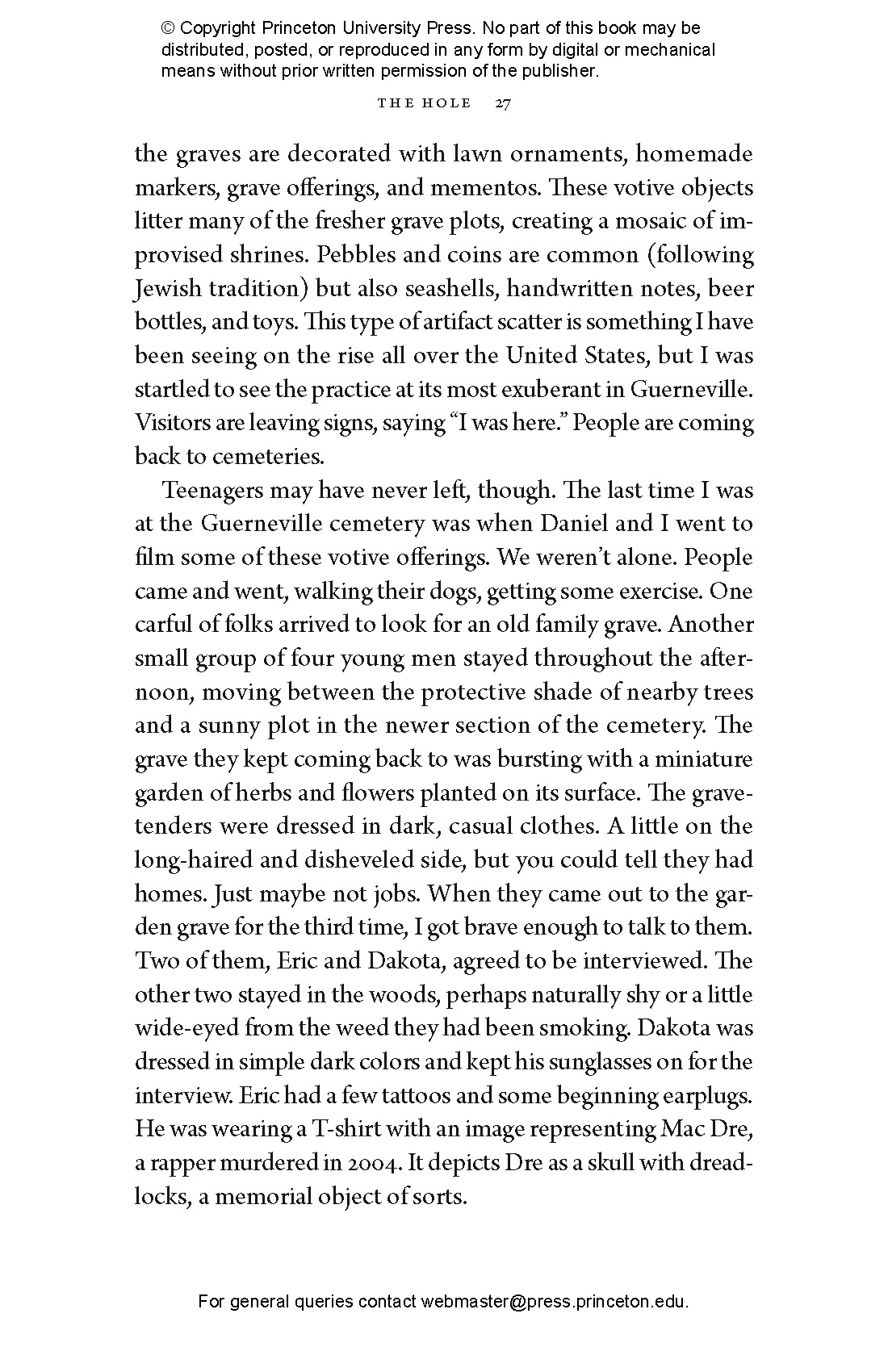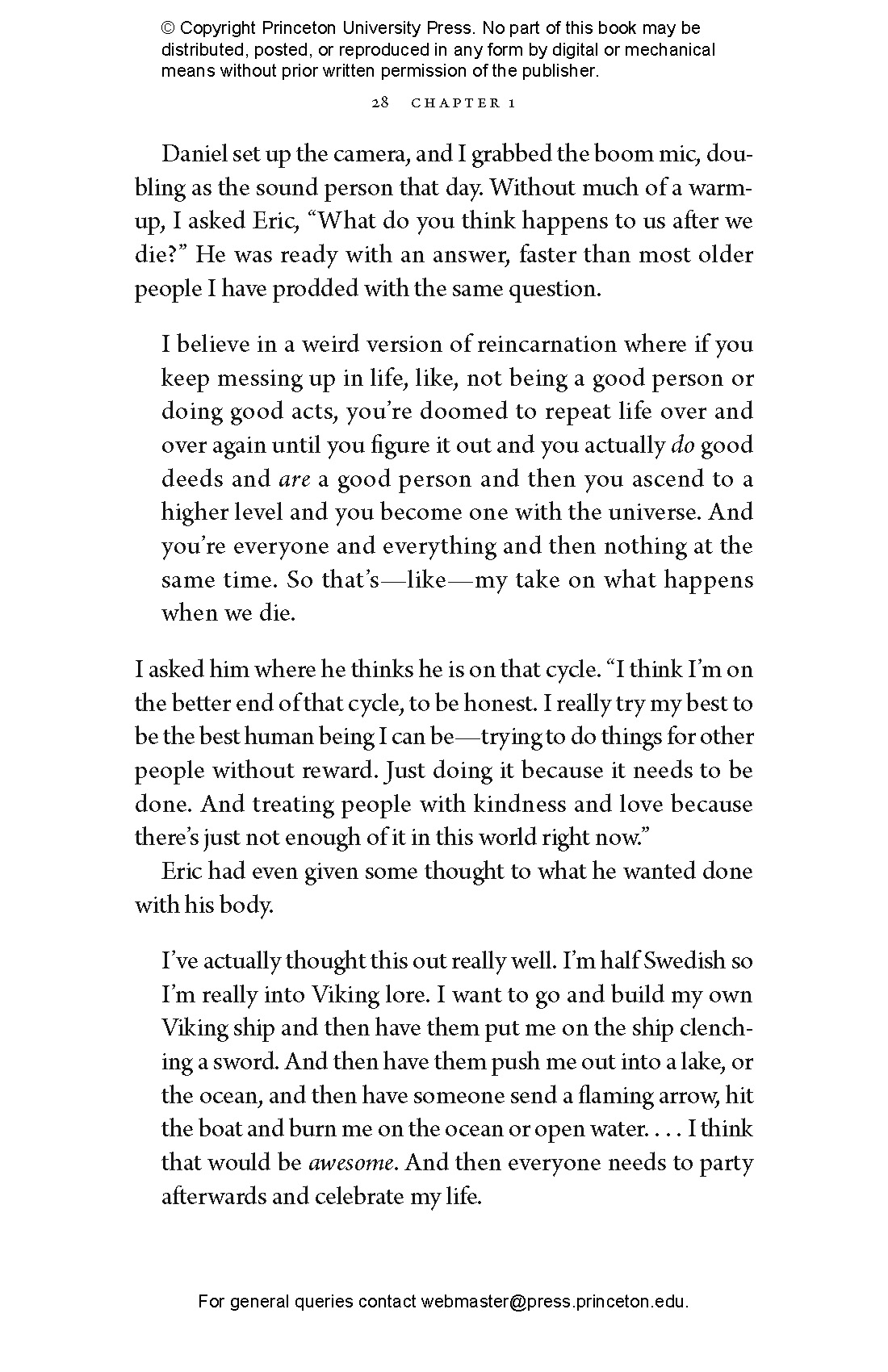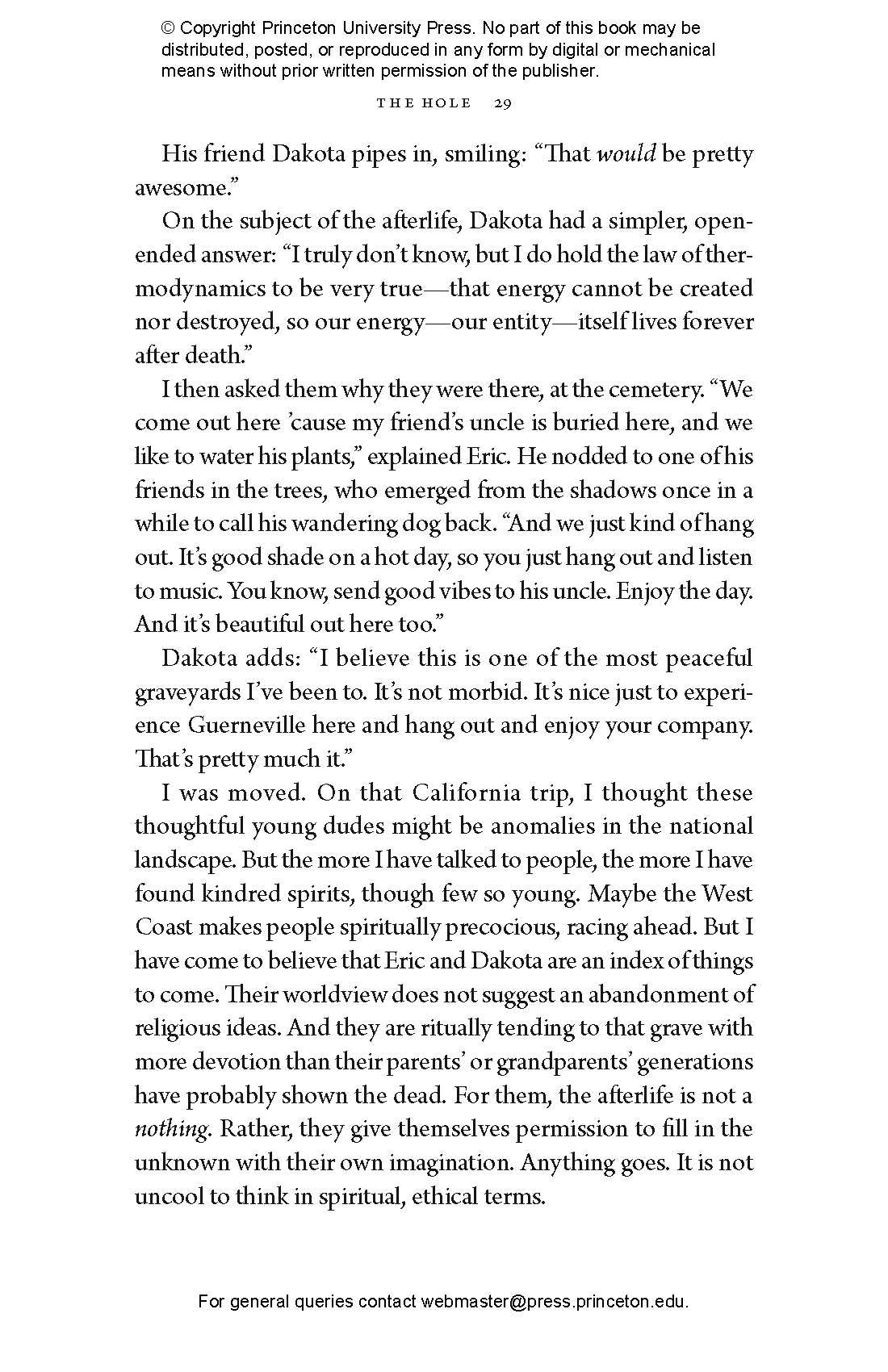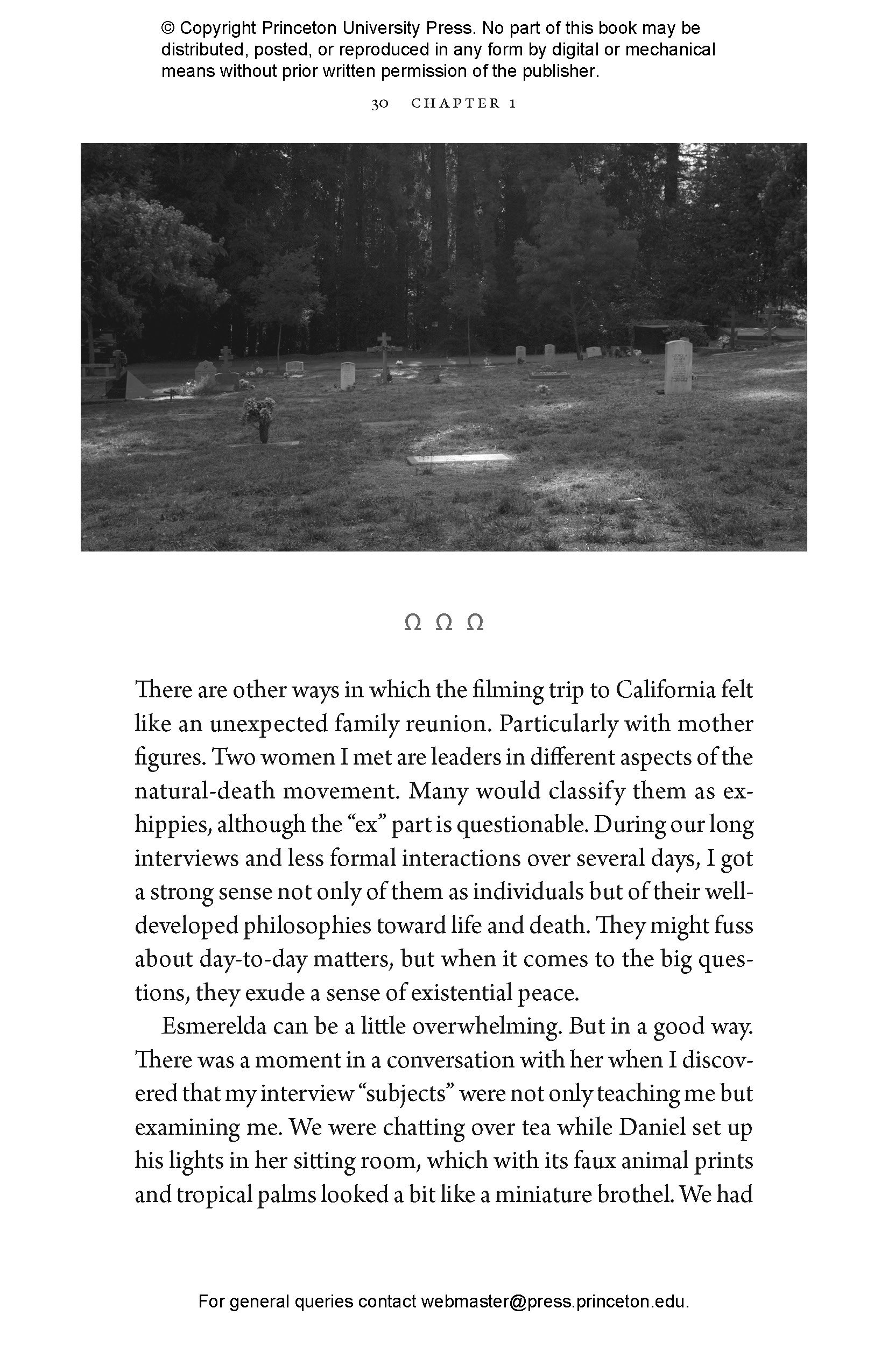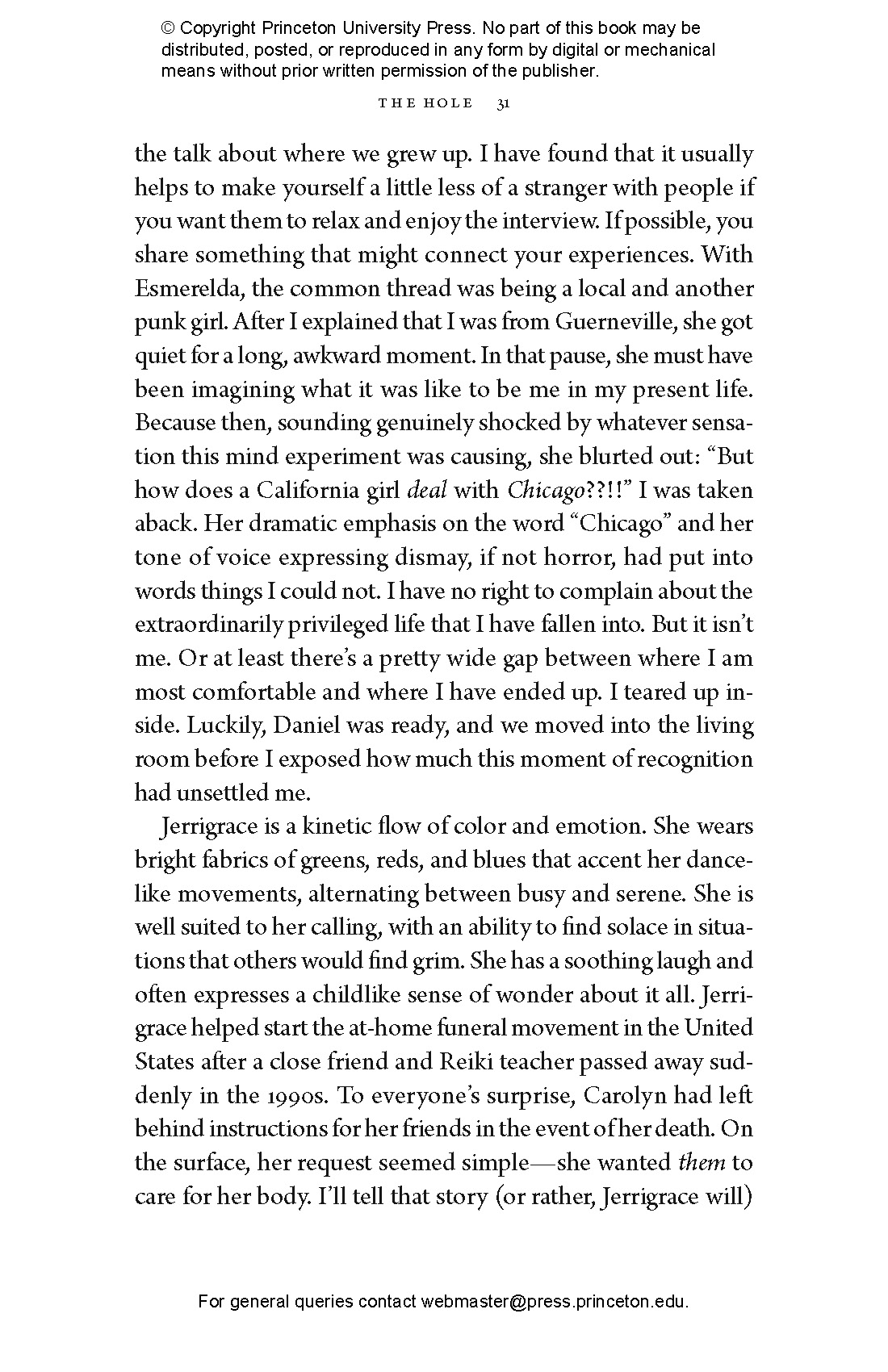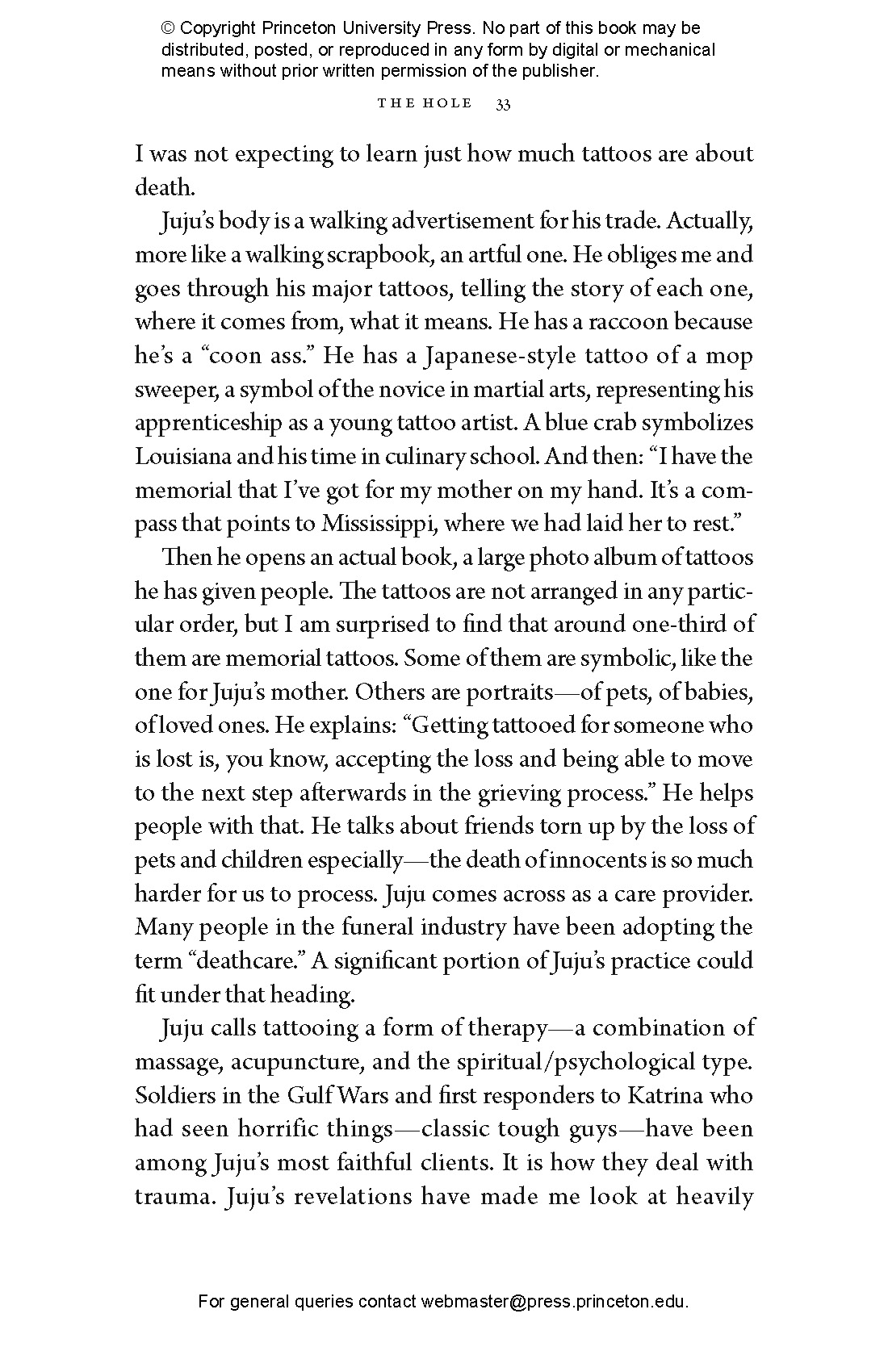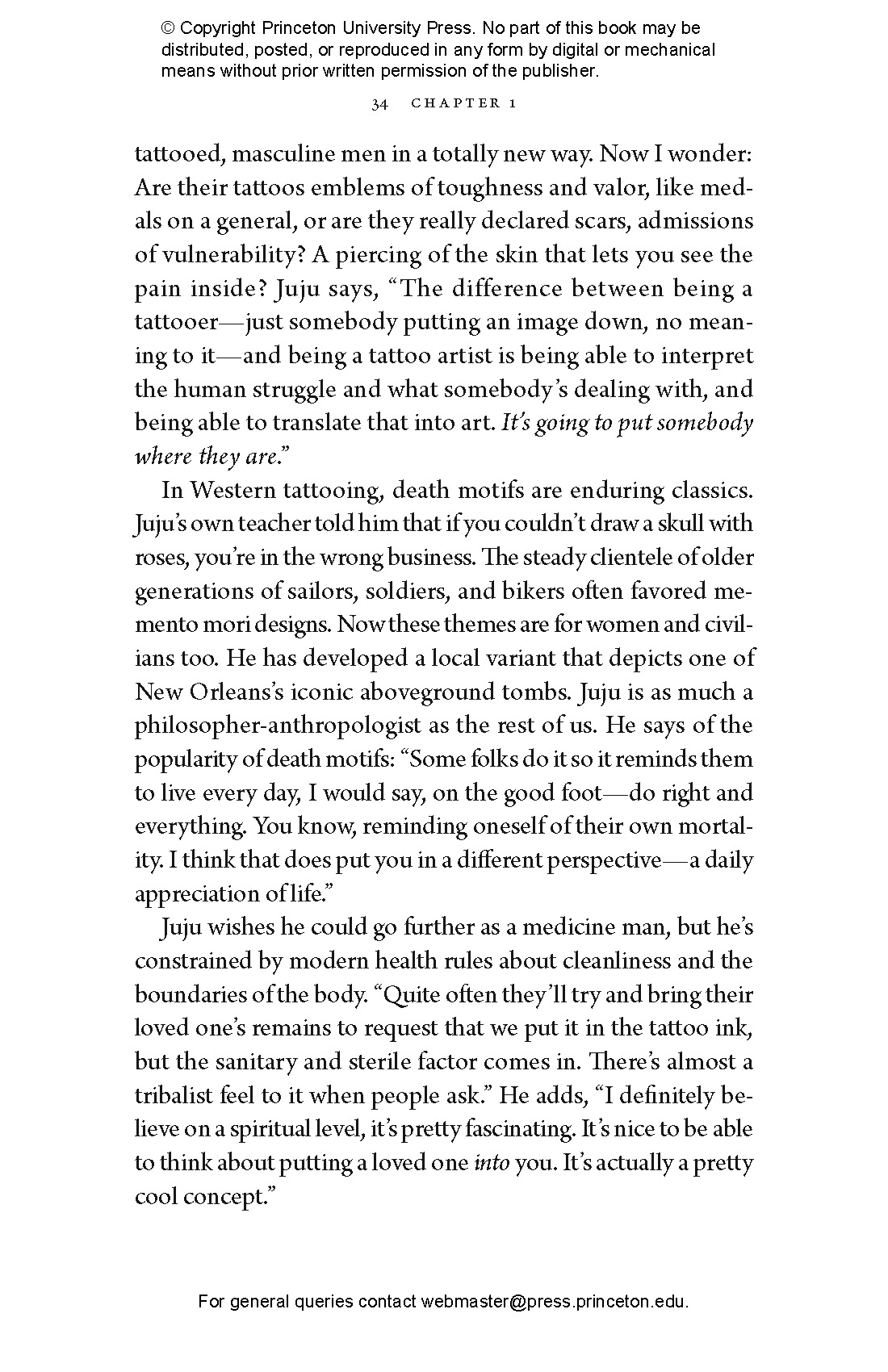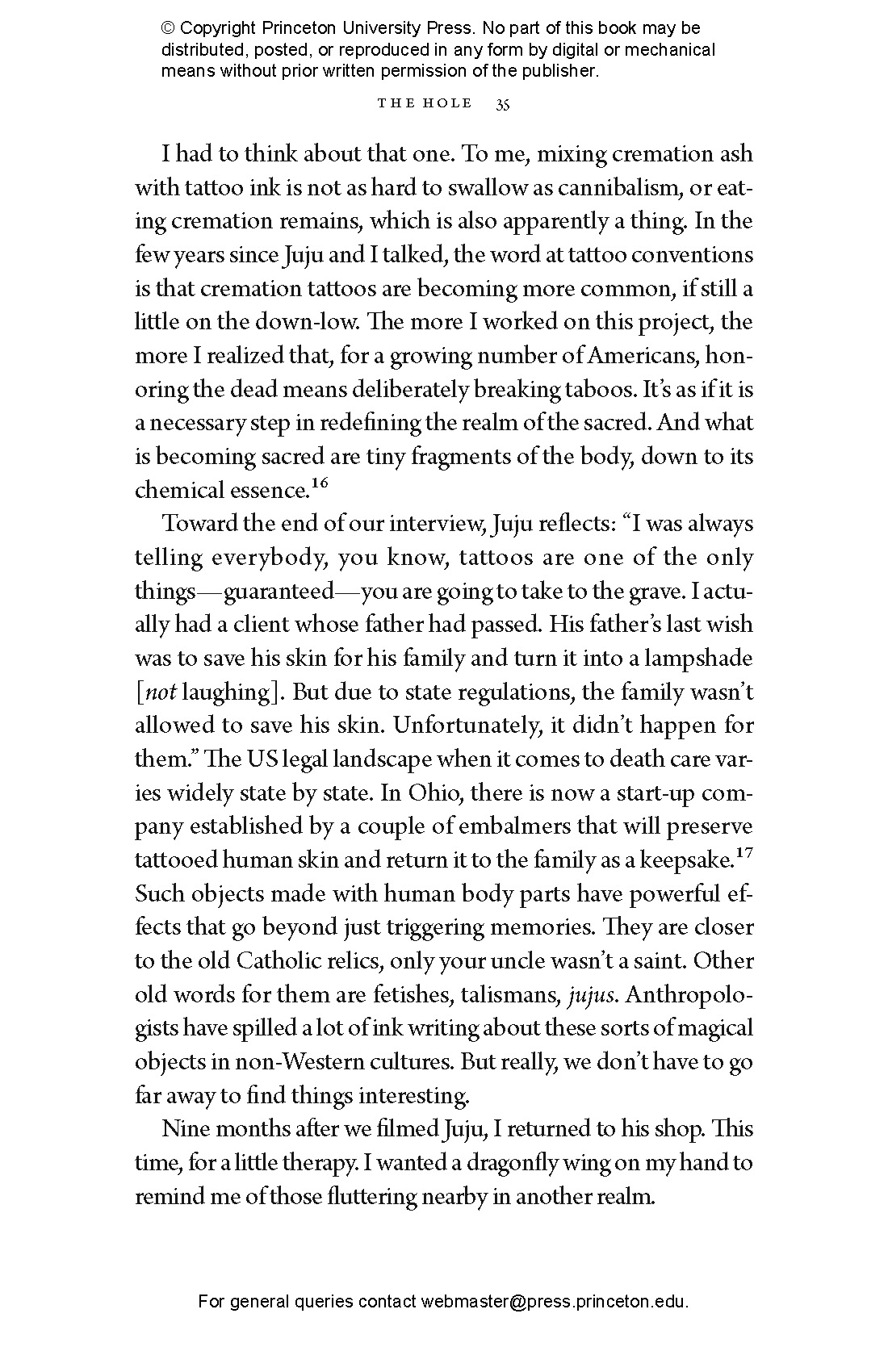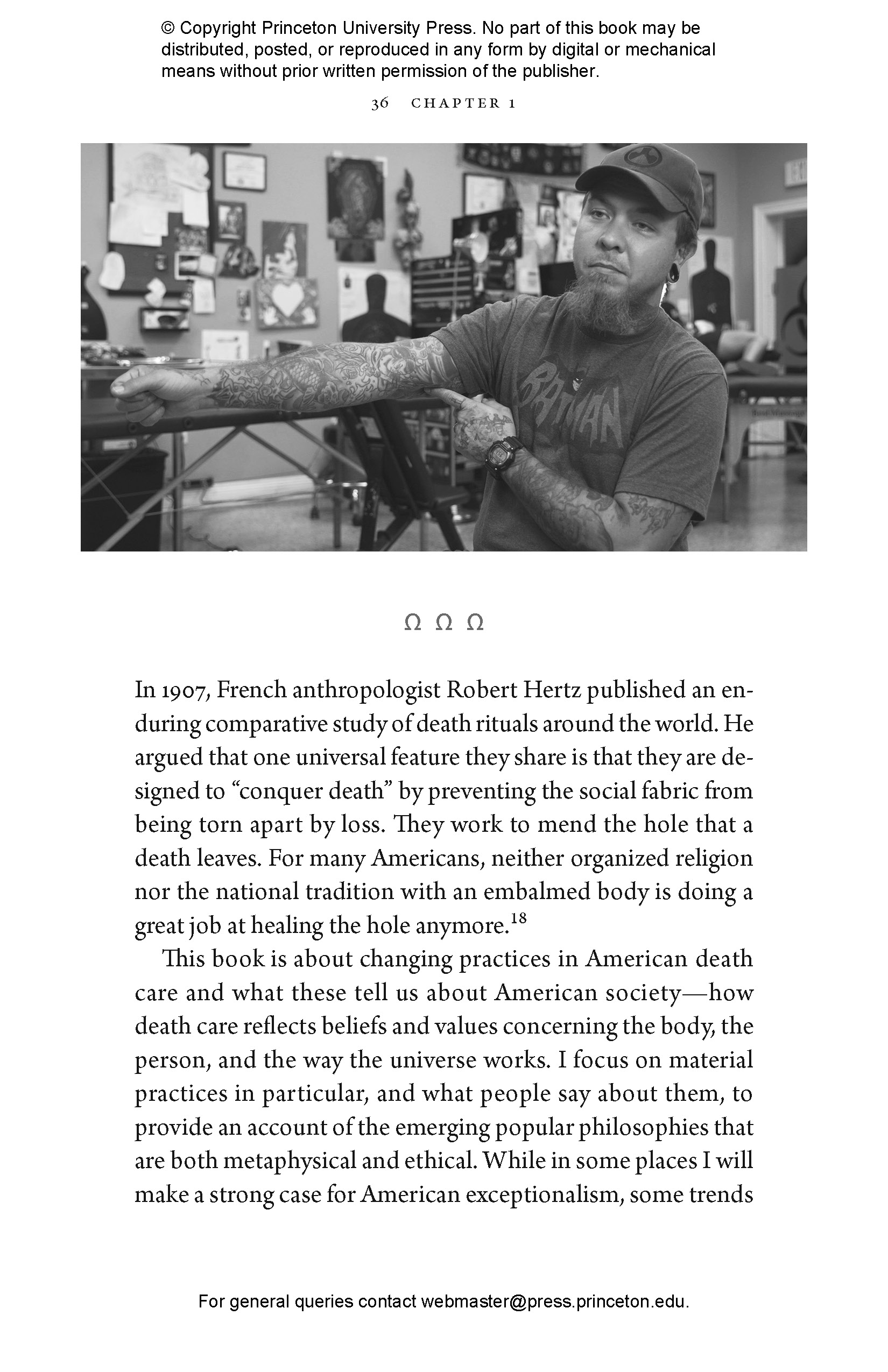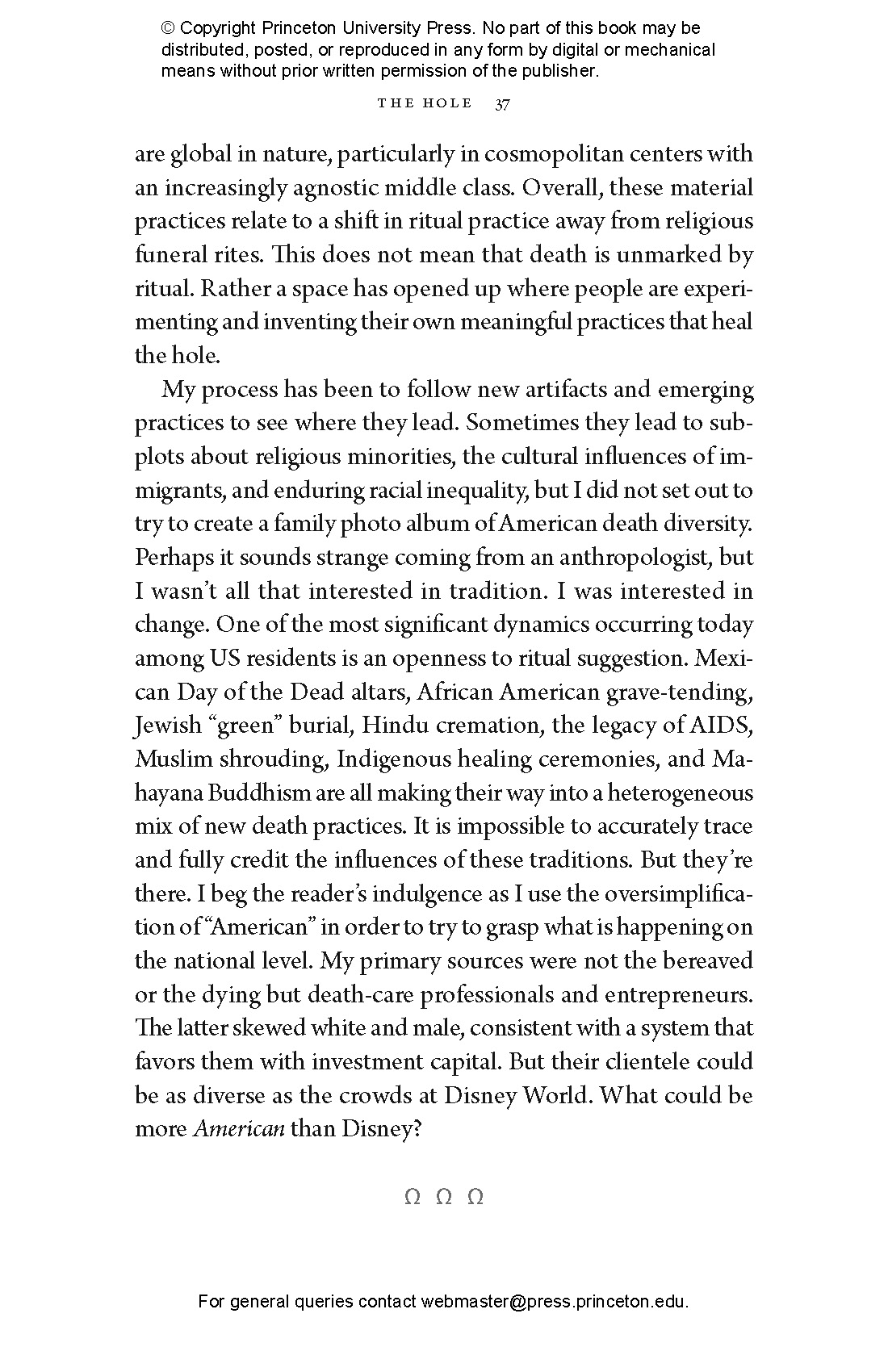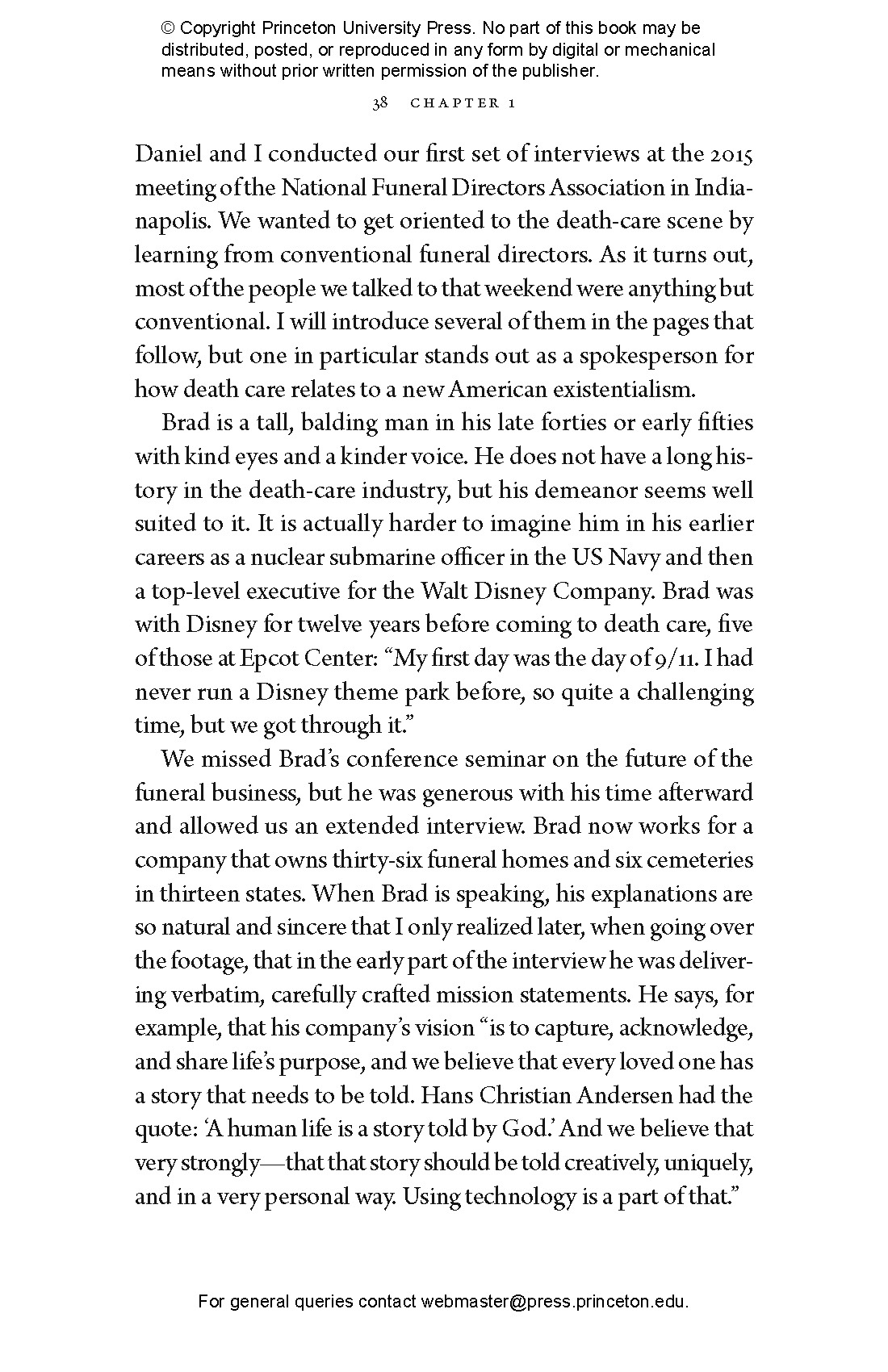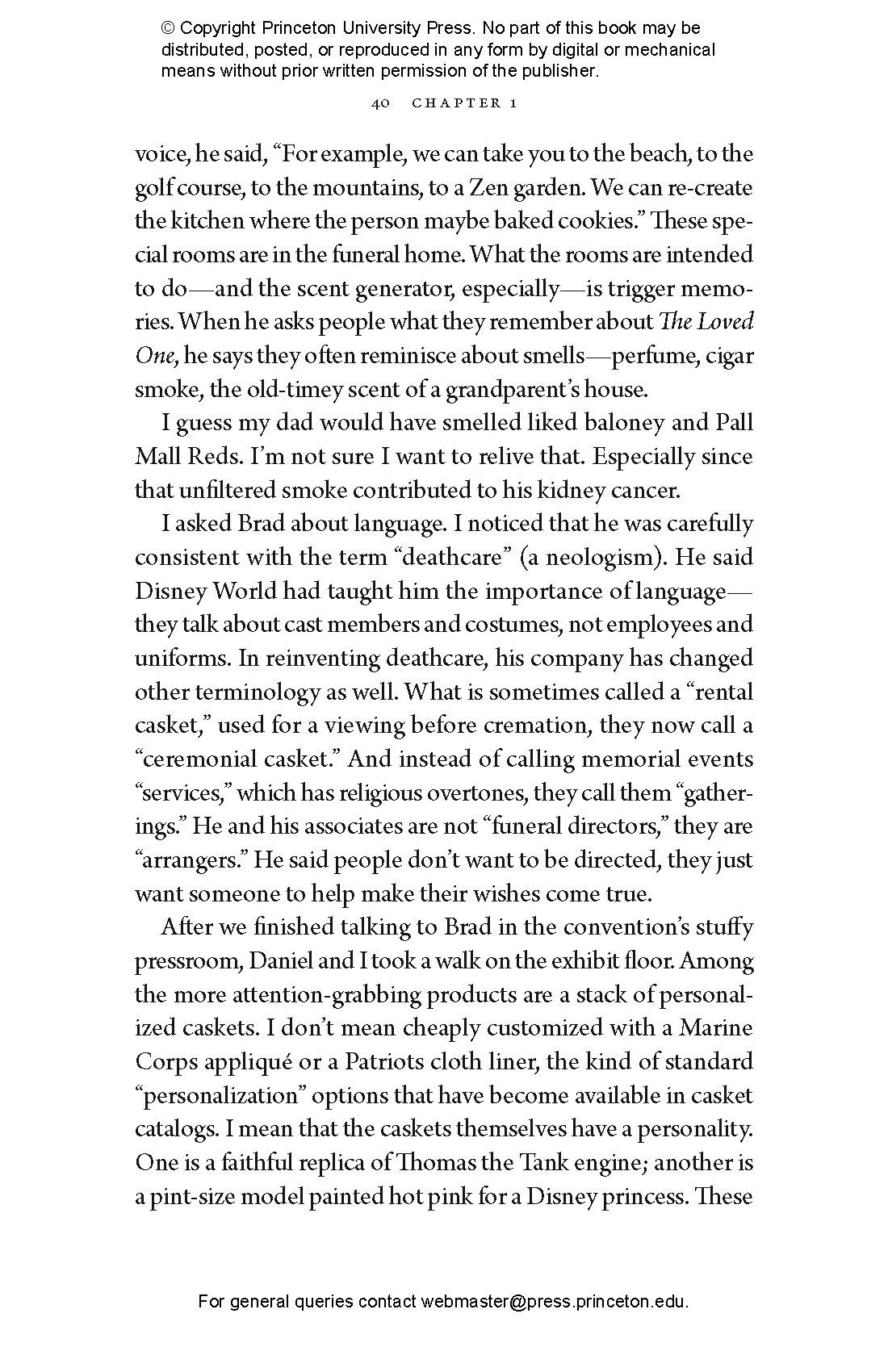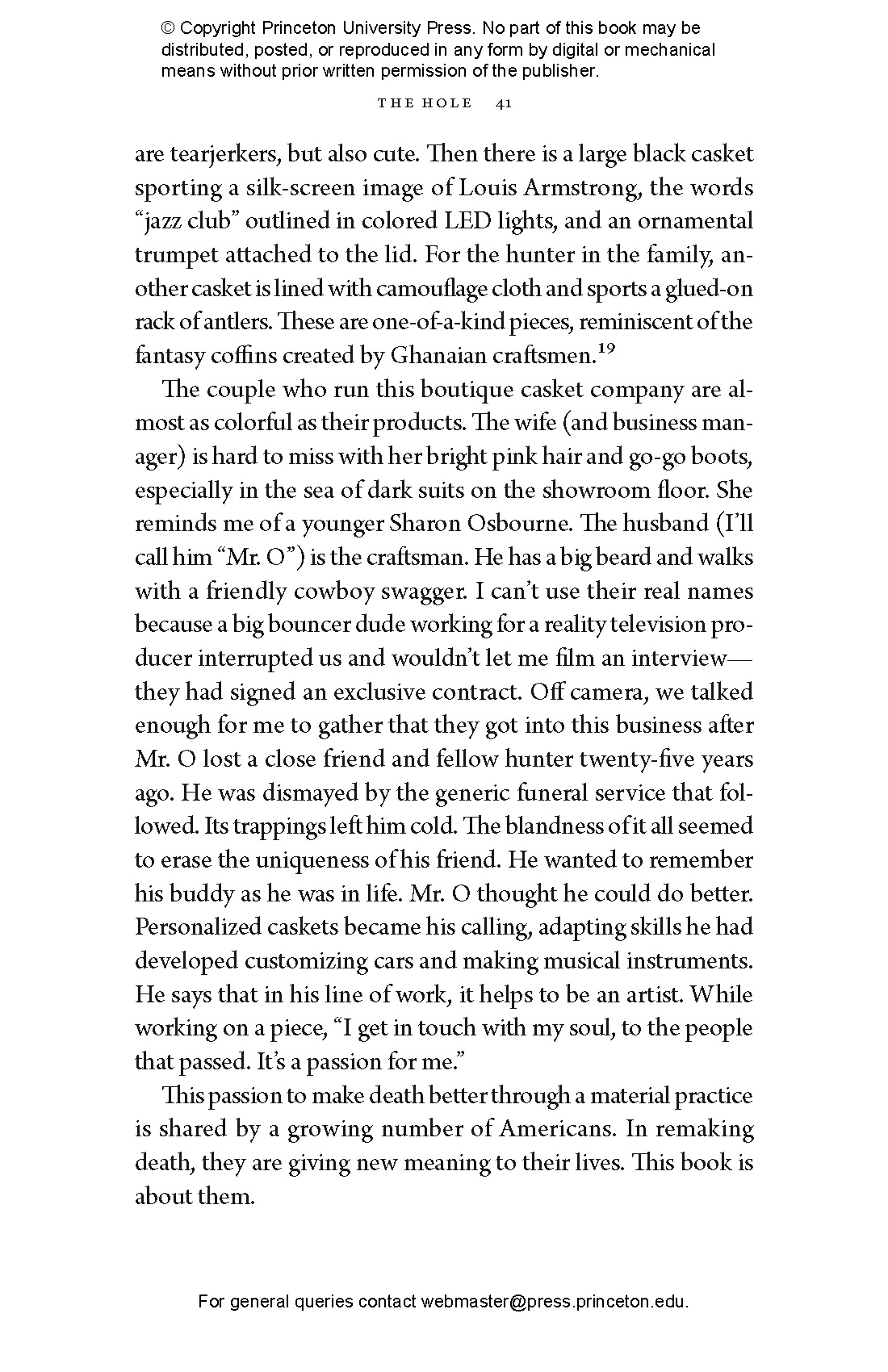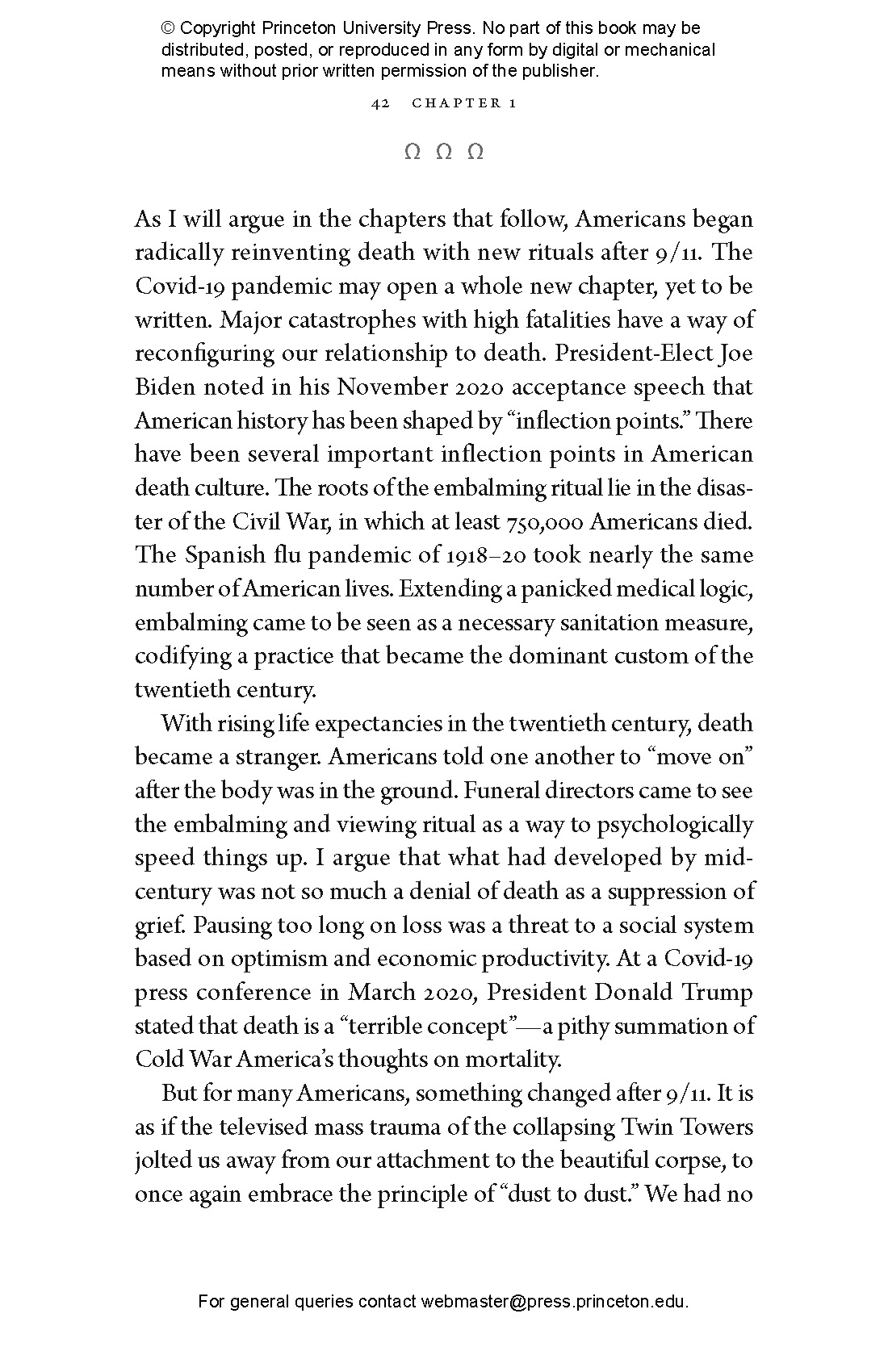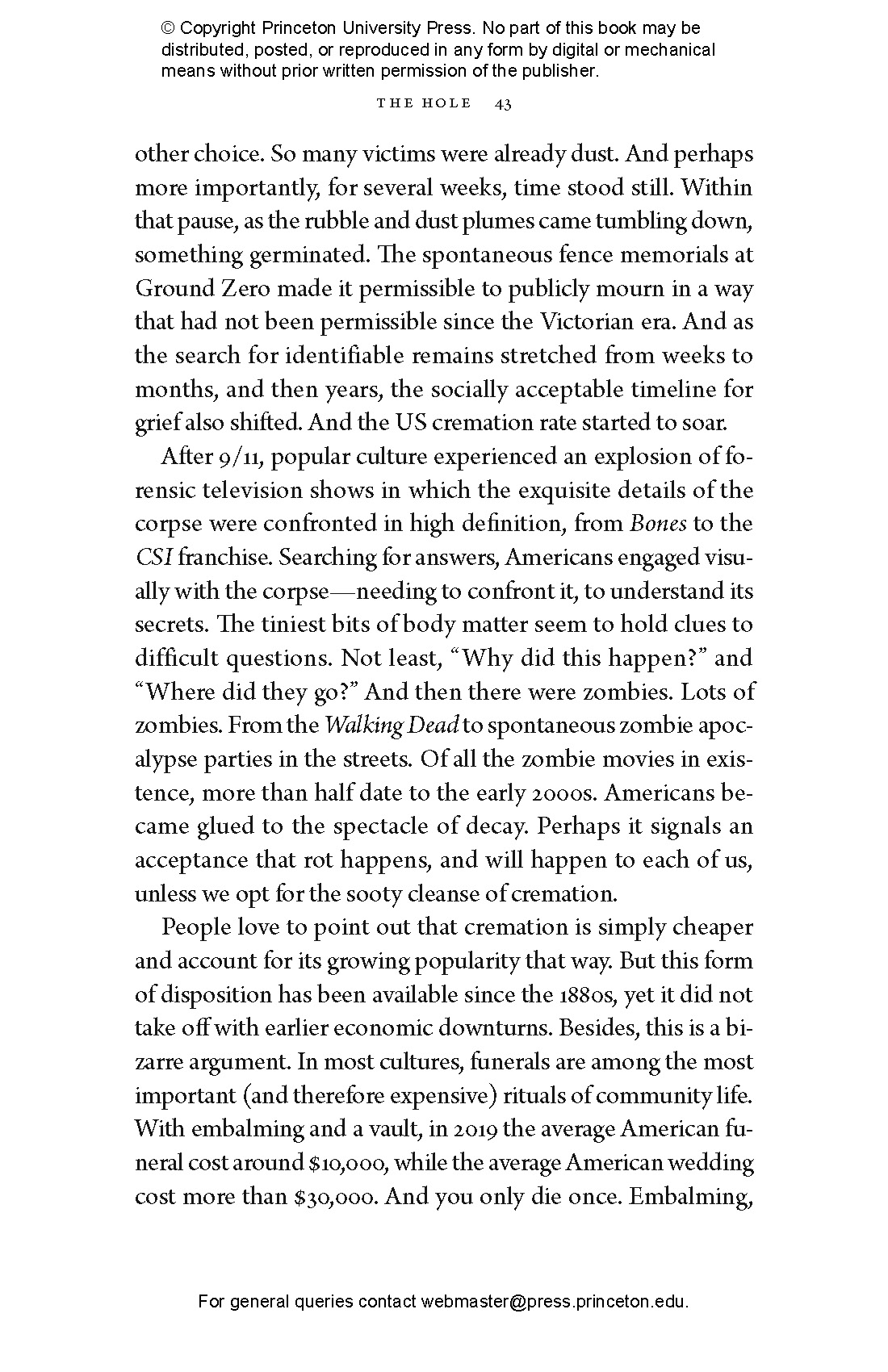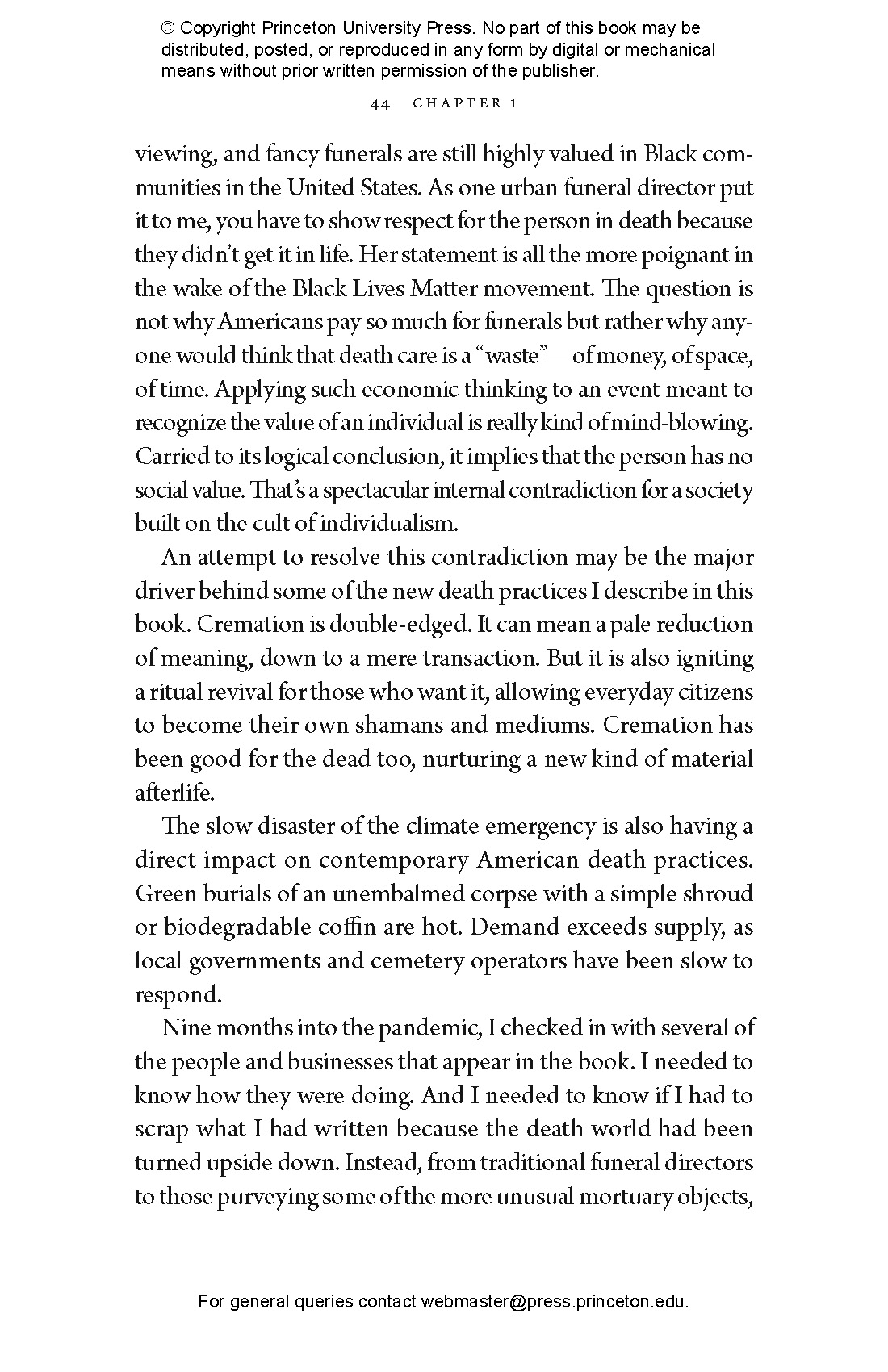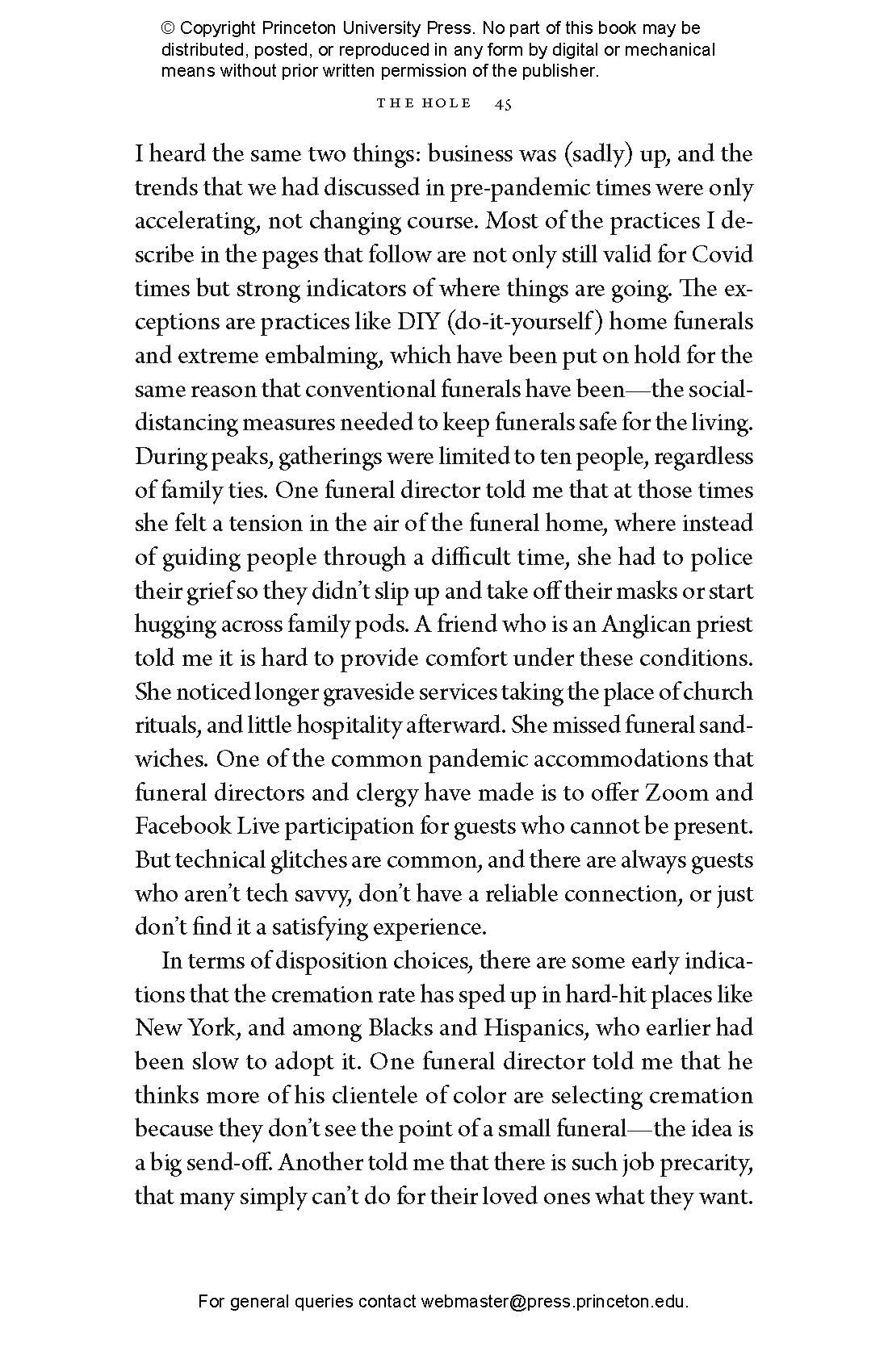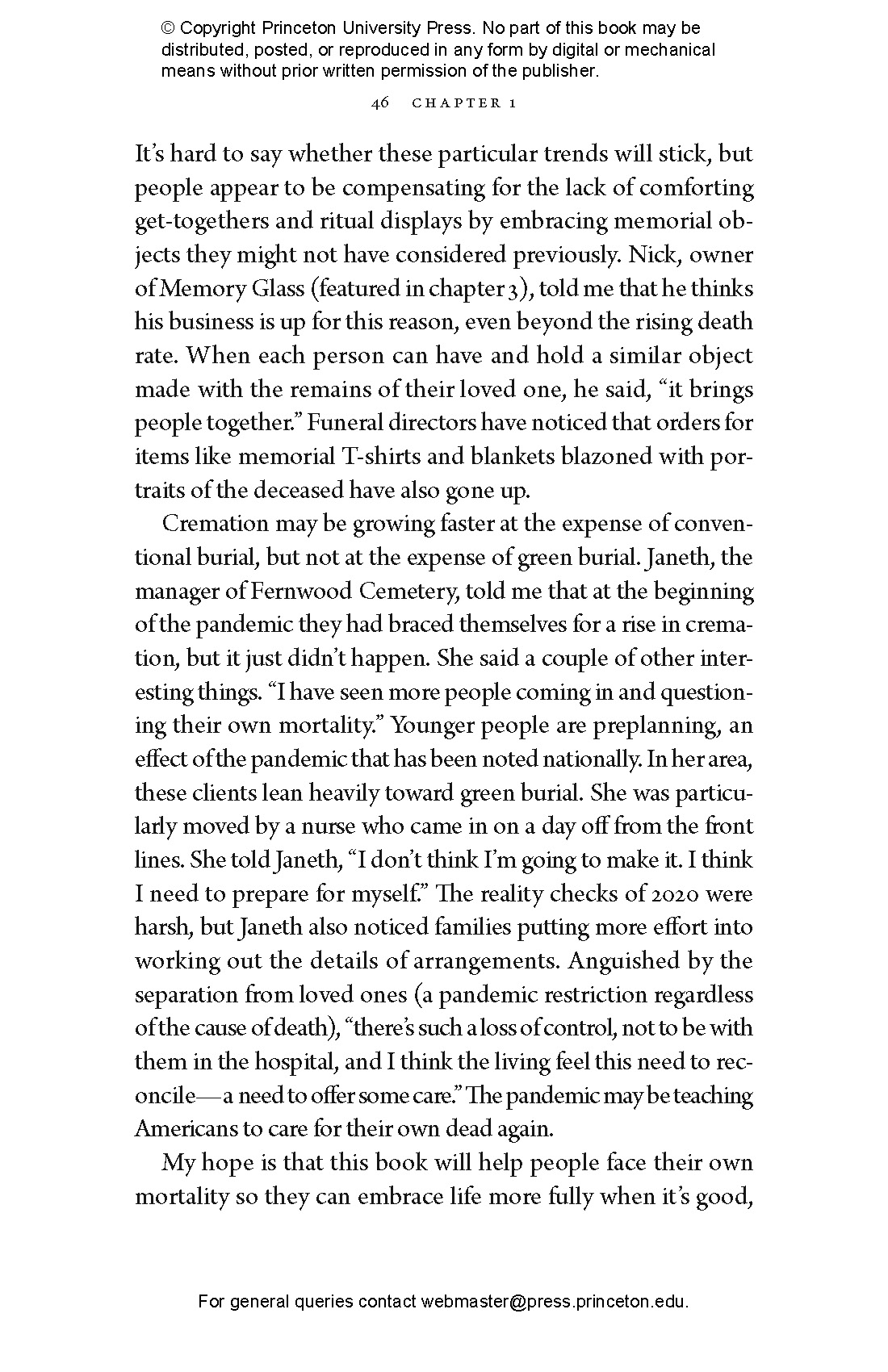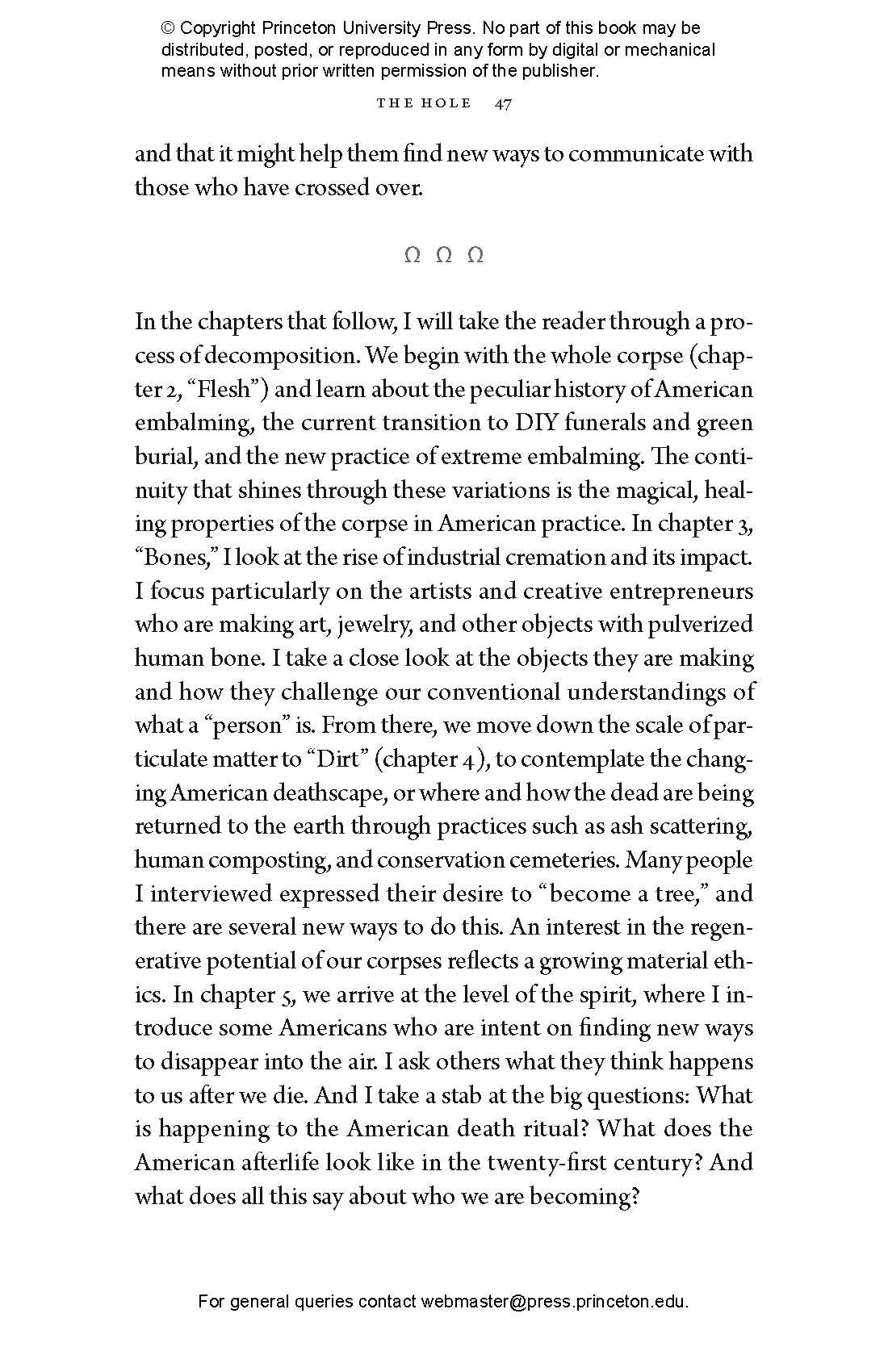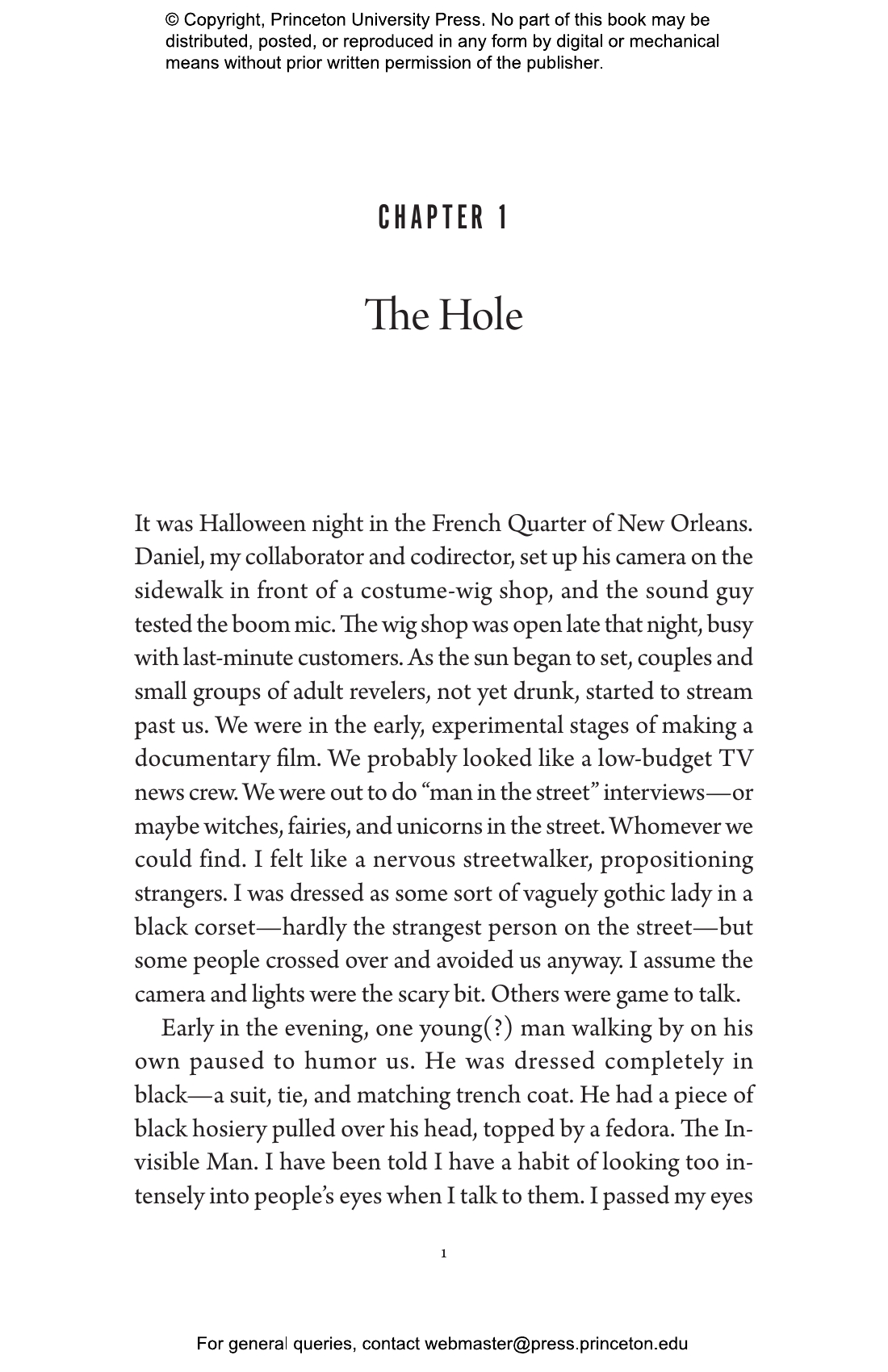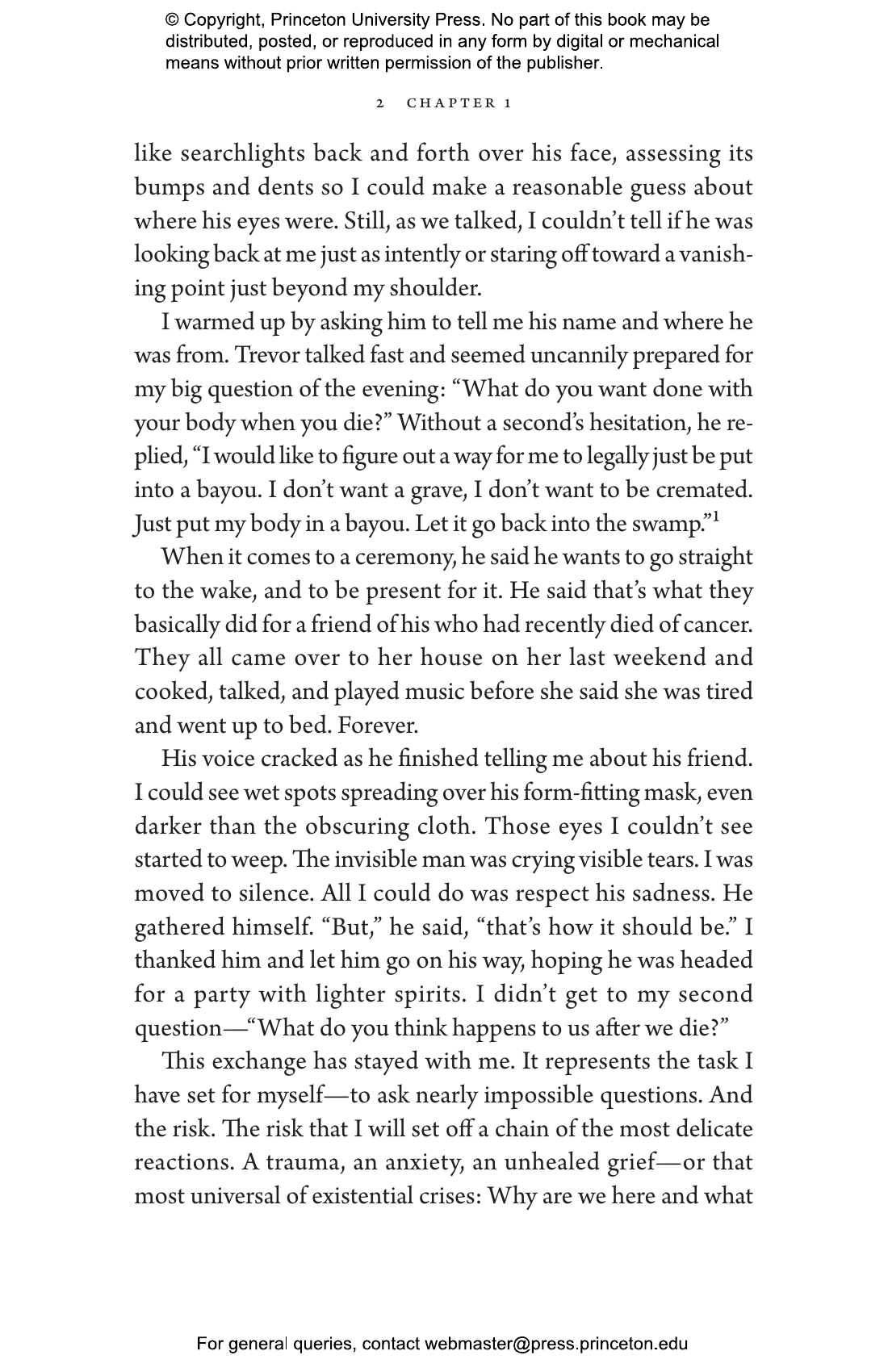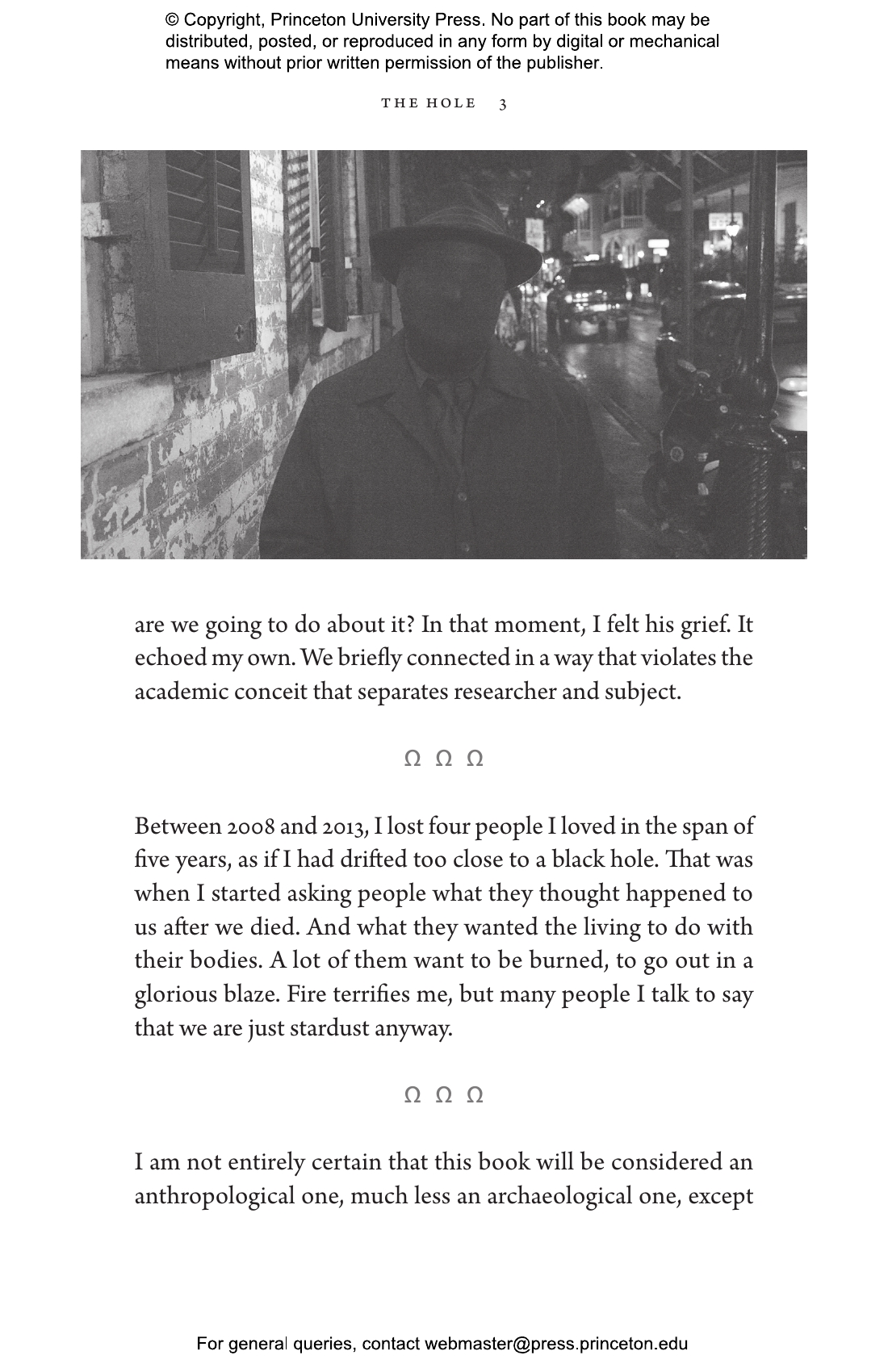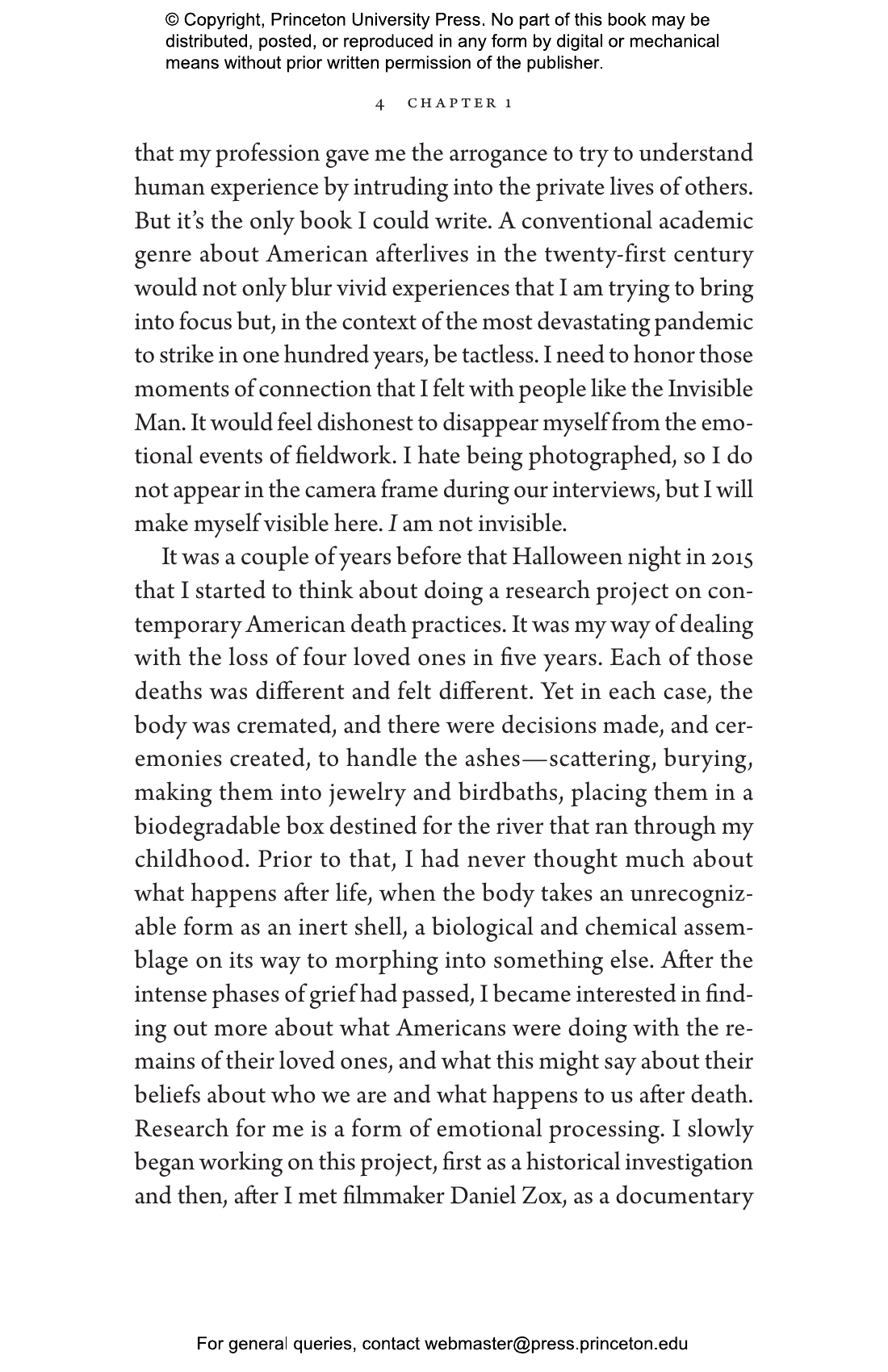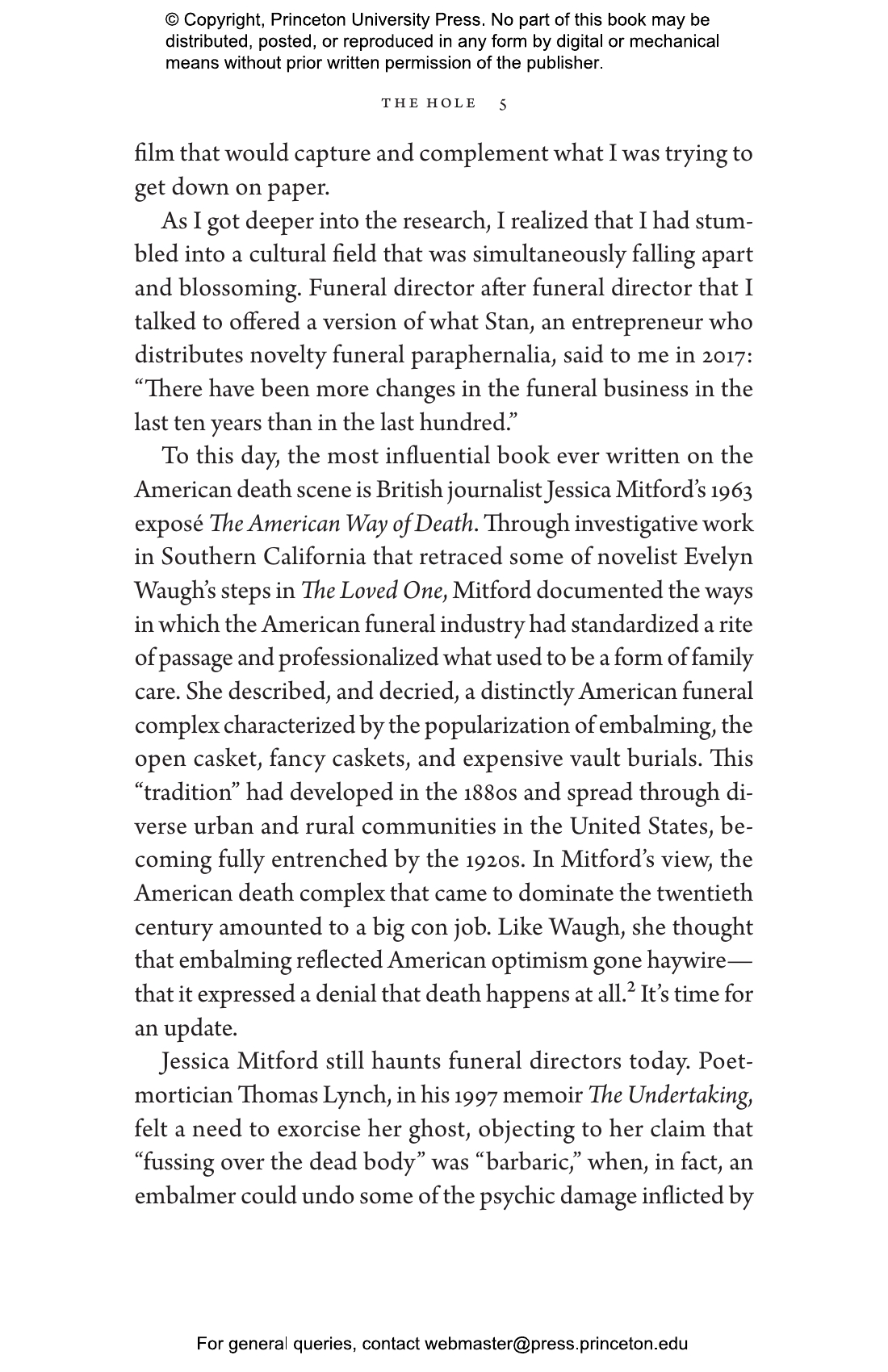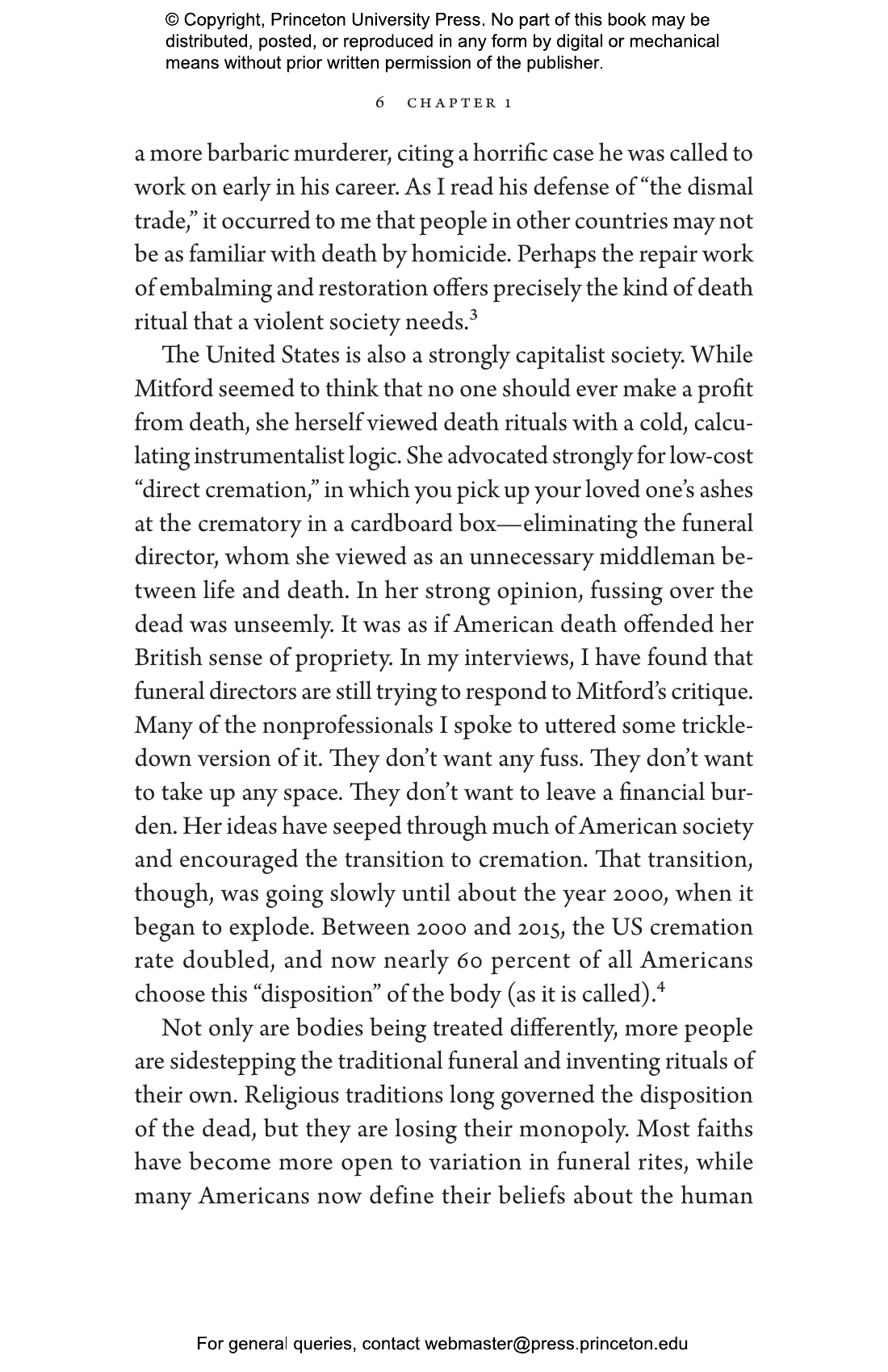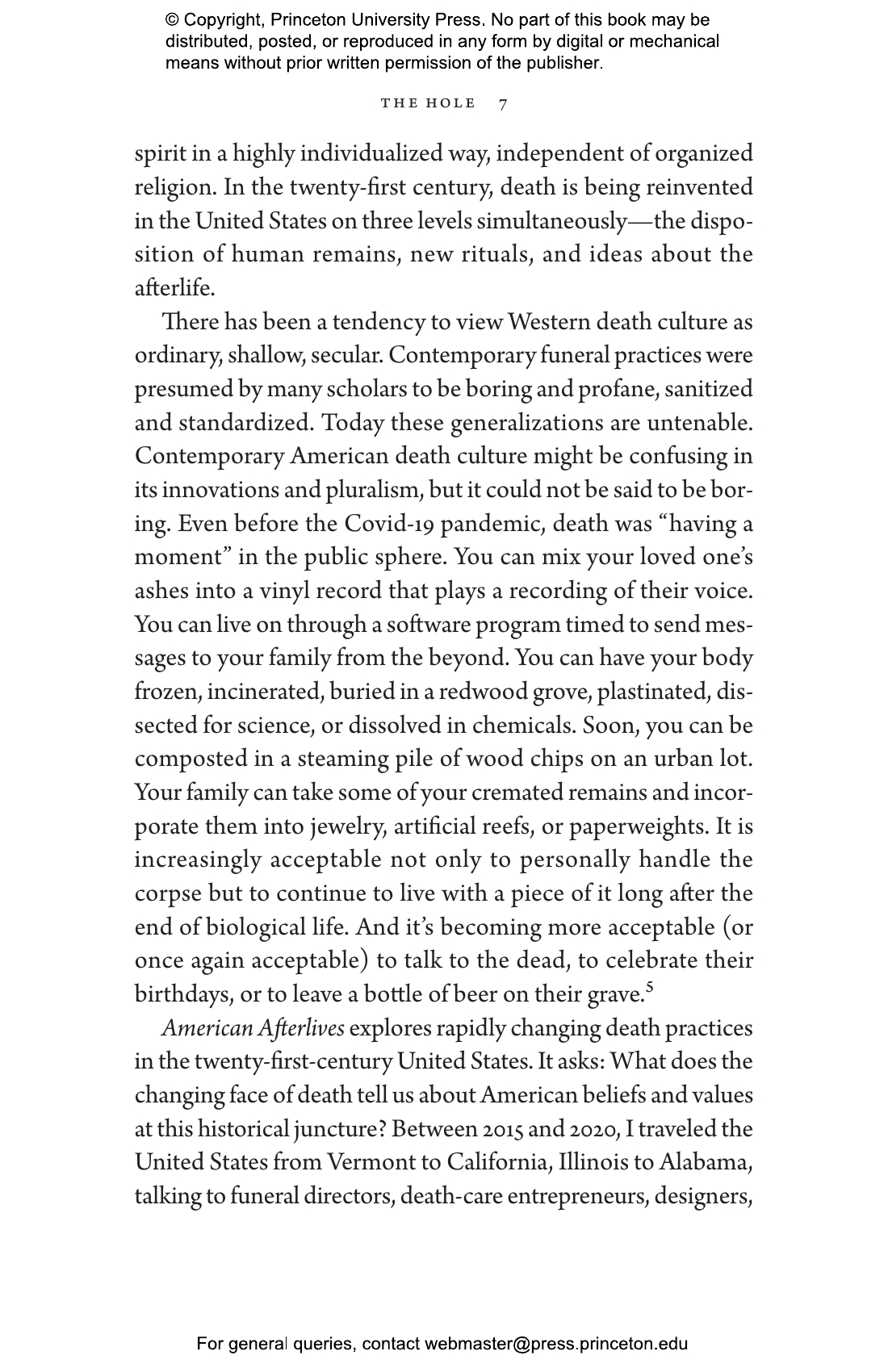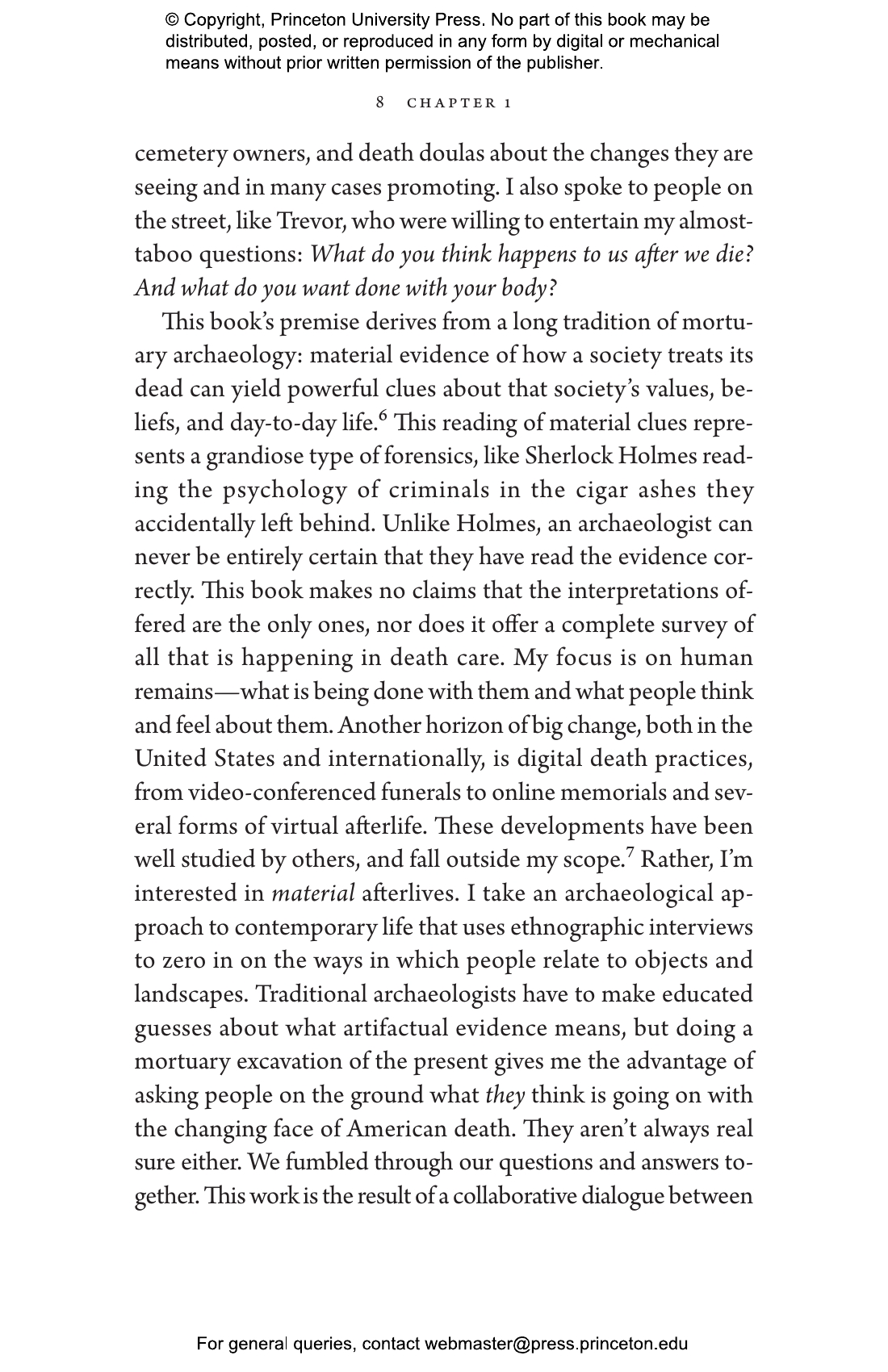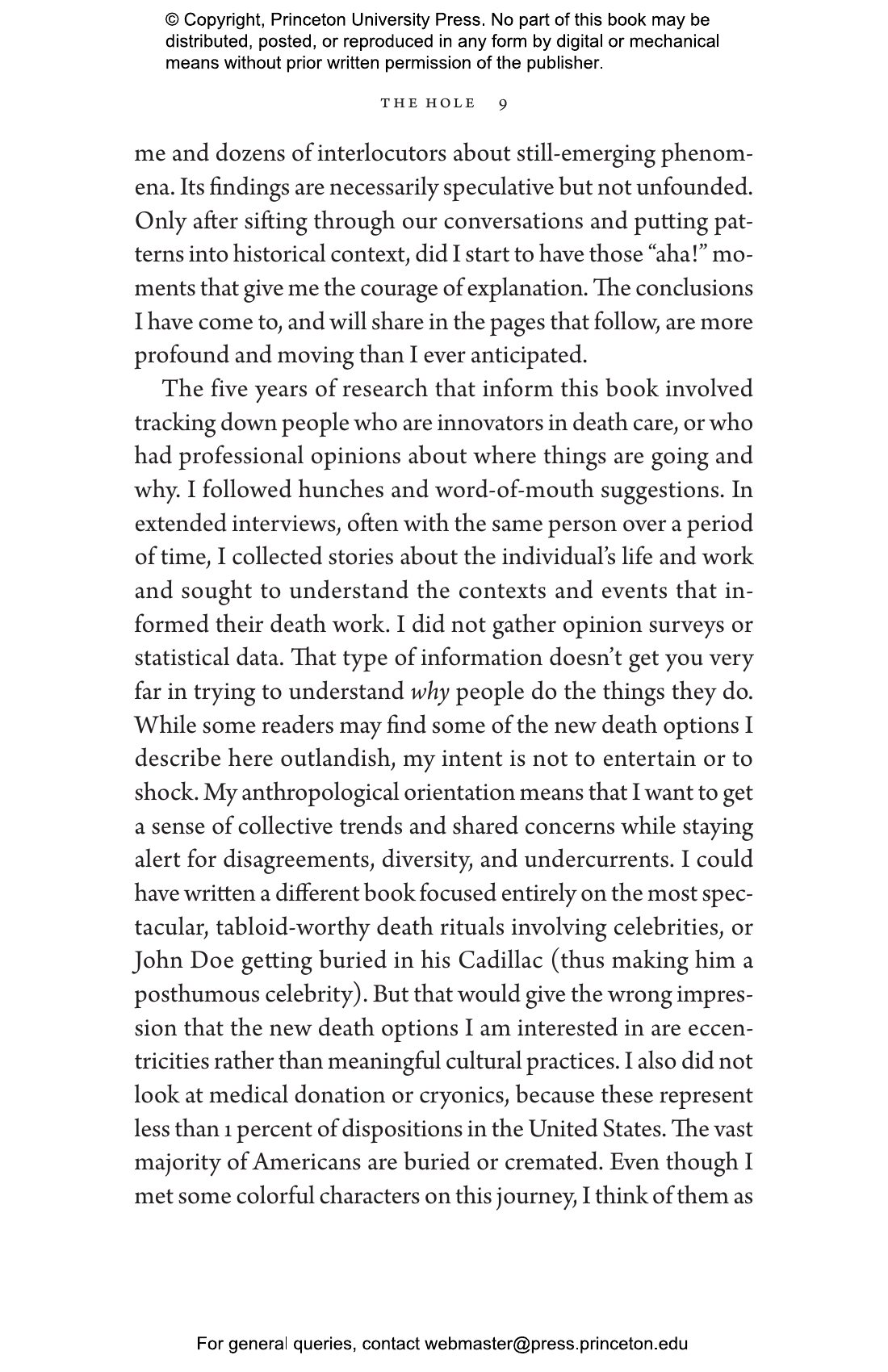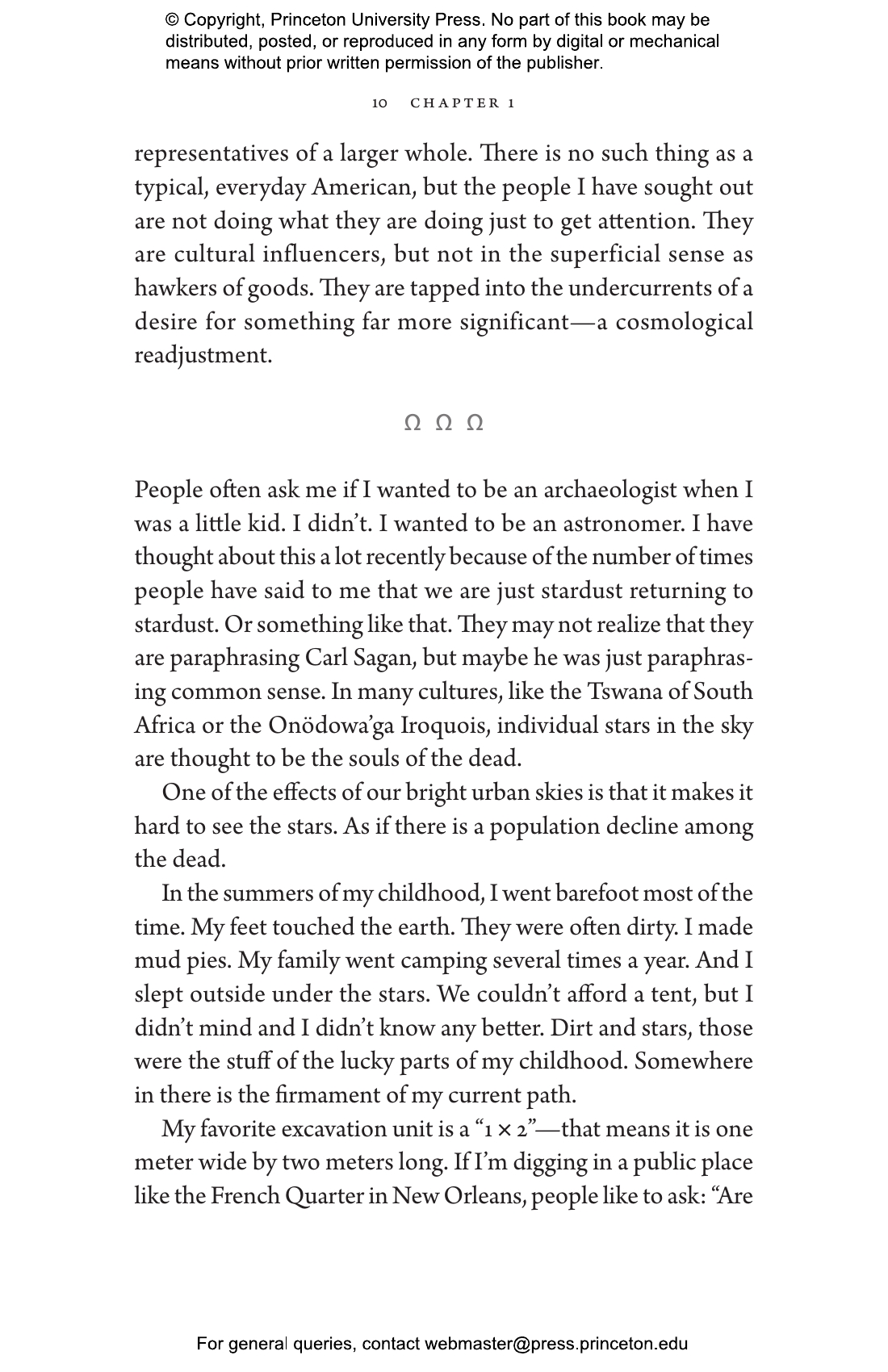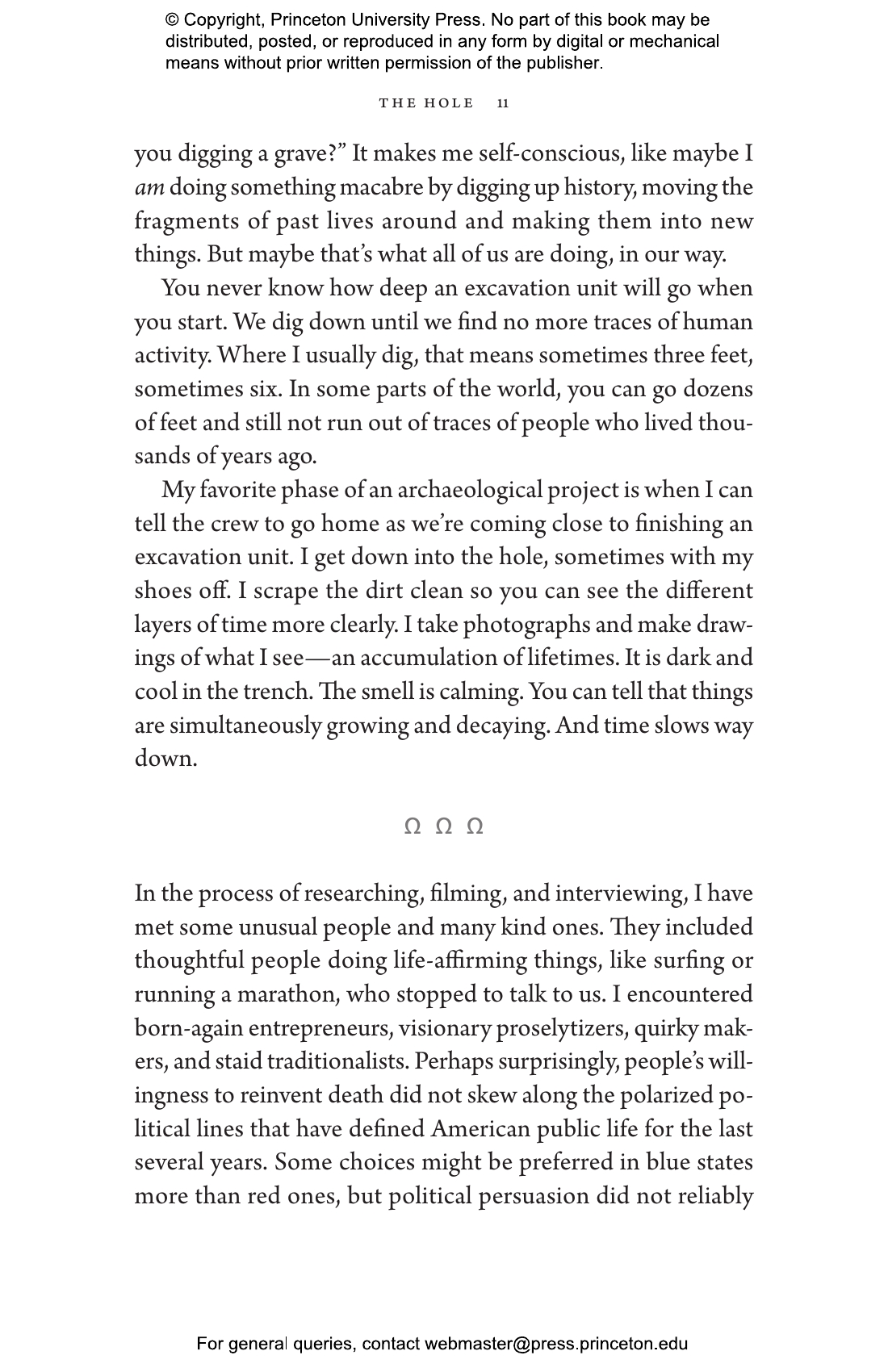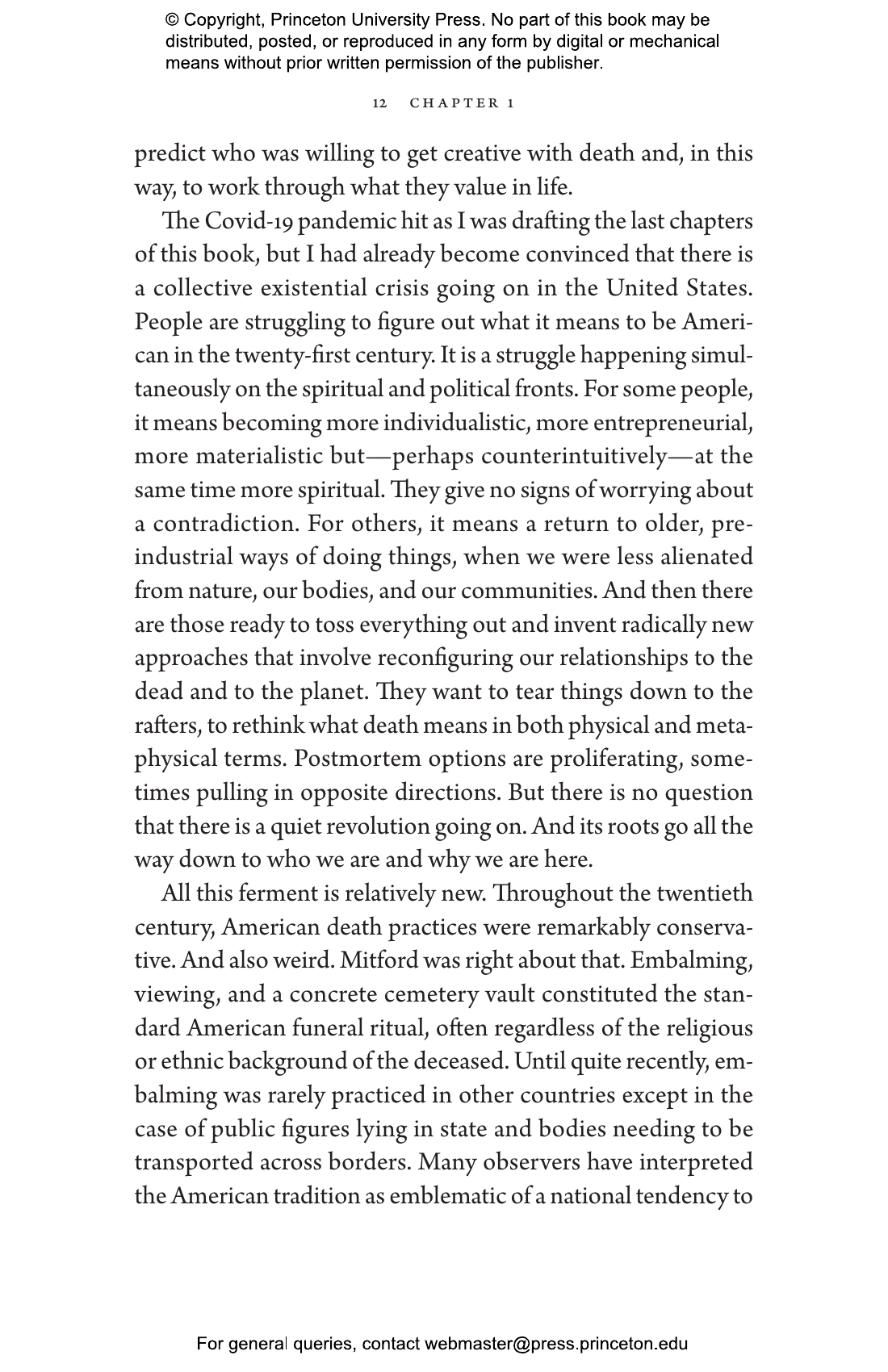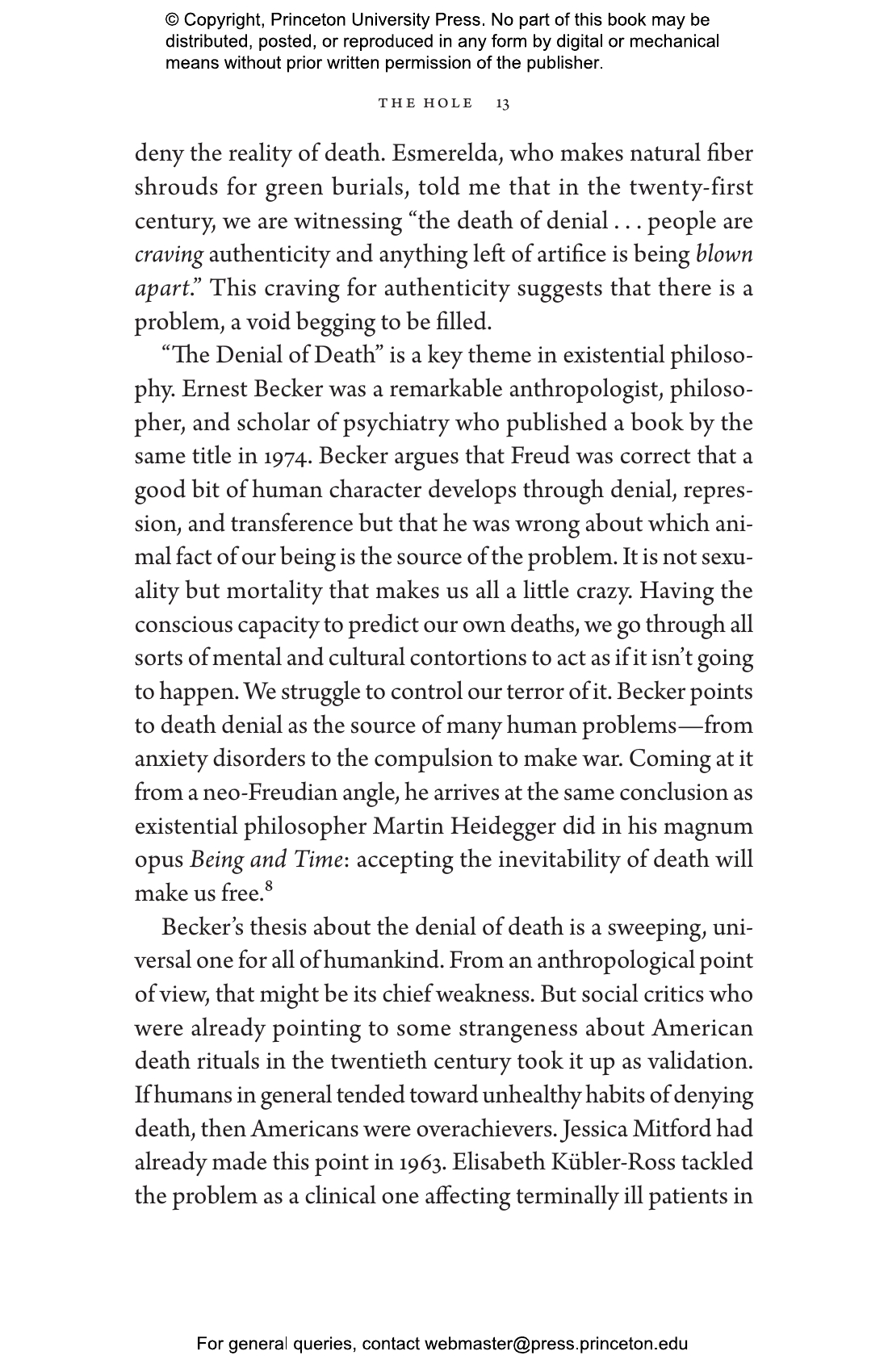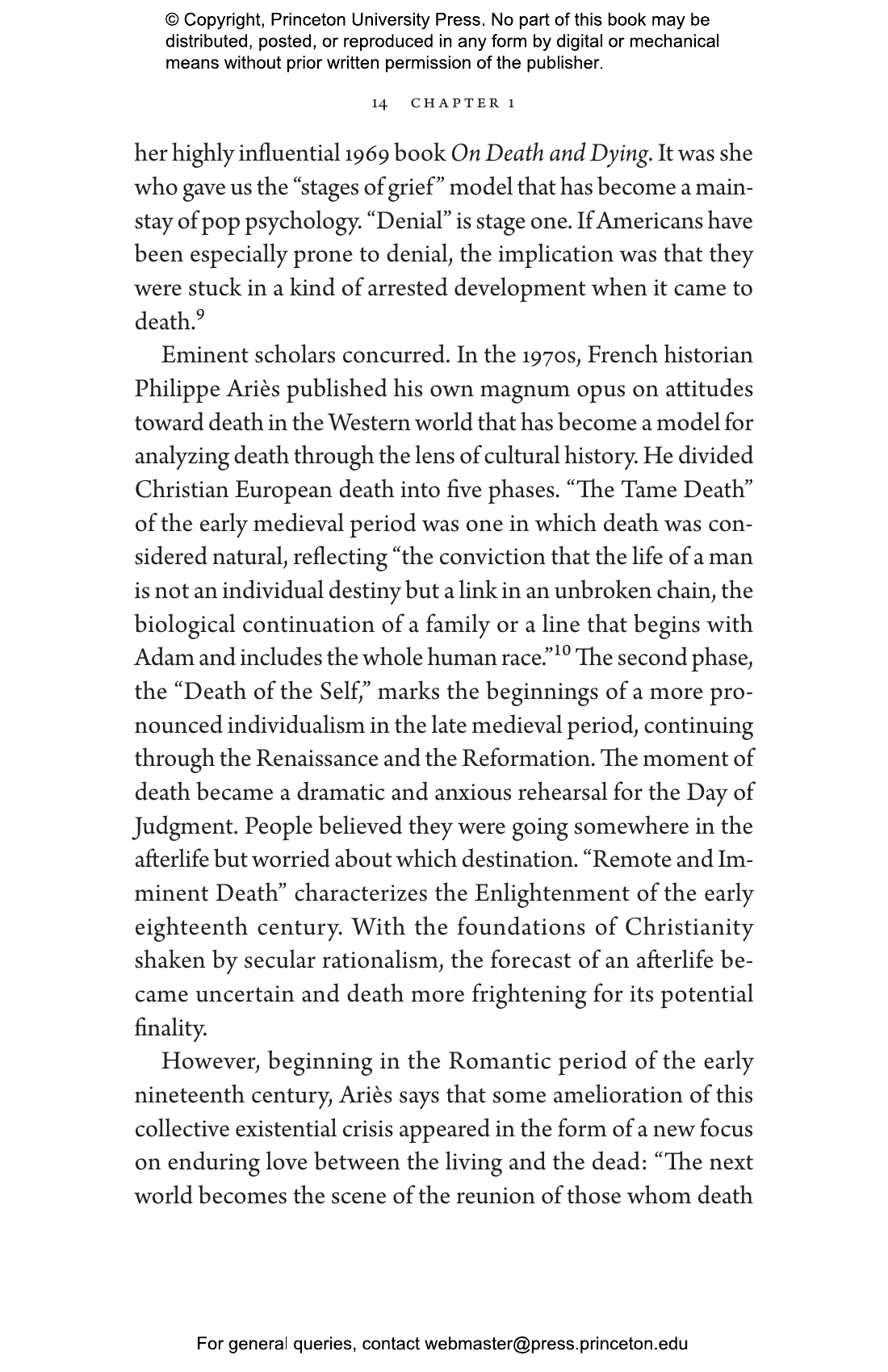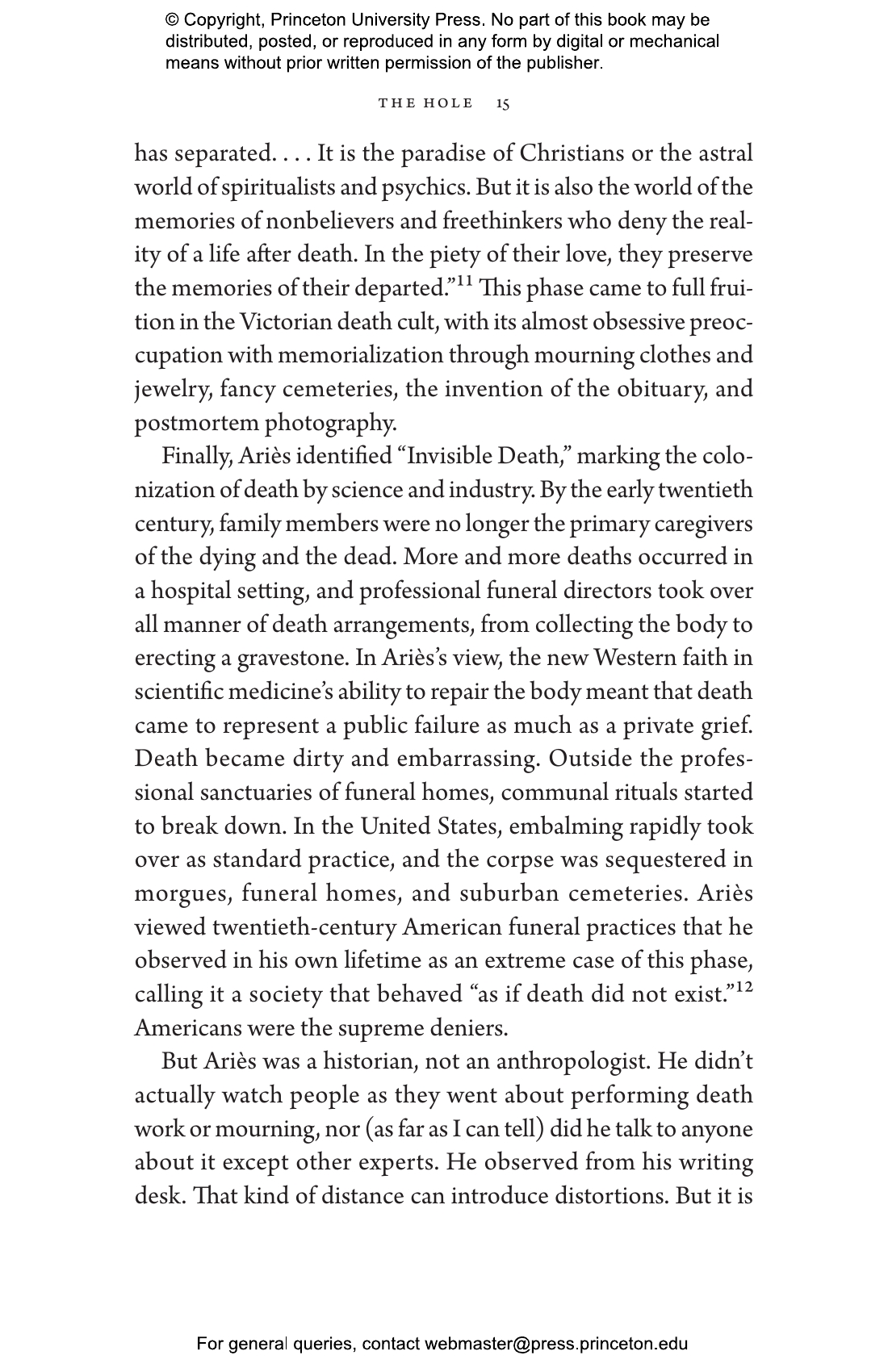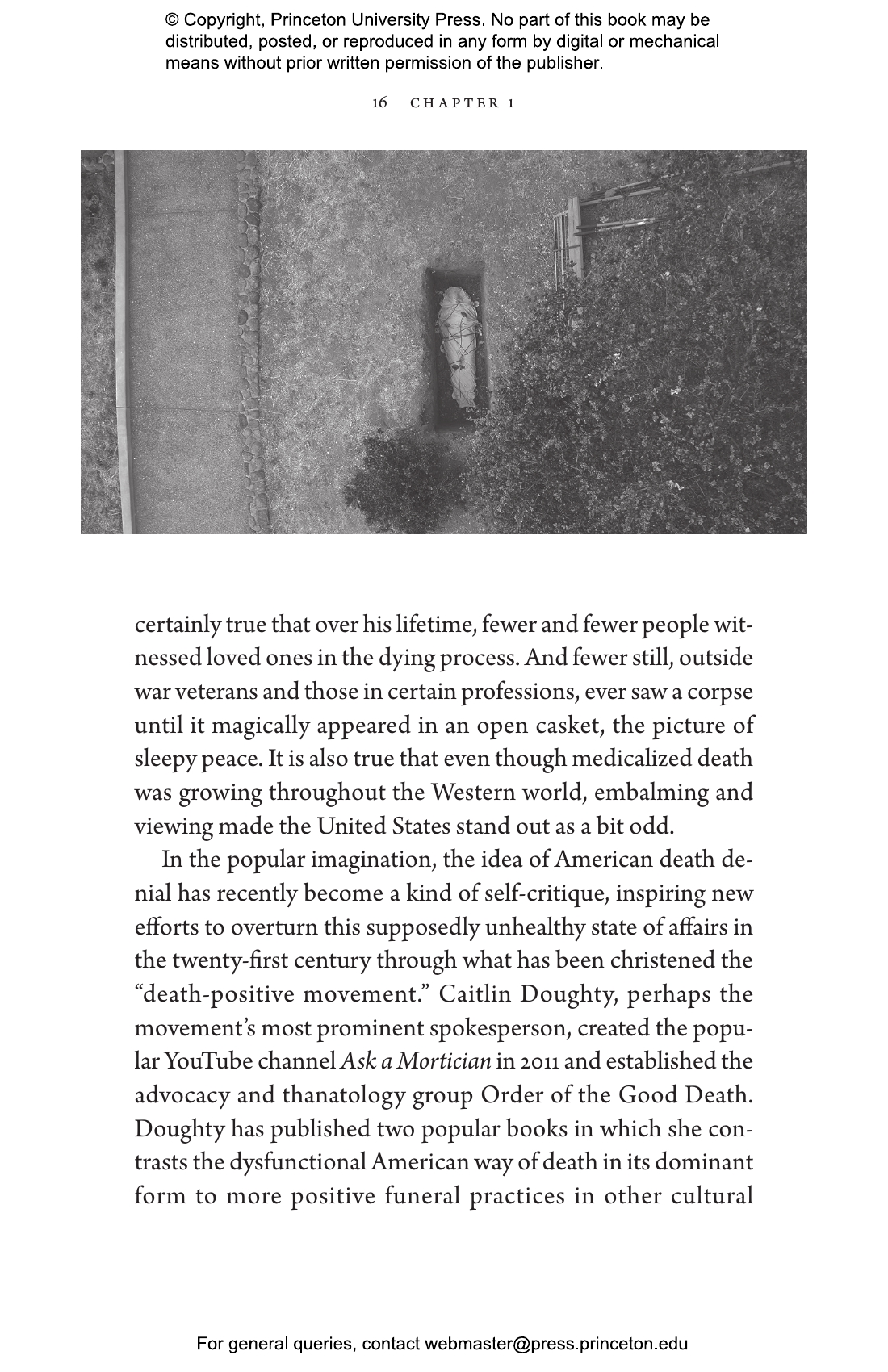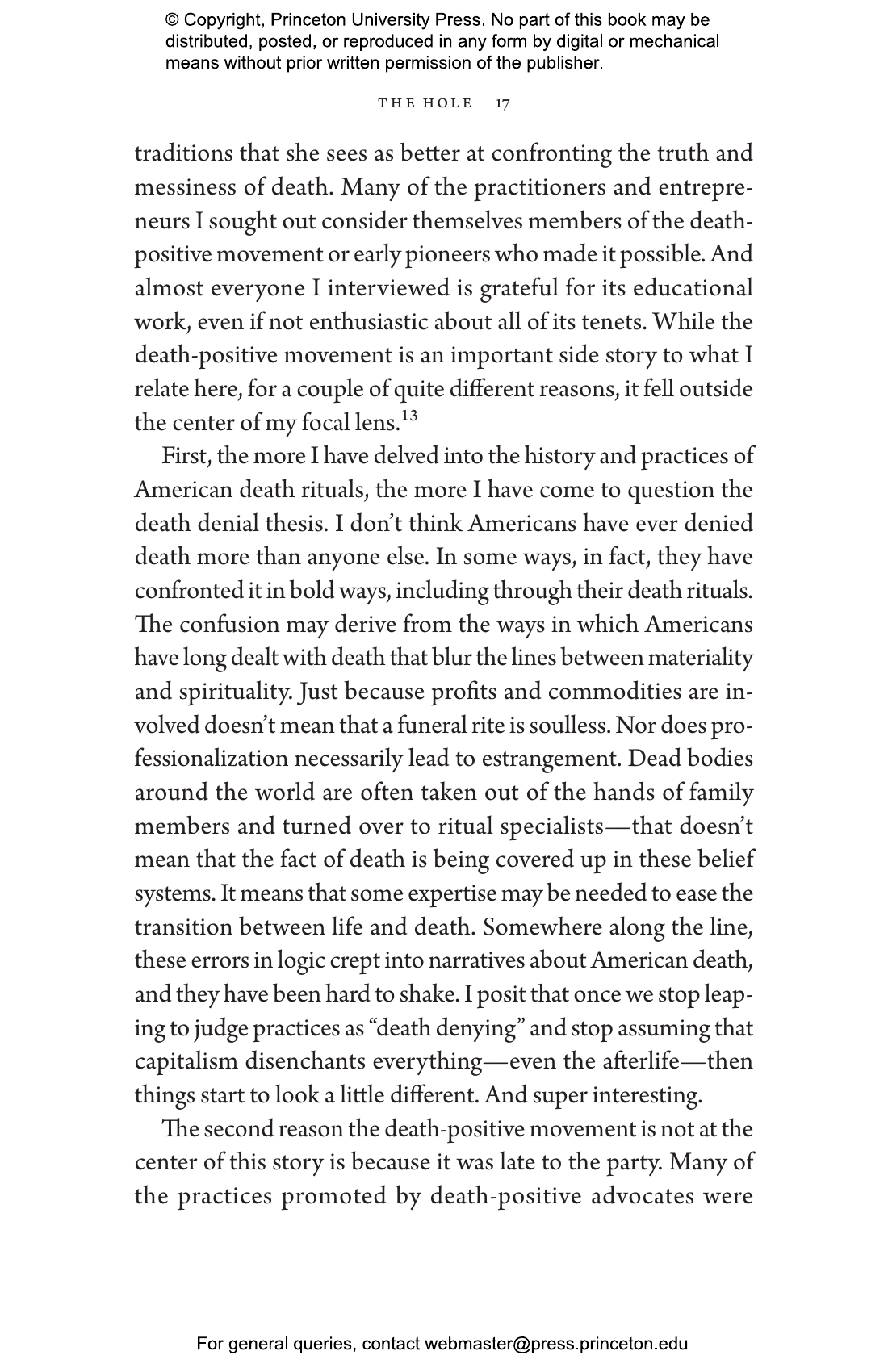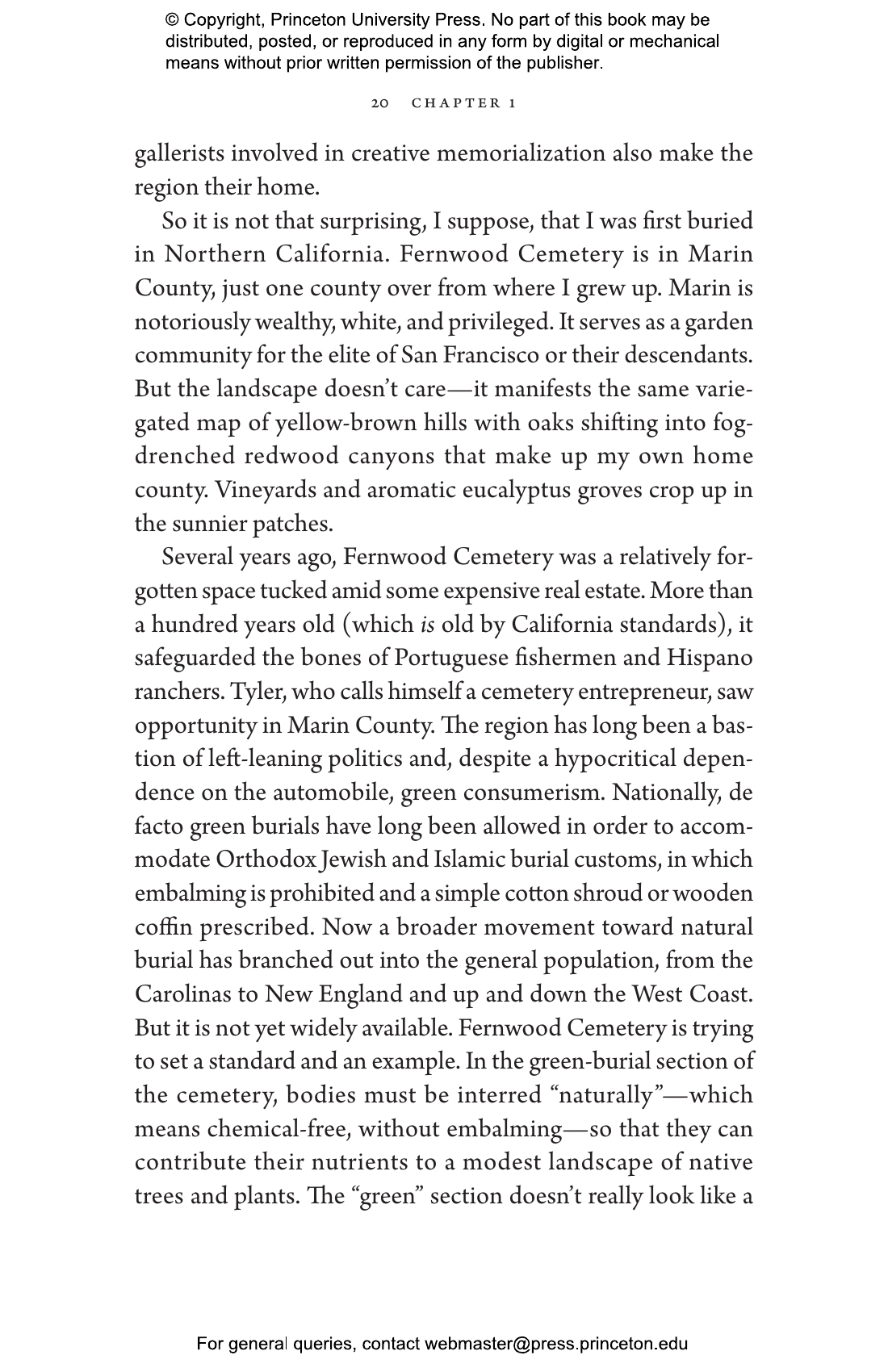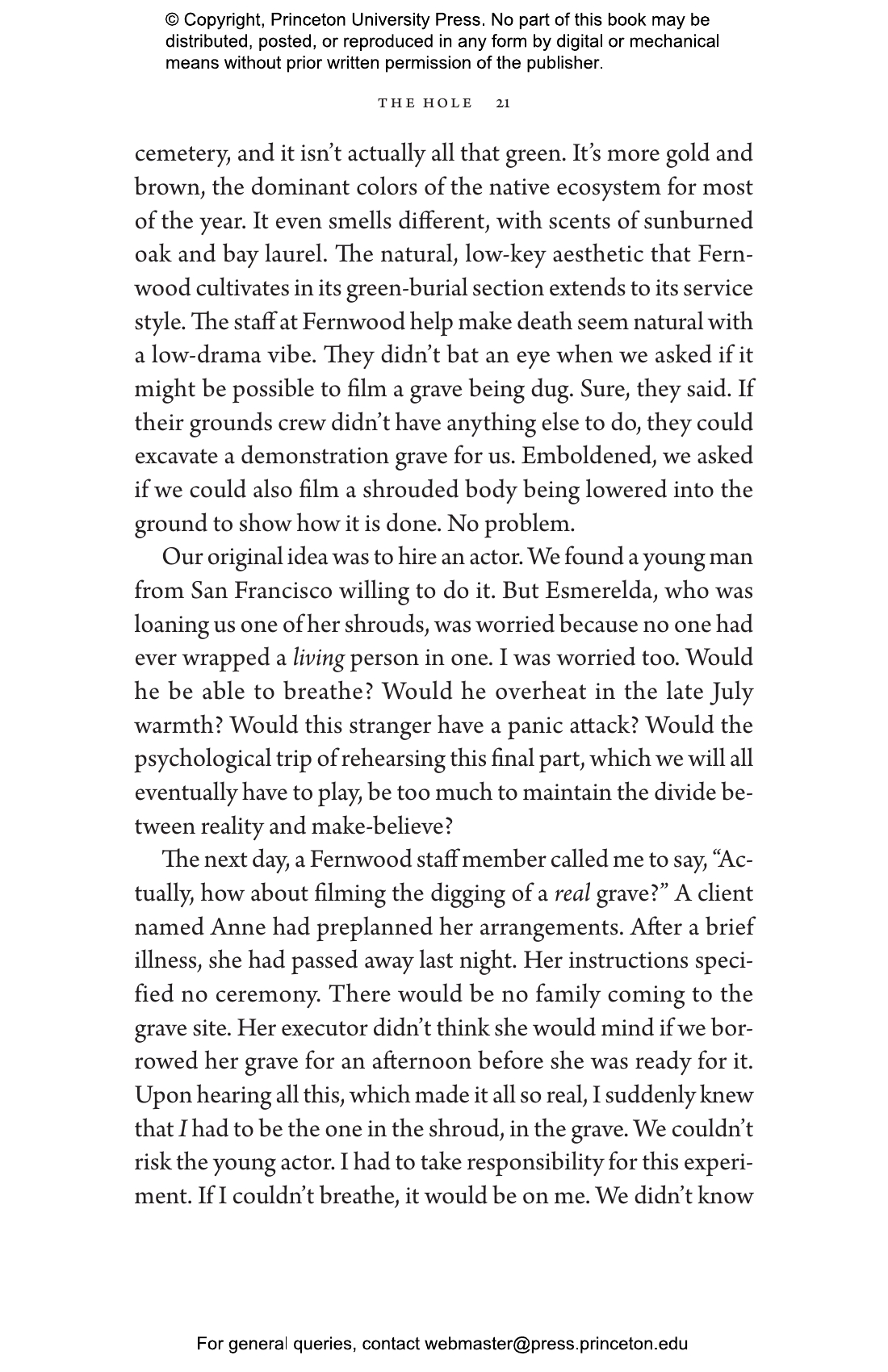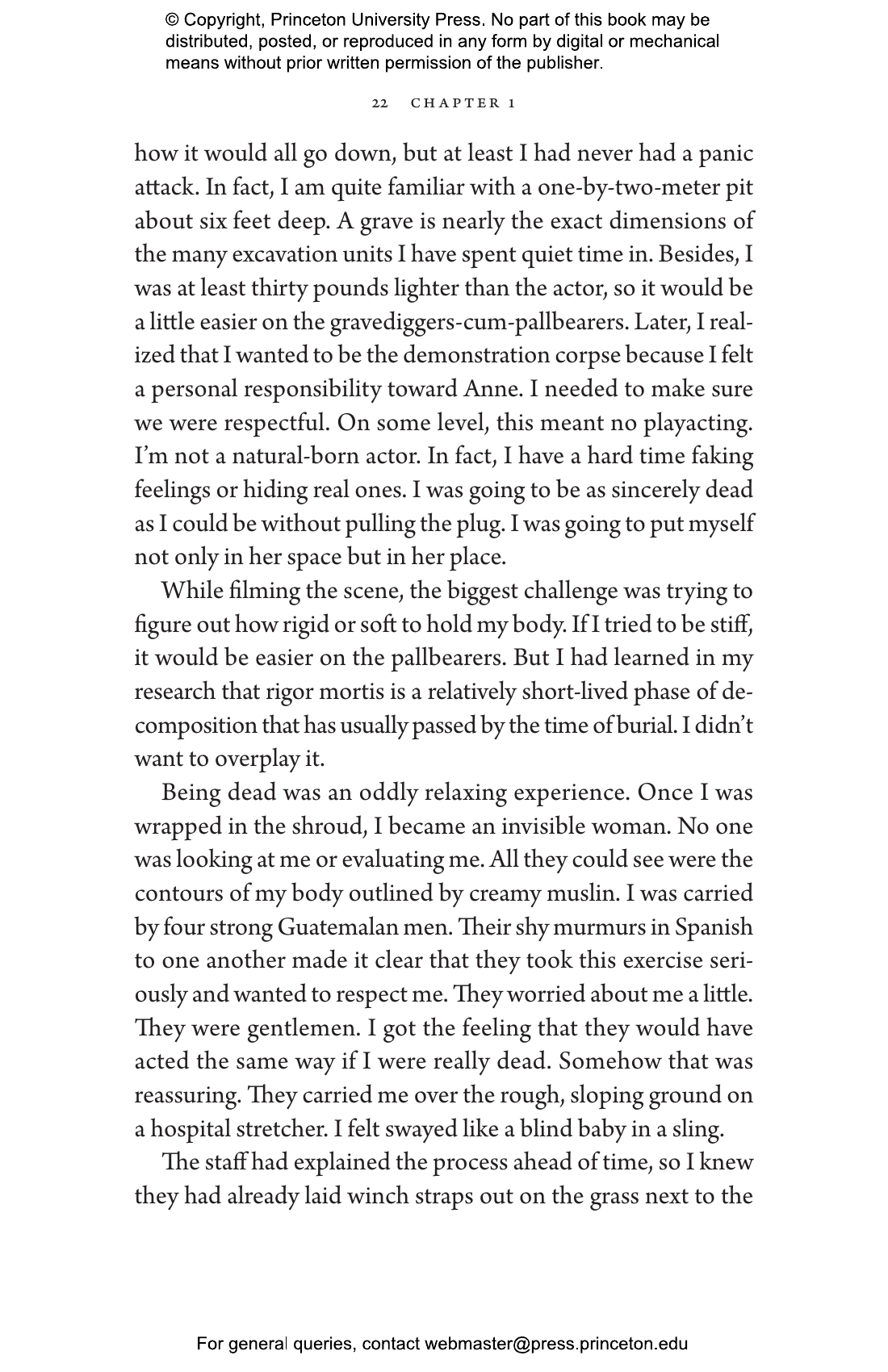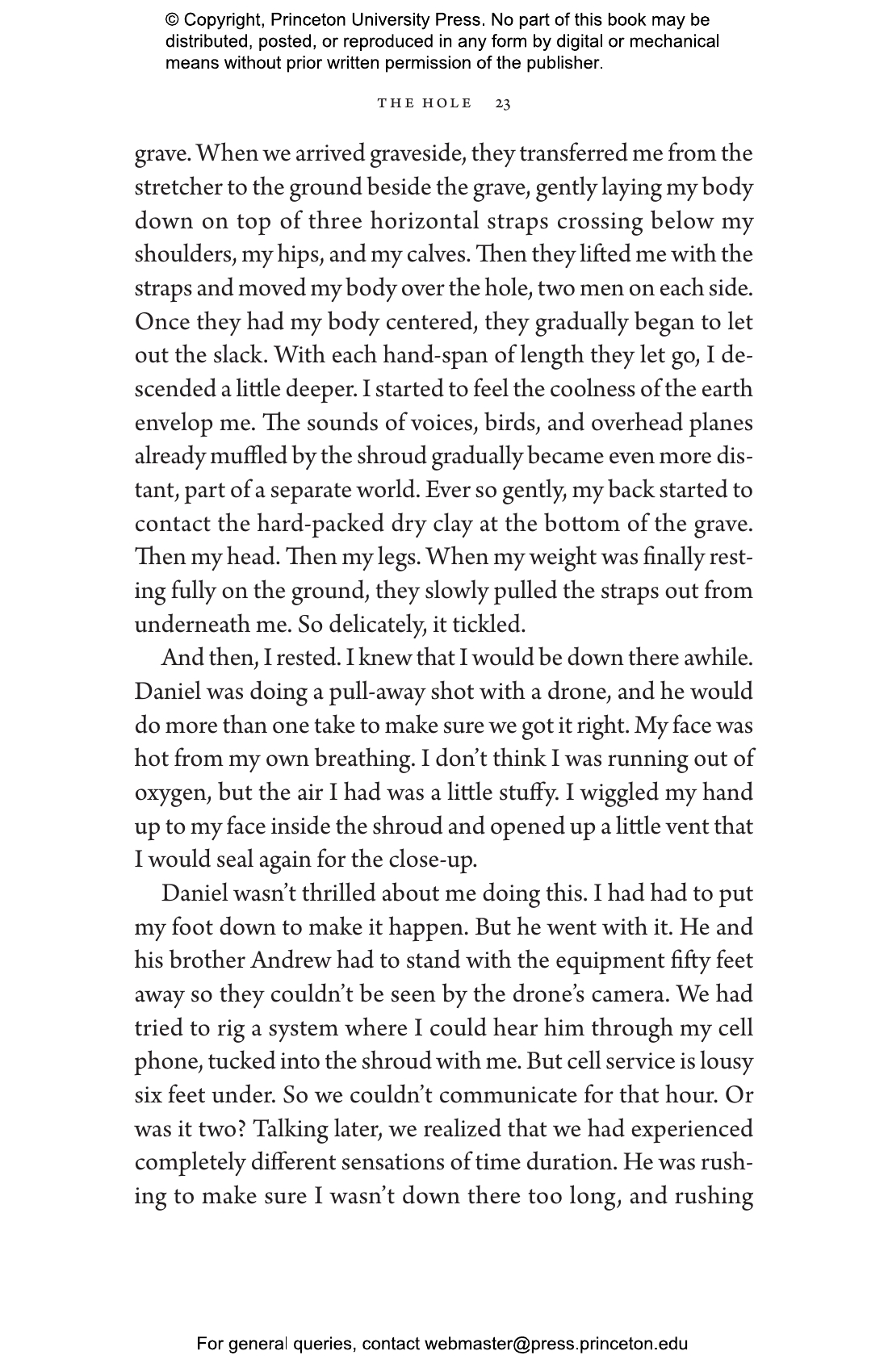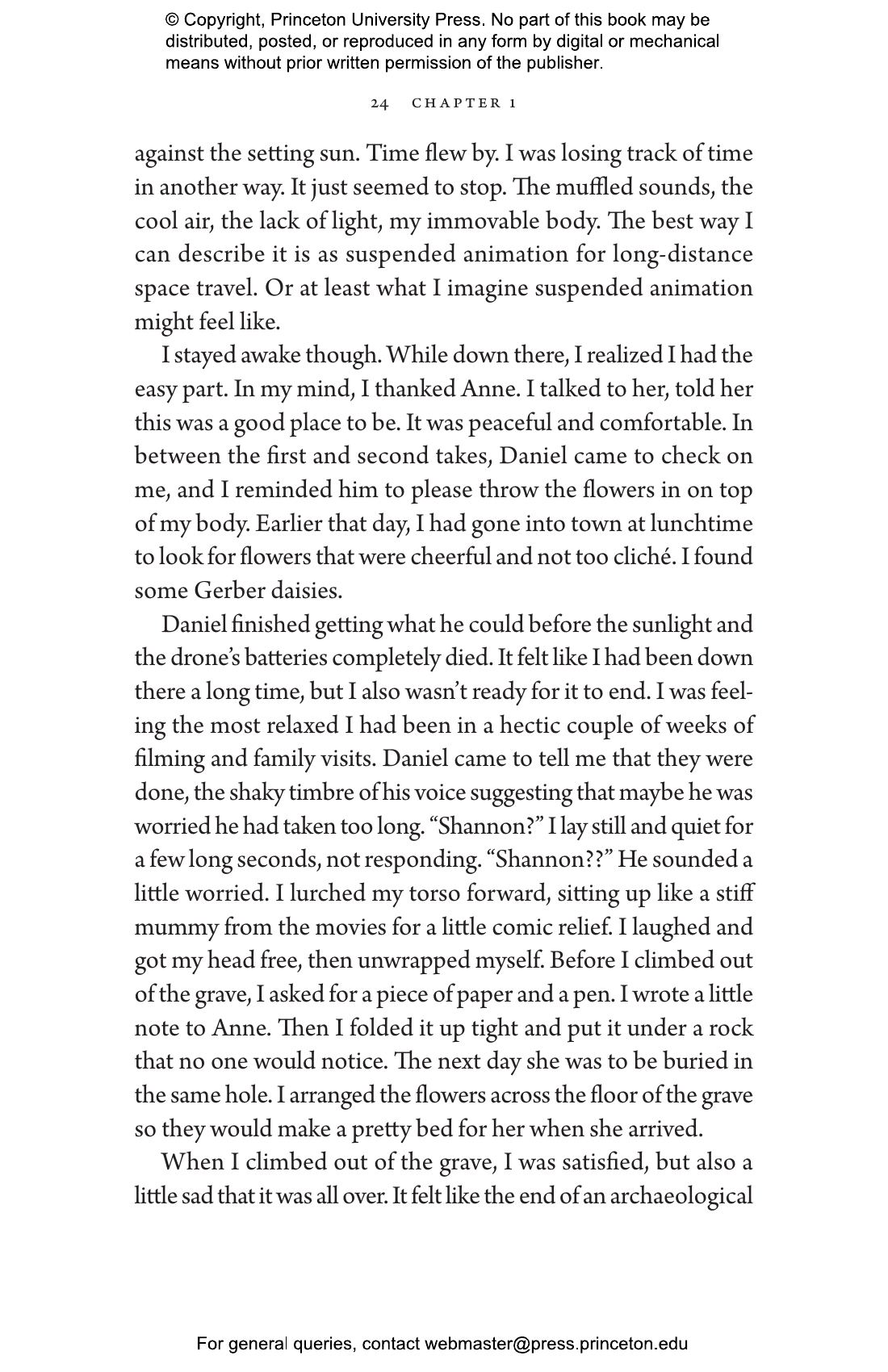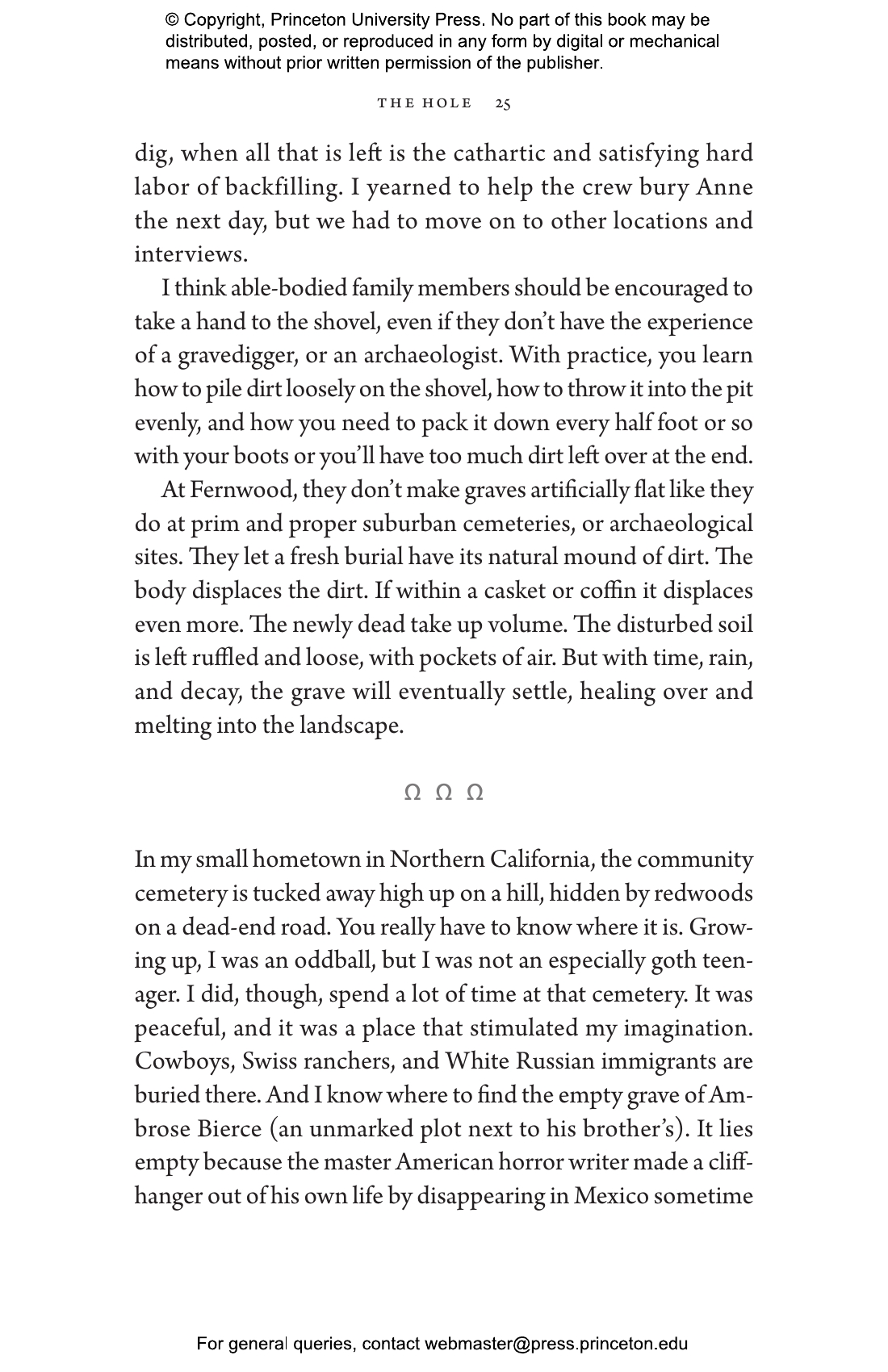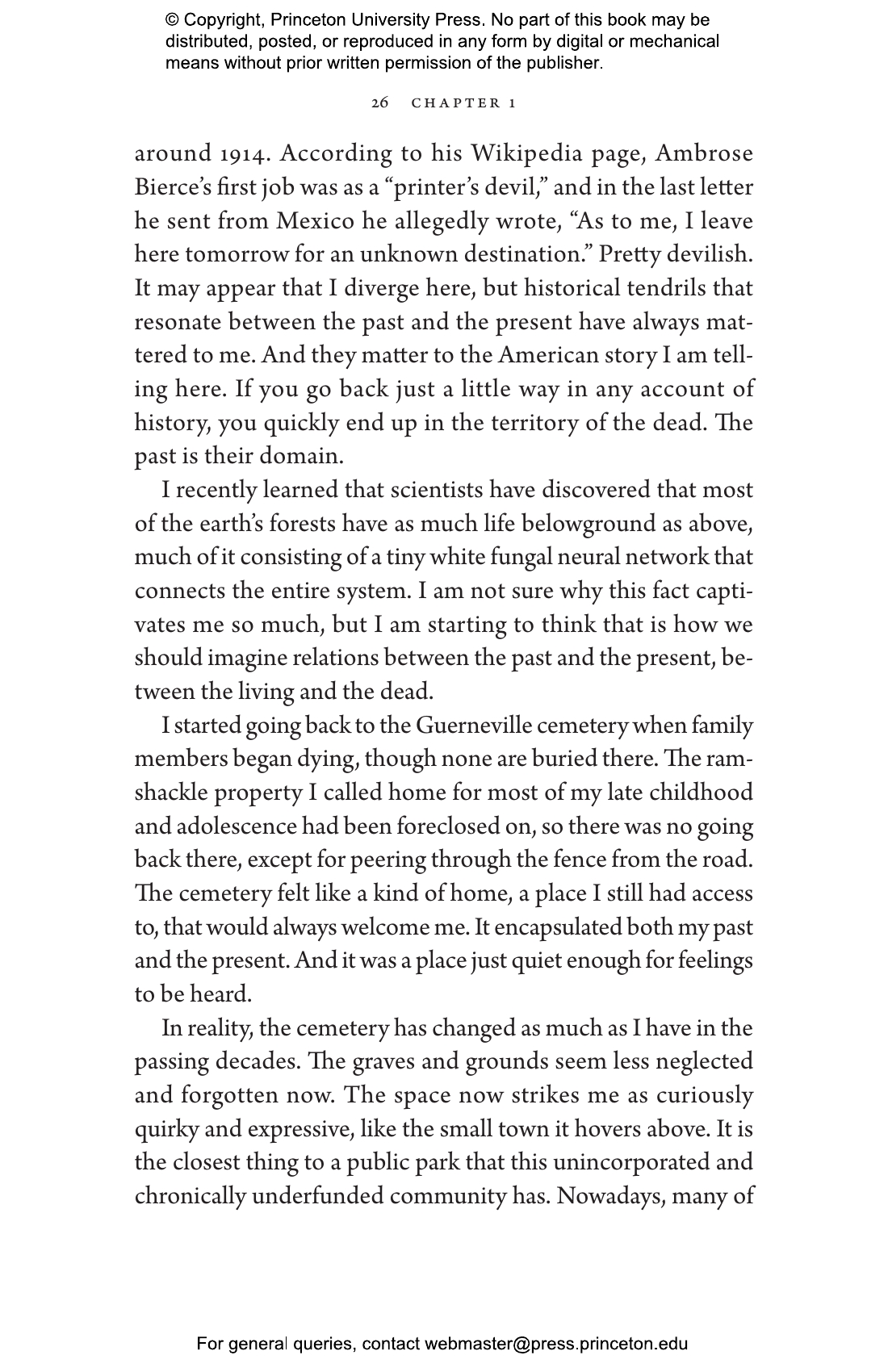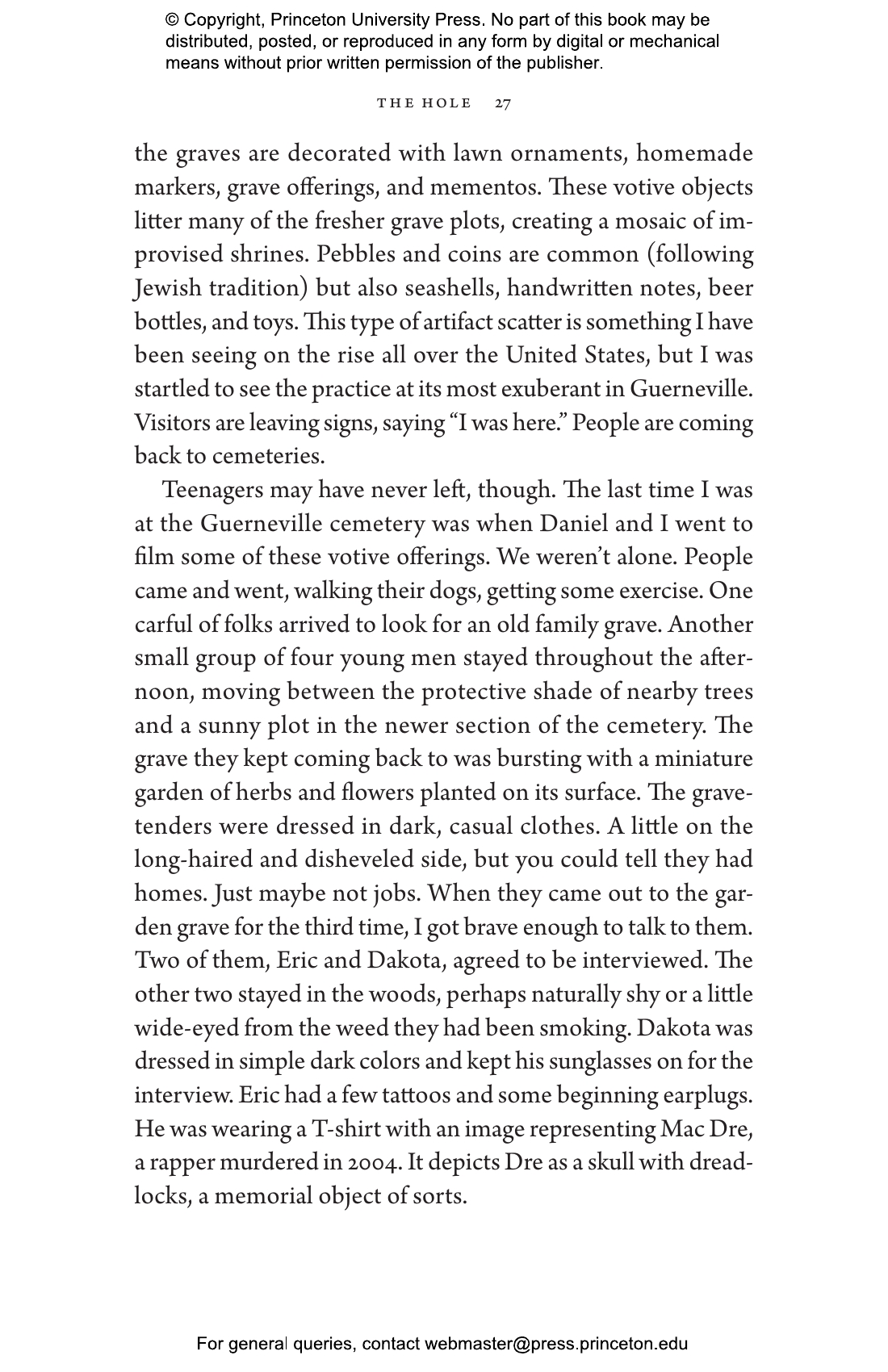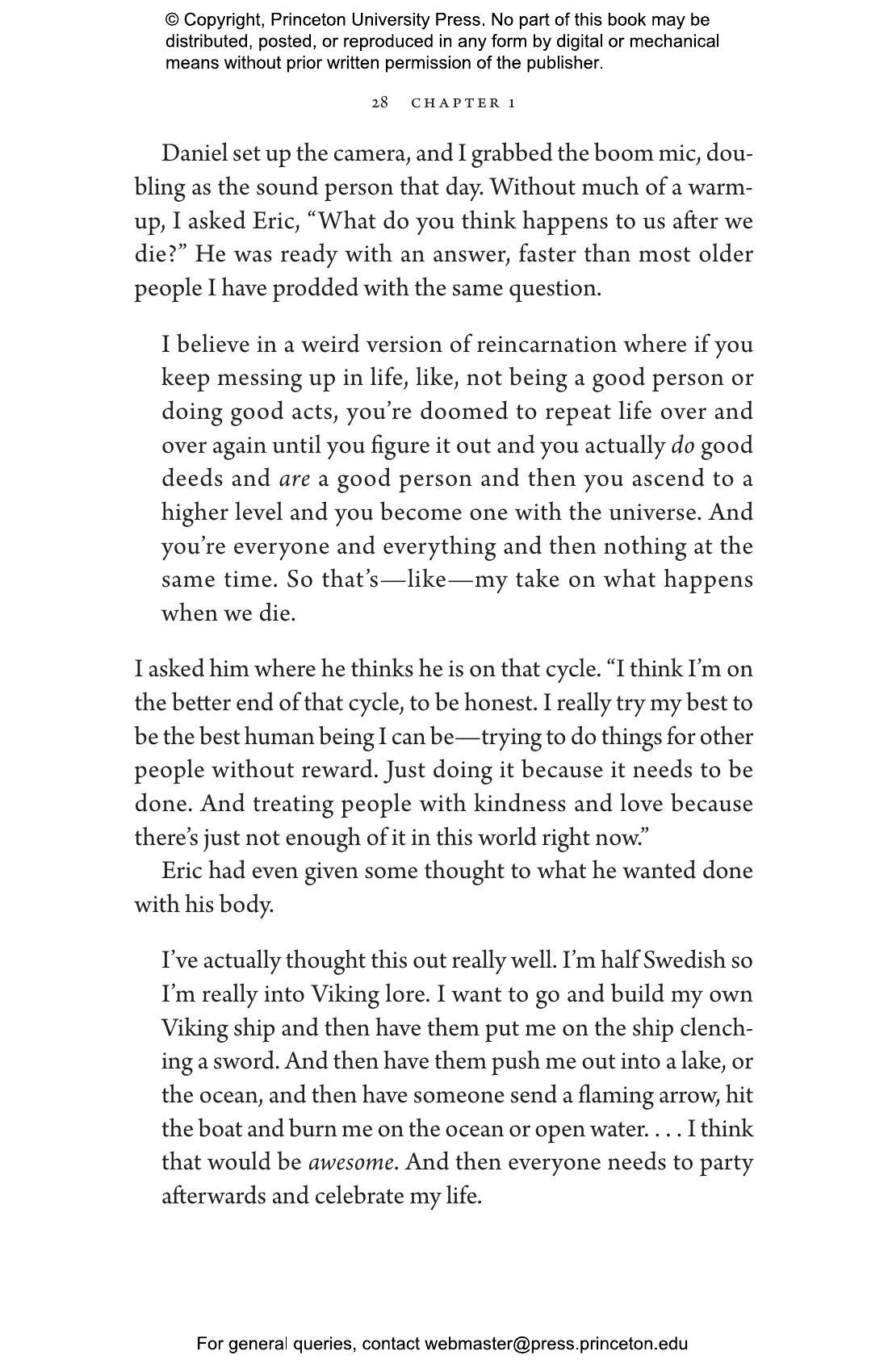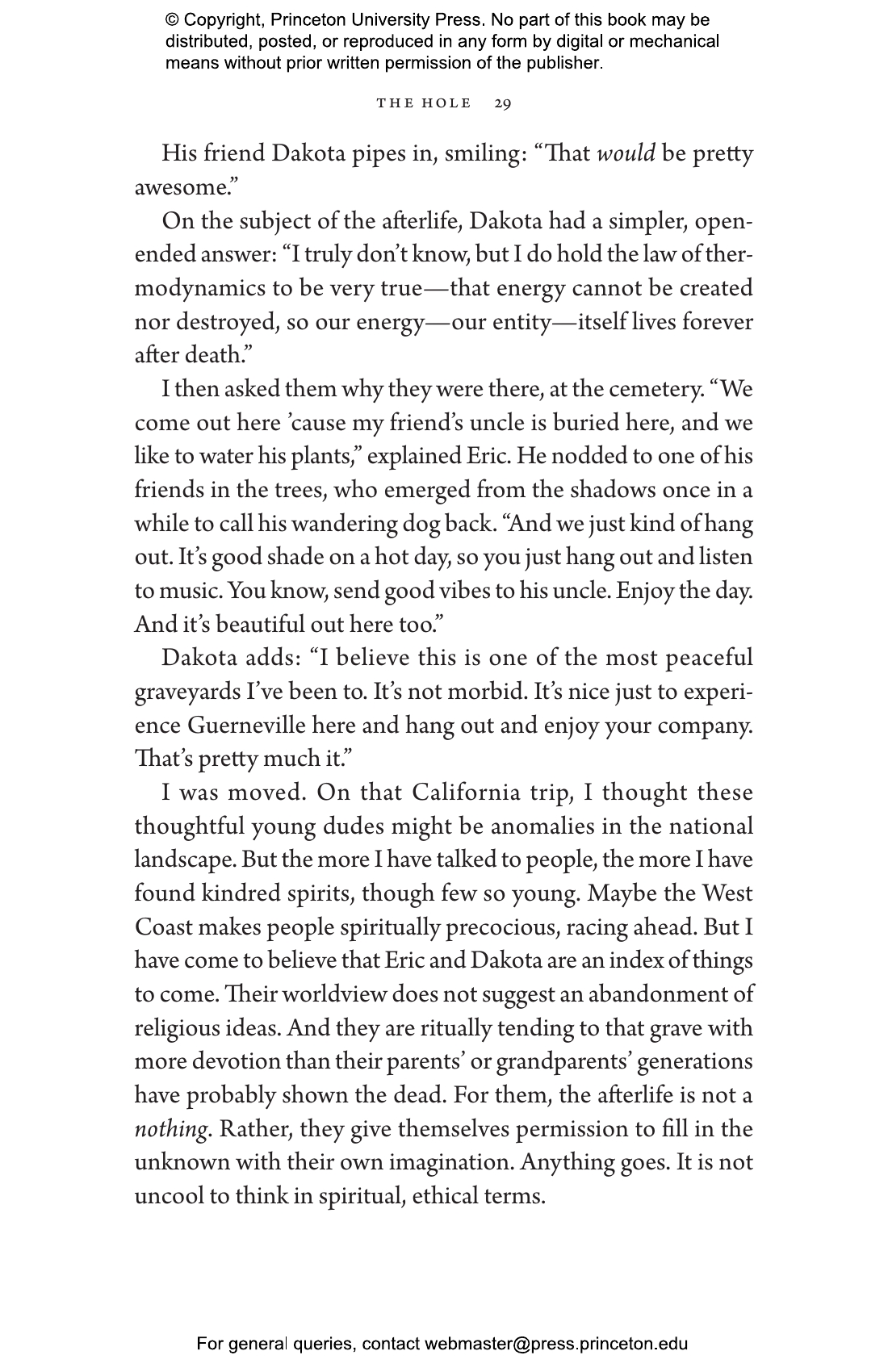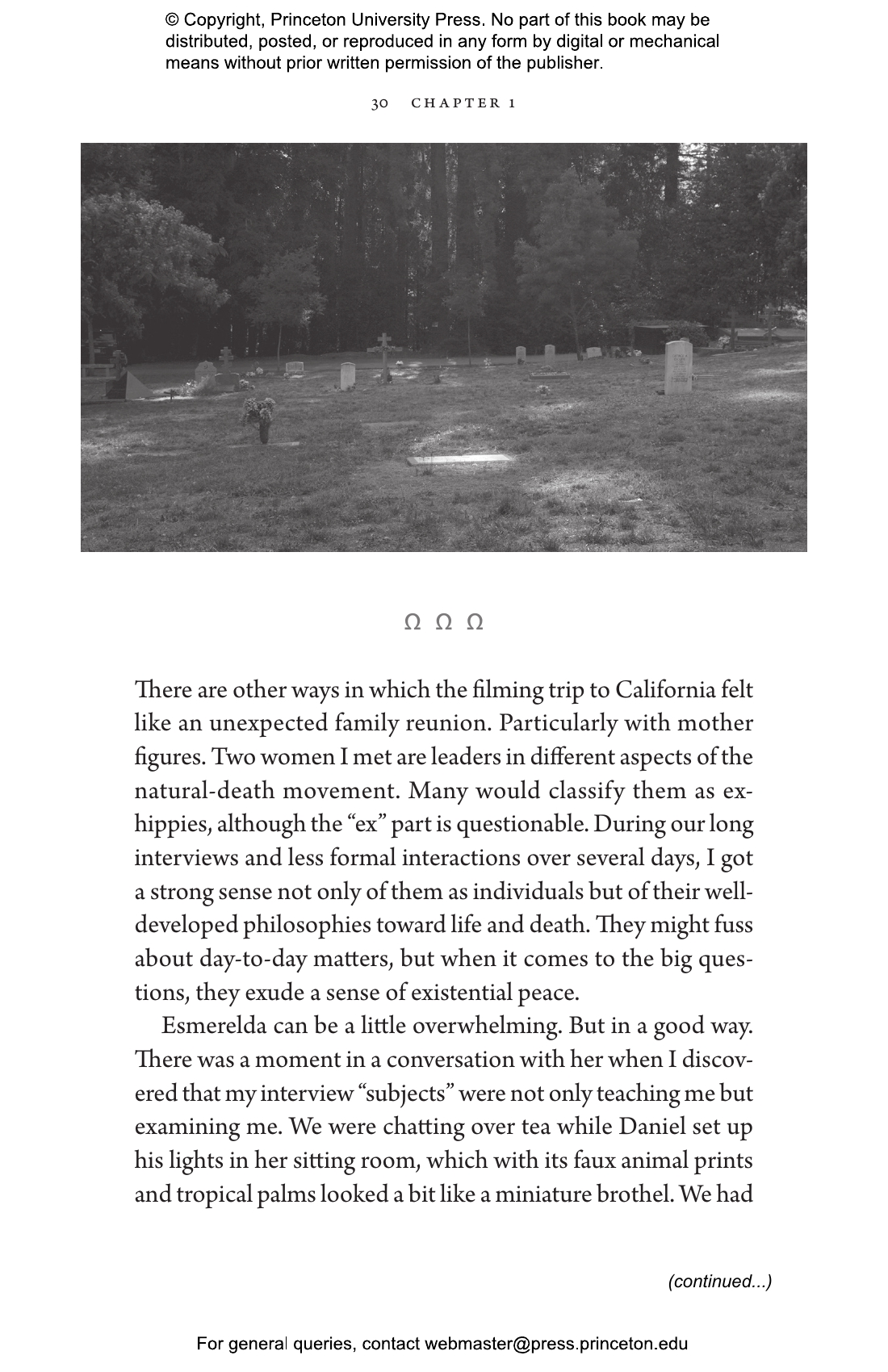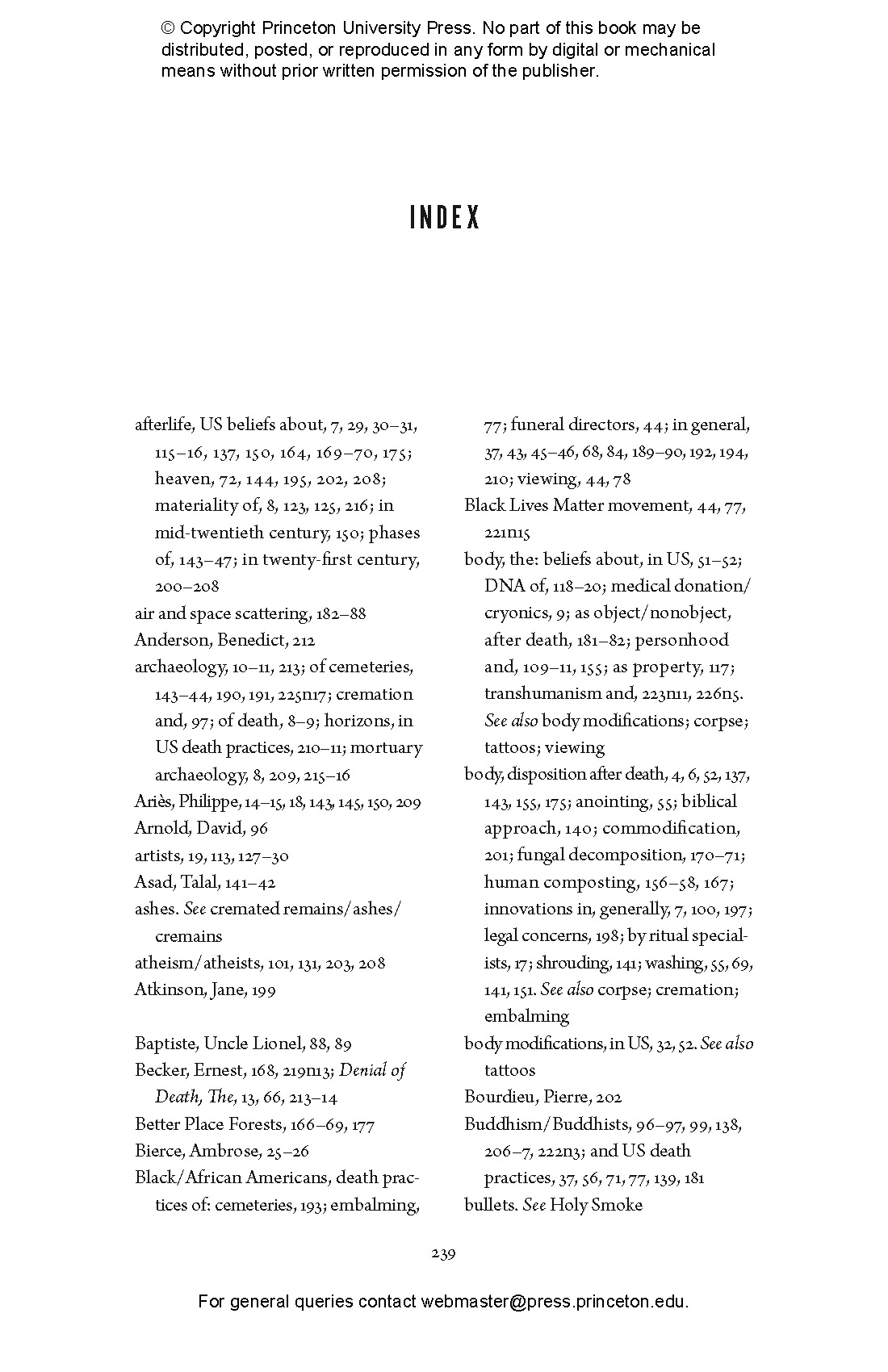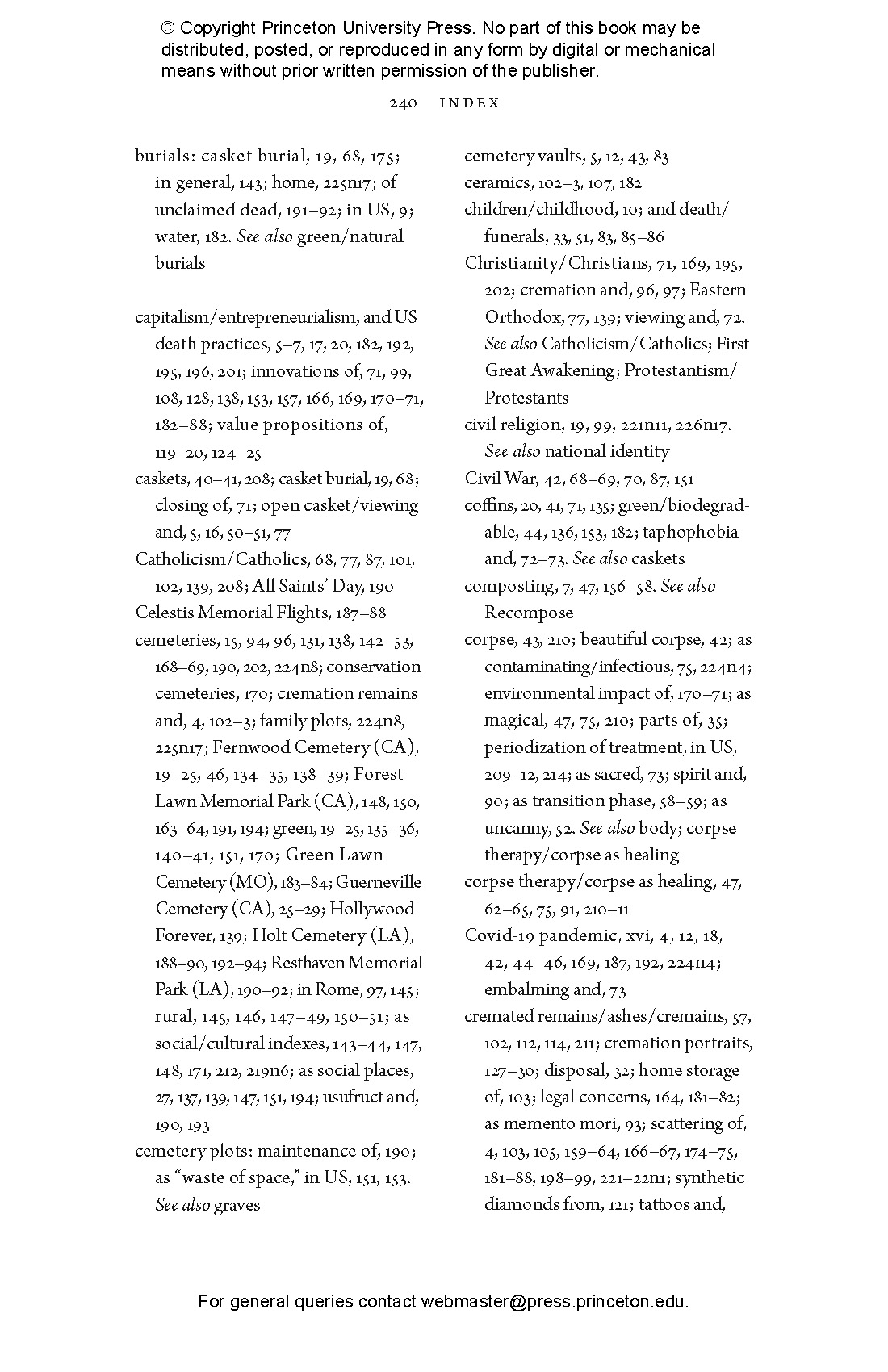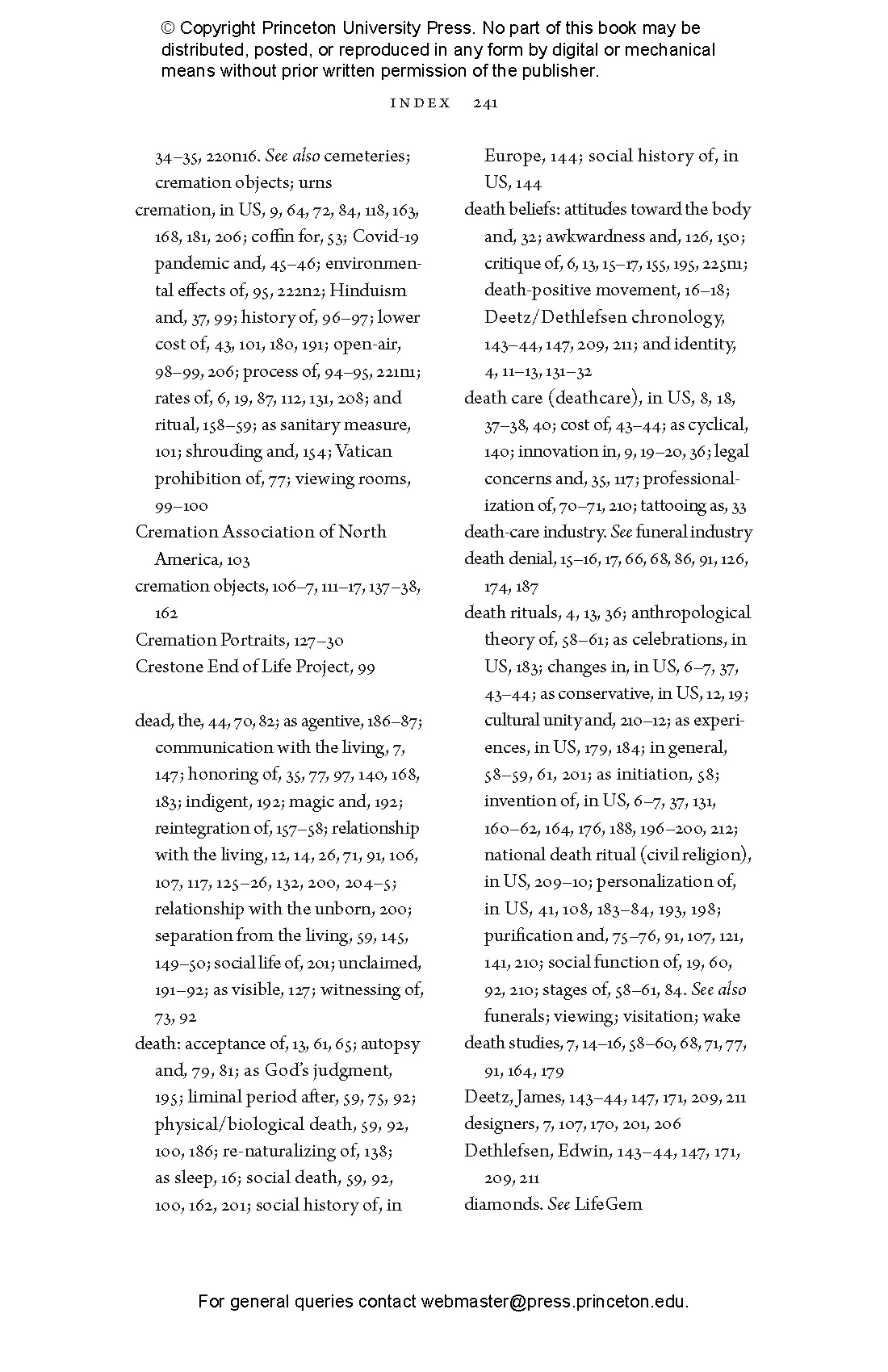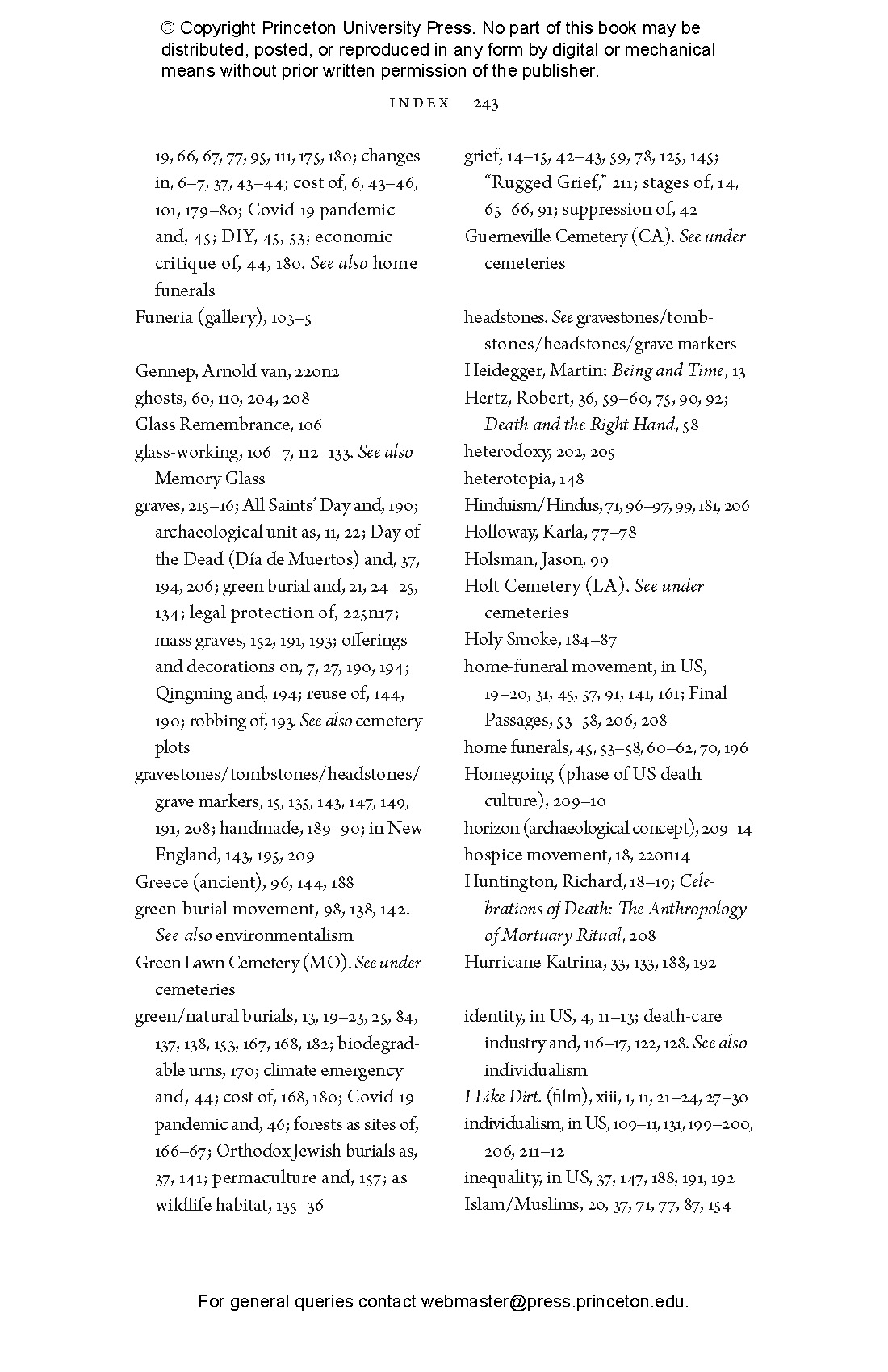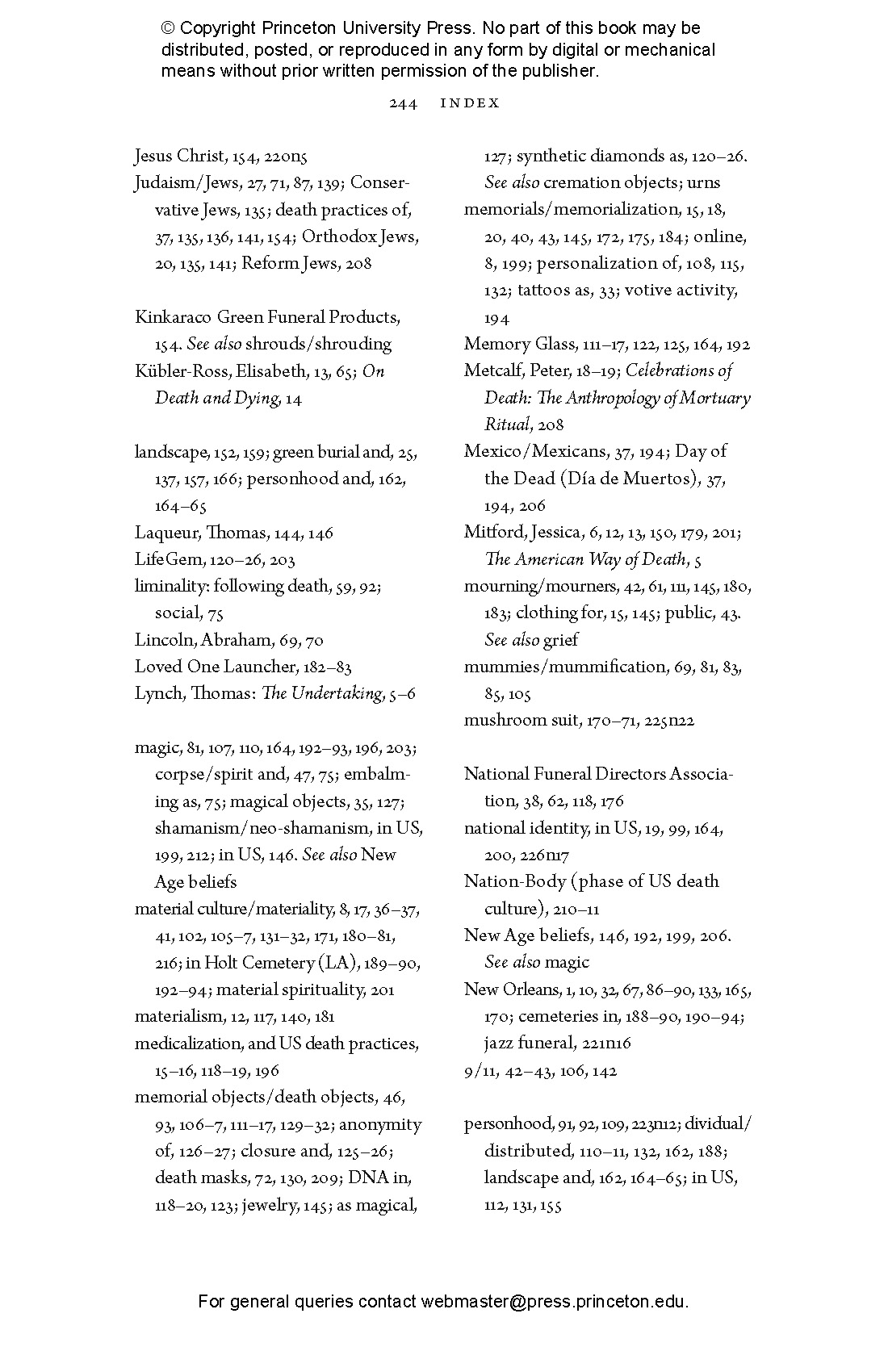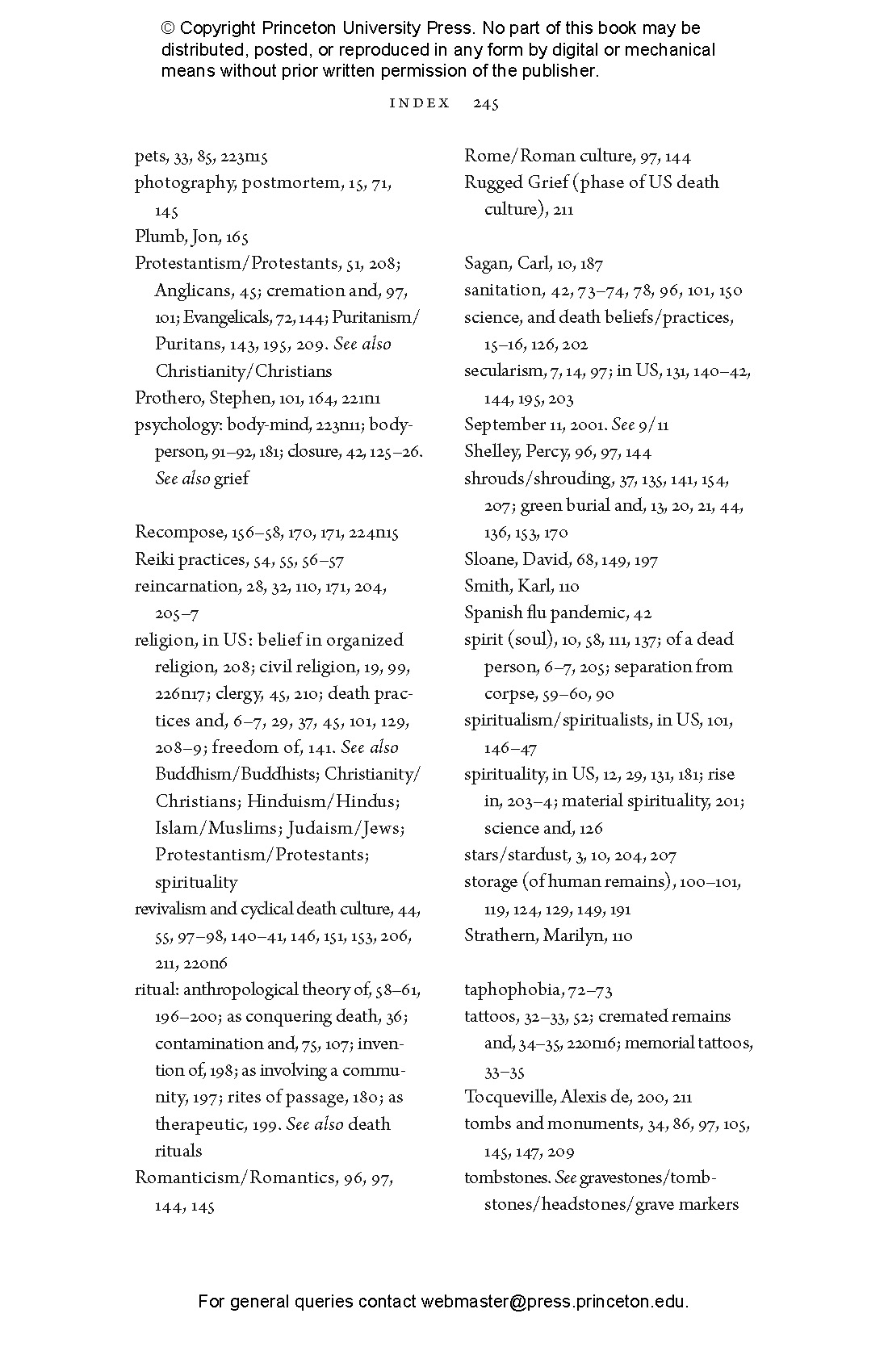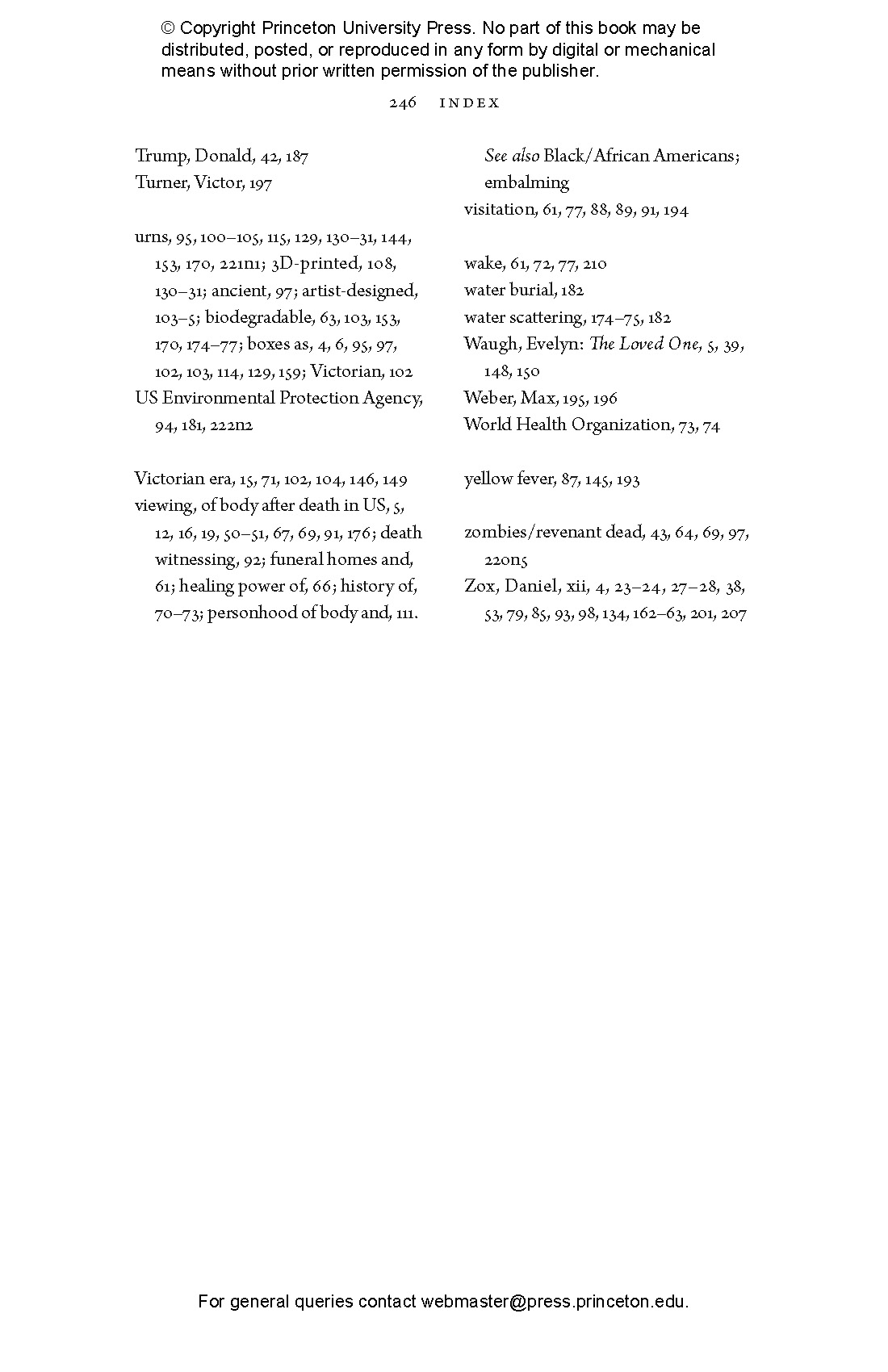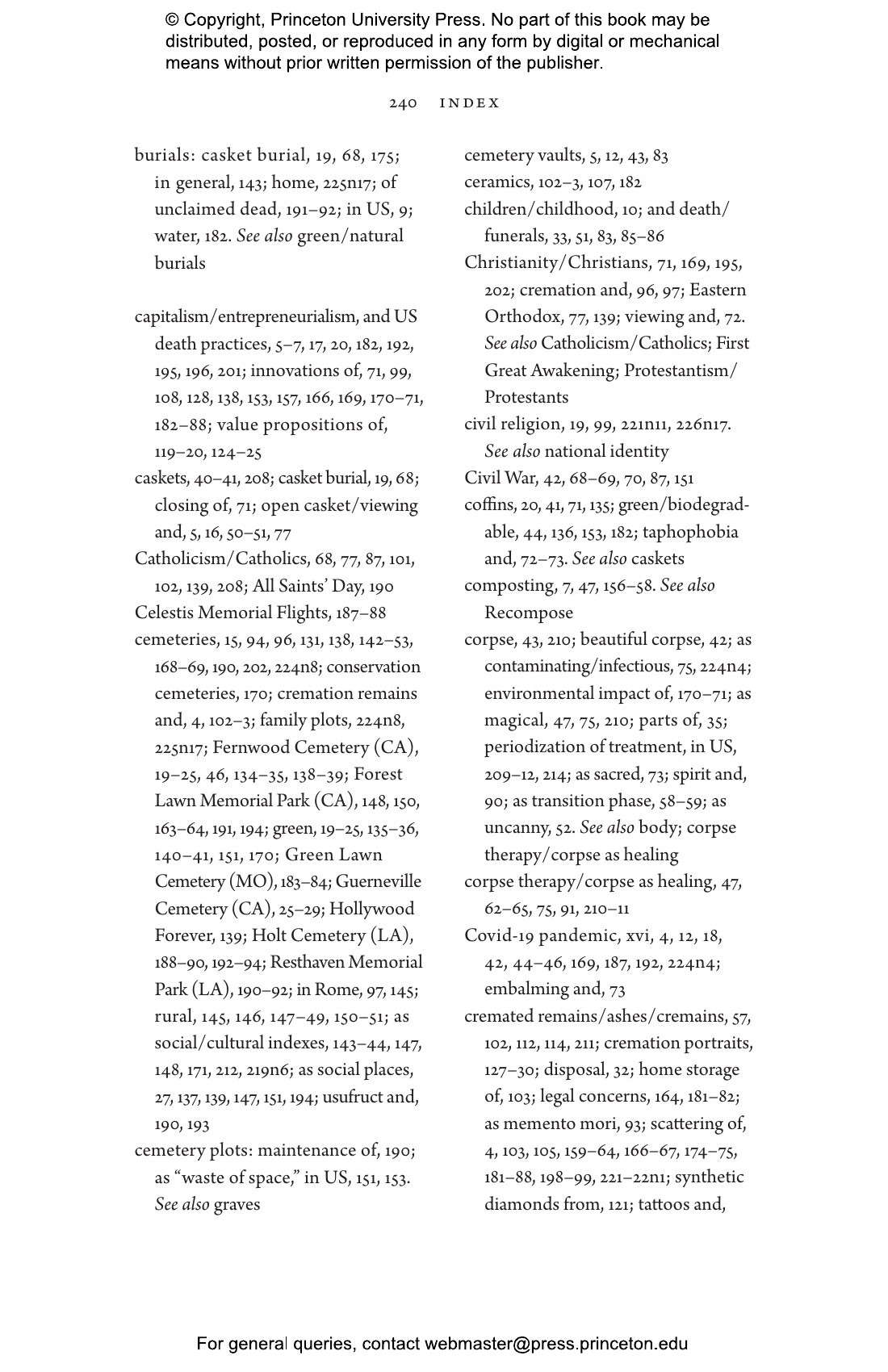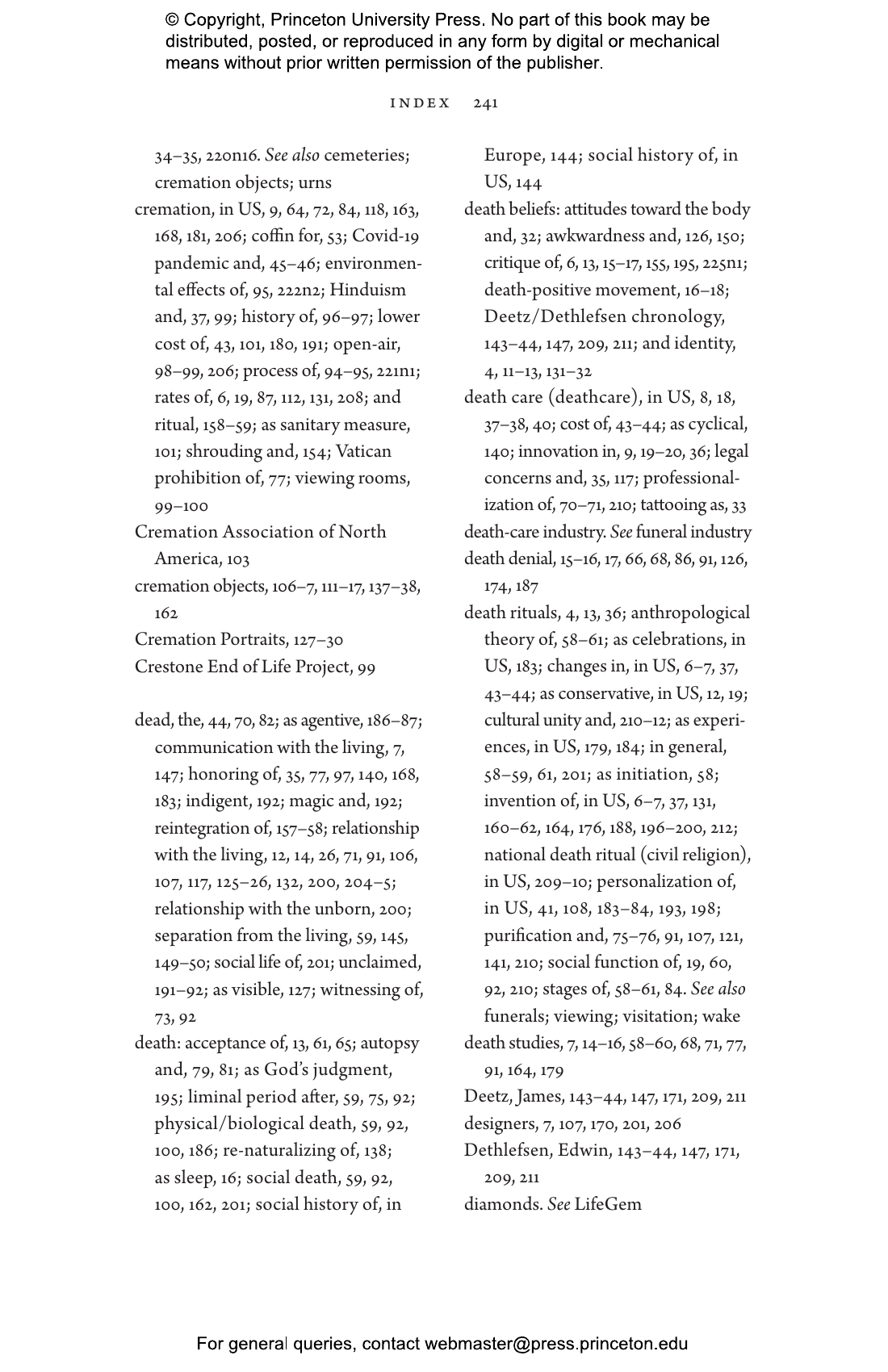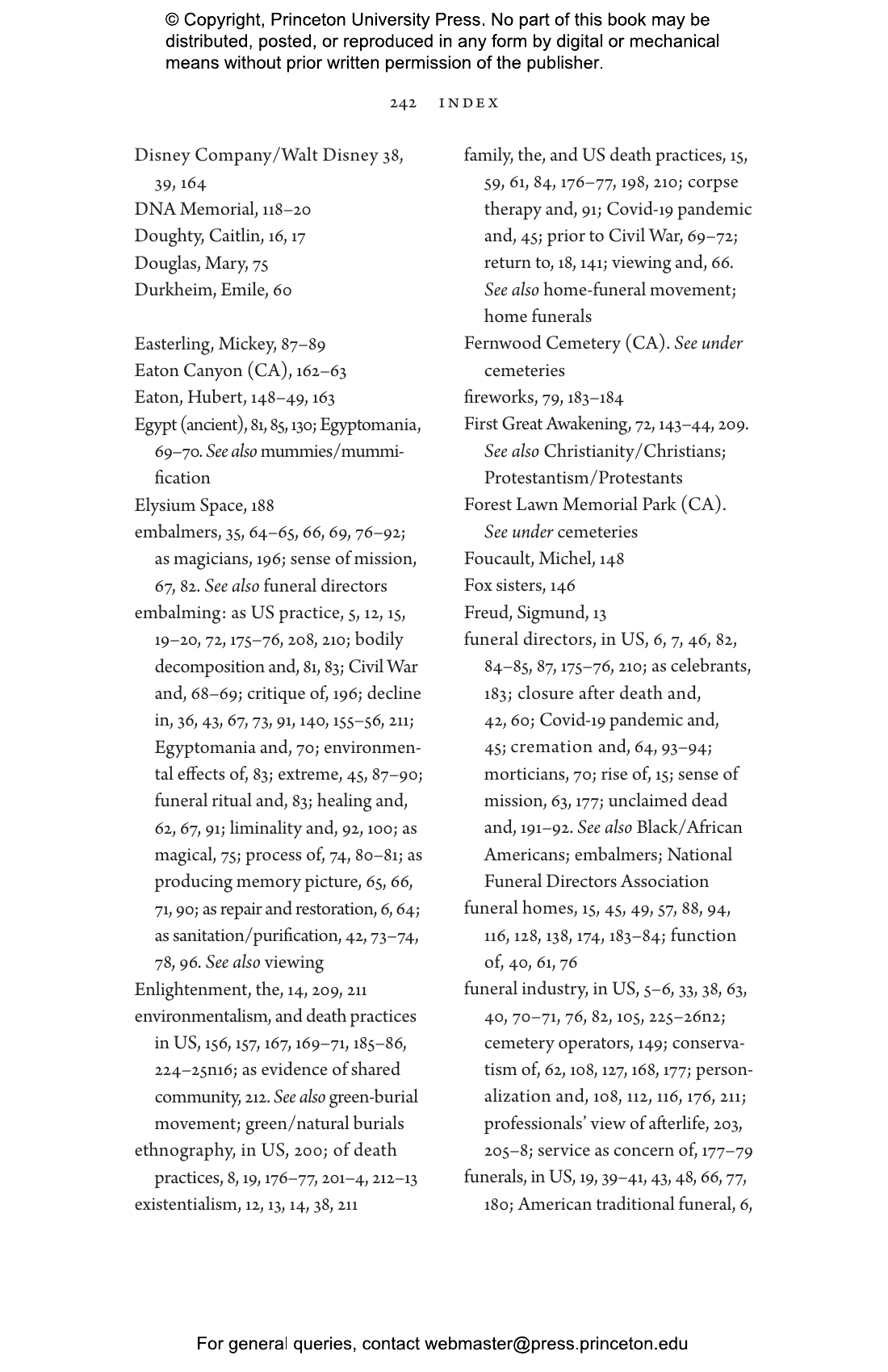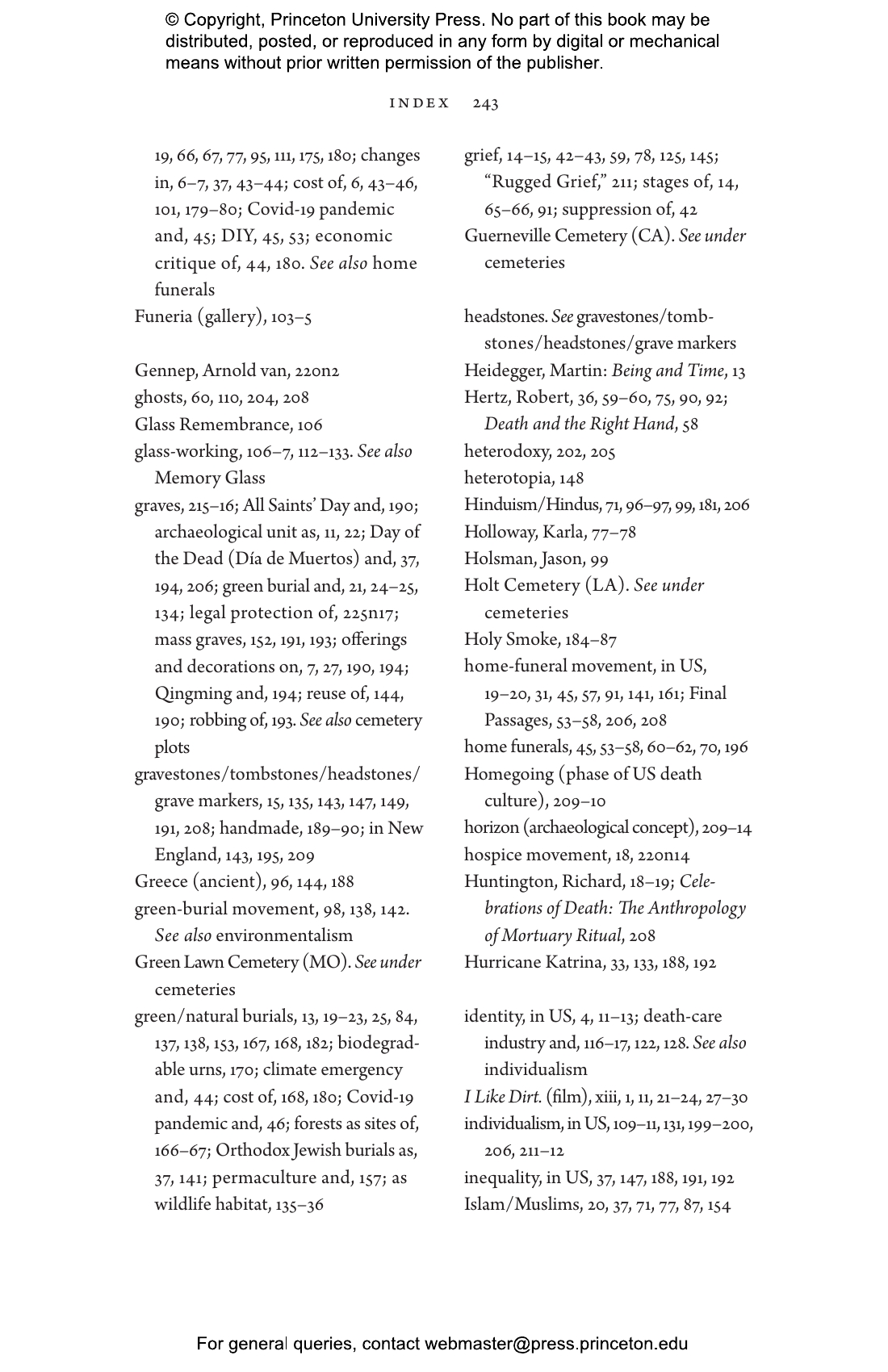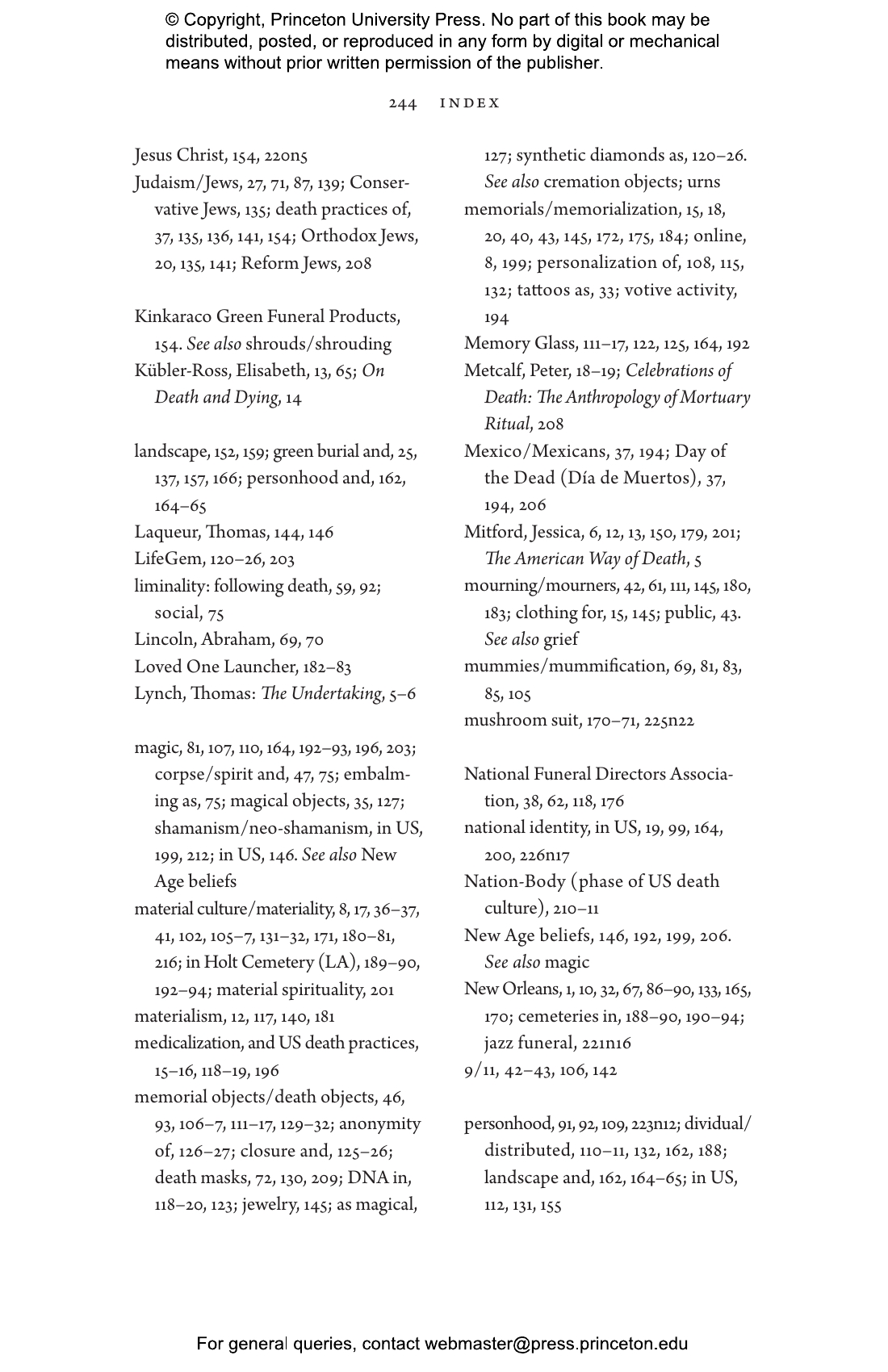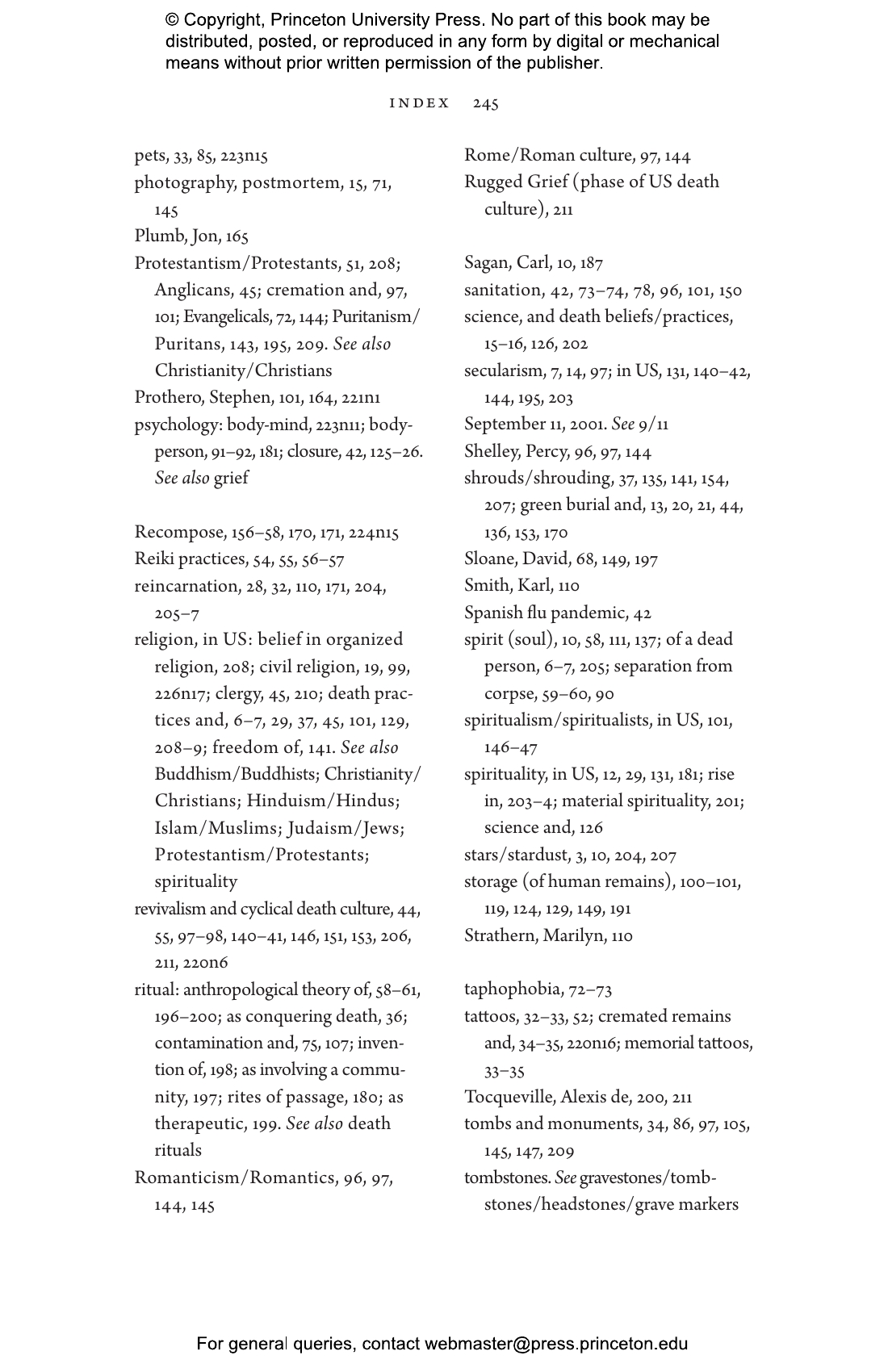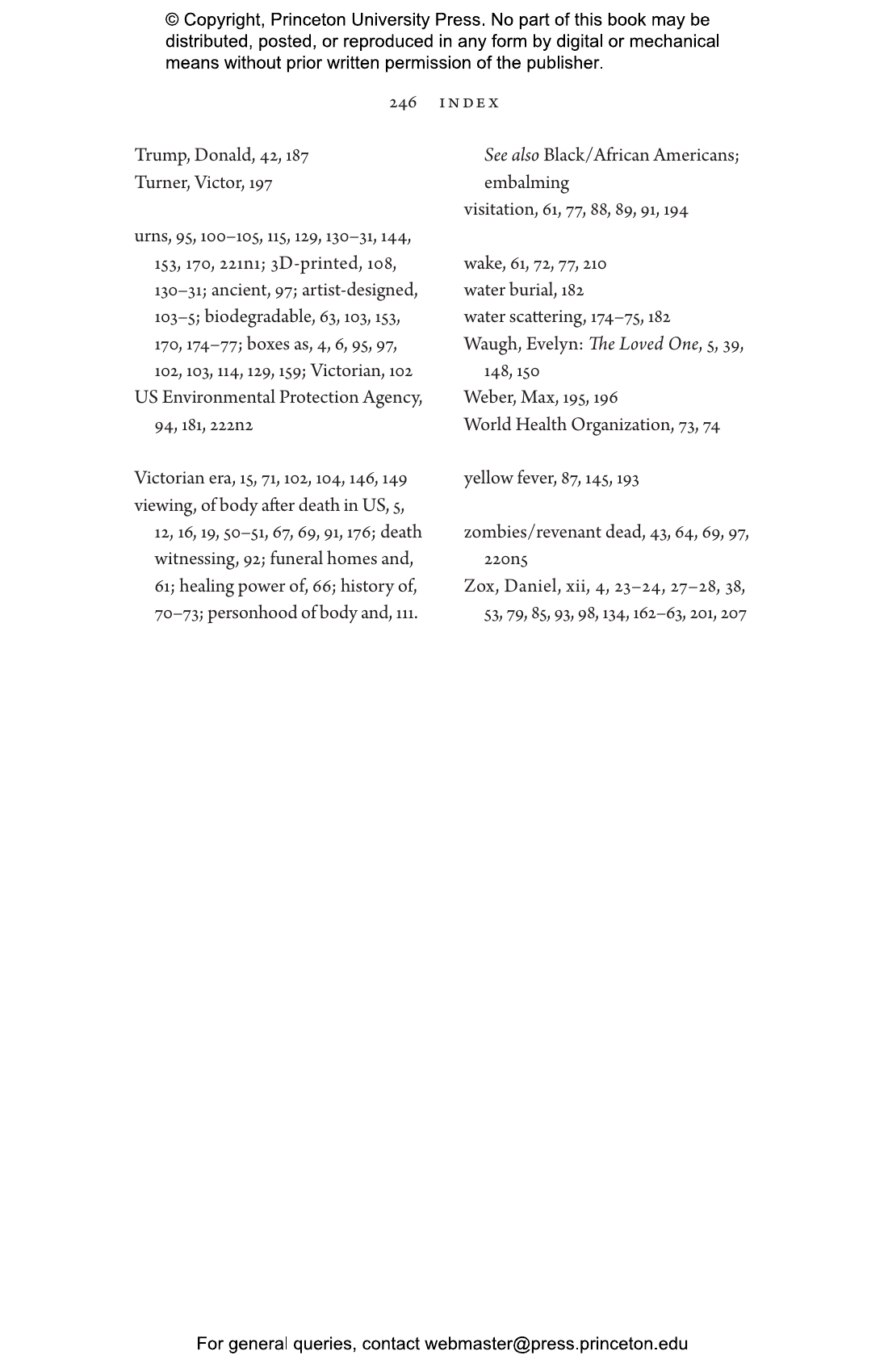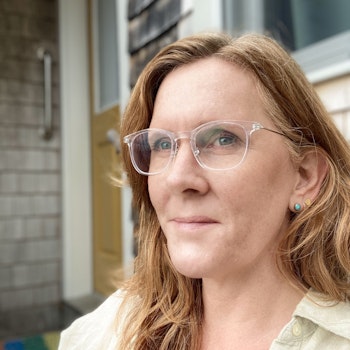Death in the United States is undergoing a quiet revolution. You can have your body frozen, dissected, composted, dissolved, or tanned. Your family can incorporate your remains into jewelry, shotgun shells, paperweights, and artwork. Cremations have more than doubled, and DIY home funerals and green burials are on the rise. American Afterlives is Shannon Lee Dawdy’s lyrical and compassionate account of changing death practices in America as people face their own mortality and search for a different kind of afterlife.
As an anthropologist and archaeologist, Dawdy knows that how a society treats its dead yields powerful clues about its beliefs and values. As someone who has experienced loss herself, she knows there is no way to tell this story without also reexamining her own views about death and dying. In this meditative and gently humorous book, Dawdy embarks on a transformative journey across the United States, talking to funeral directors, death-care entrepreneurs, designers, cemetery owners, death doulas, and ordinary people from all walks of life. What she discovers is that, by reinventing death, Americans are reworking their ideas about personhood, ritual, and connection across generations. She also confronts the seeming contradiction that American death is becoming at the same time more materialistic and more spiritual.
Written in conjunction with a documentary film project, American Afterlives features images by cinematographer Daniel Zox that provide their own testament to our rapidly changing attitudes toward death and the afterlife.
Awards and Recognition
- Finalist for the PROSE Award in Cultural Anthropology and Sociology, Association of American Publishers
"Touching and beautifully written."—Rosemarie Szostak, Science
"Fascinating. . . . American Afterlives describes an extraordinary array of approaches to celebrate — and remember — the dead."—Glenn C. Altschuler, Psychology Today
"It’s hard to make death sexy, but Shannon Lee Dawdy manages to do just that in her fascinating new book about changing practices in American death care and what they can tell us about American society today. . . . Dawdy’s style is playful and somewhat experimental. . . . [A] a highly imaginative, engrossing book about a difficult topic."—Mara Buchbinder, American Ethnologist
"A personable book notable for its affection for life, the richness of American culture and the brief, baffling experience of living as a human."—Algernon D’Ammassa, Las Cruces Sun-News
"A fast-moving look at what happens to bodies today—embalming, cremation, gravestones, pendants with ashes, etc. She sees no lack of faith but more 'eclectic, syncretic, speculative, woo-woo, and whackadoo belief.'"—Marvin Olasky, World
“We historians can only dream of having the sort of reflective, generous, and multivoiced account of how people of the past confronted death that Shannon Lee Dawdy bequeaths to the present and future. When those who come after us try to understand the cultural changes in early twenty-first-century America, they will turn to this book.”—Thomas W. Laqueur, author of The Work of the Dead: A Cultural History of Mortal Remains
“A marvelous guide to the afterlife. Written with the vivid curiosity of an anthropologist and the talent of a storyteller, this tale is a prompt to the already rich imagination of the disposition of the American body. In the end (the real one), it appears that we think often and artfully about the where and how of our remains. Shannon Lee Dawdy looks deep where angels don’t fear to tread.”—Andrei Codrescu, coeditor of Thus Spake the Corpse: An Exquisite Corpse Reader, 1988–1998
“This is a profound and moving piece of scholarship. Shannon Lee Dawdy has given us a book that tacks between the physical and the metaphysical in her journeys across the United States, setting out the new ways in which Americans are thinking about death, disposition, and what comes after.”—Matthew Engelke, author of How to Think like an Anthropologist
“A true pleasure to read. In American Afterlives, we hear the voice of an author who, through compassion and genuine curiosity, seeks a deeper understanding of how contemporary Americans handle and make sense of death. This book reads like a love letter, not only to the many individuals it portrays, but also to a vulnerable and wild grassroots America.”—Liv Nilsson Stutz, coeditor of The Oxford Handbook of the Archaeology of Death and Burial
